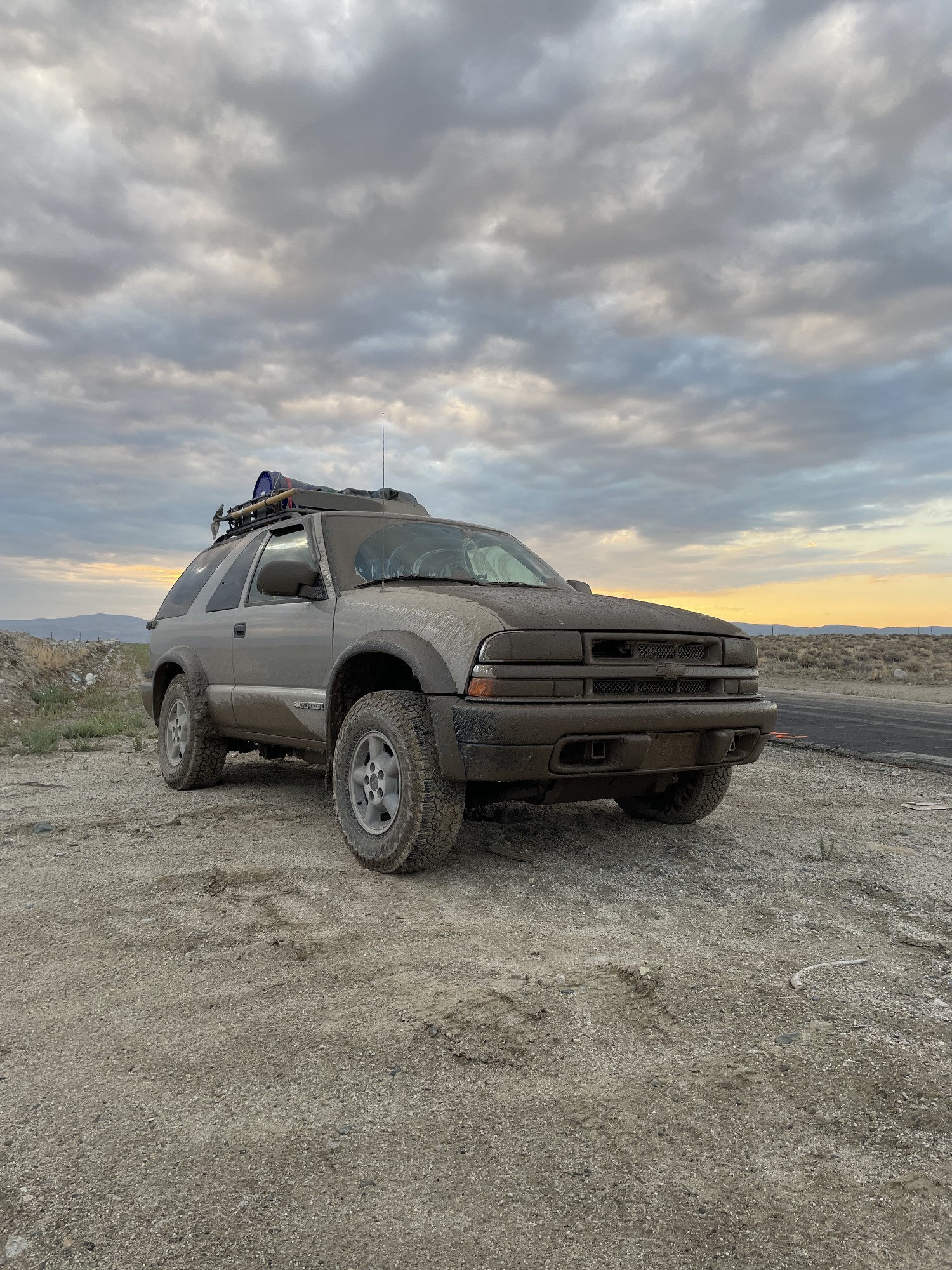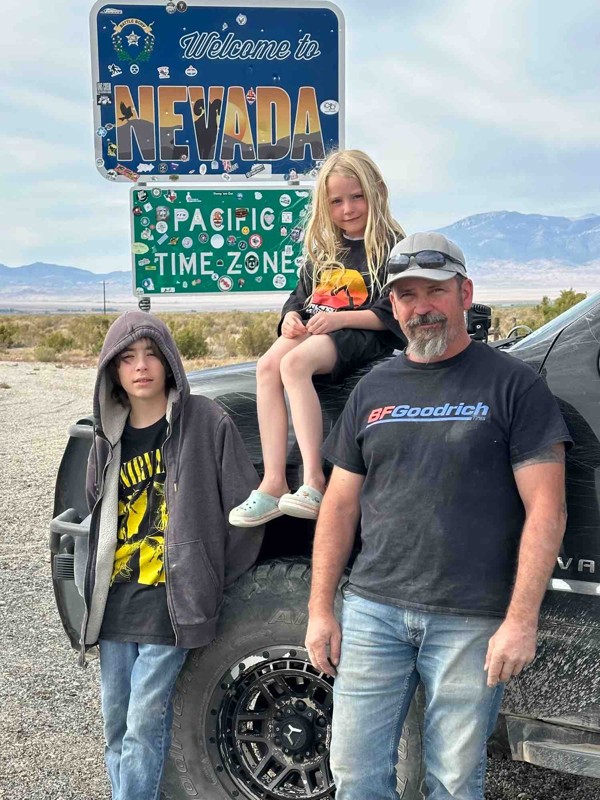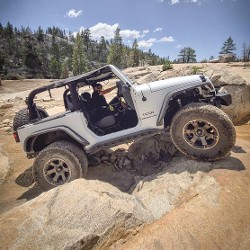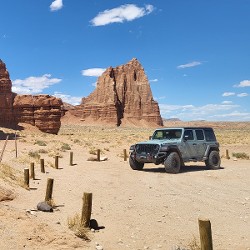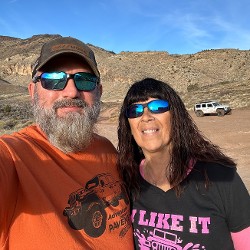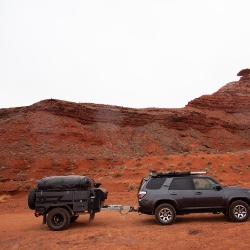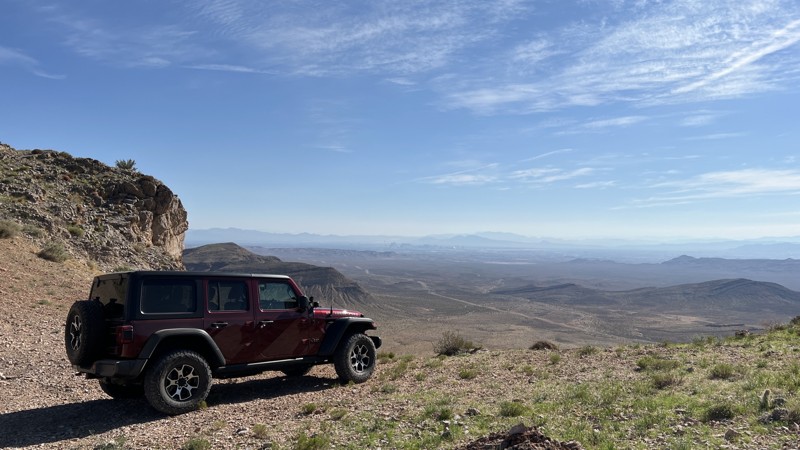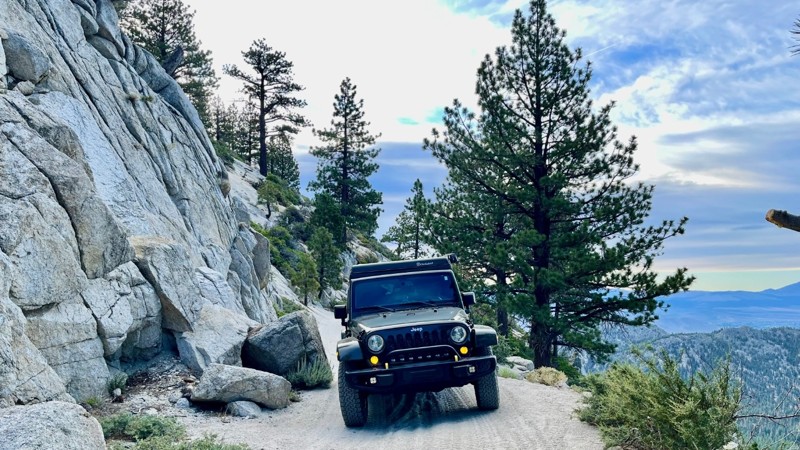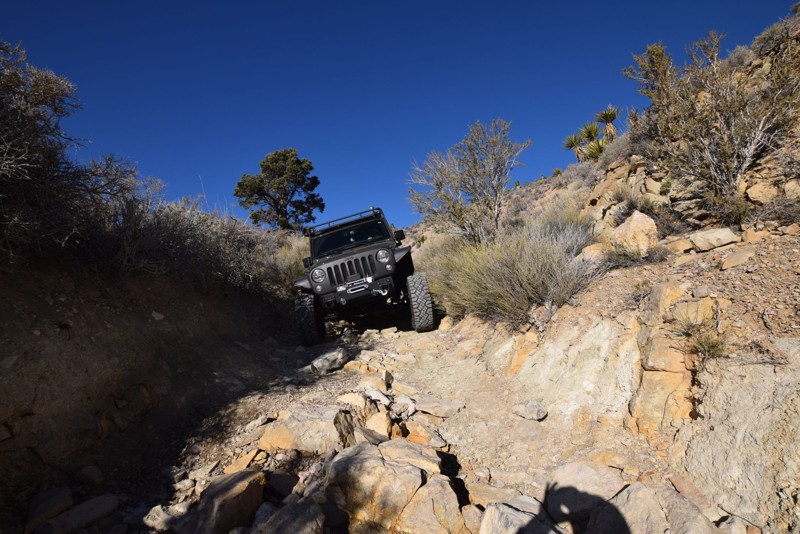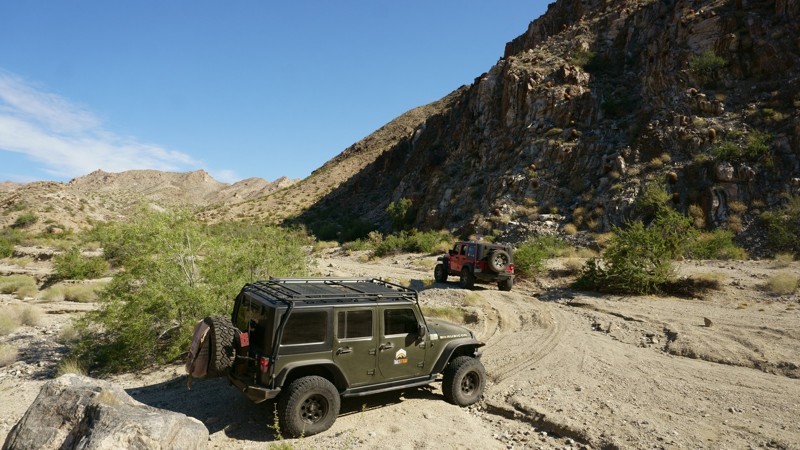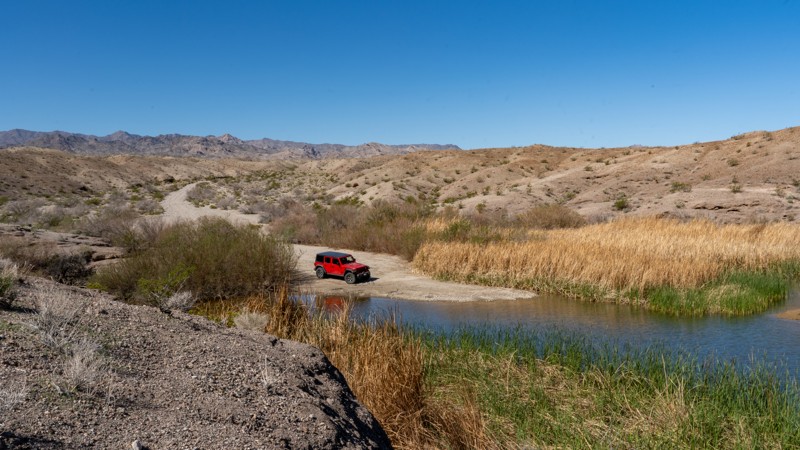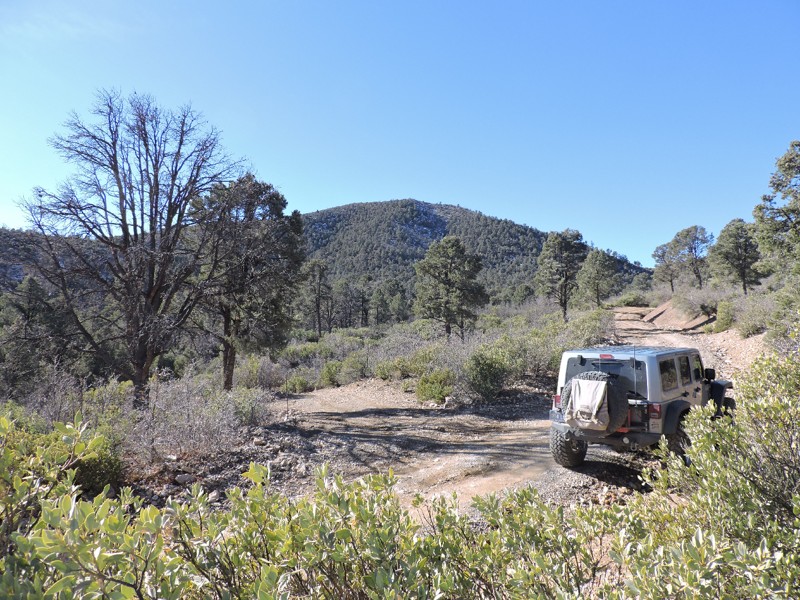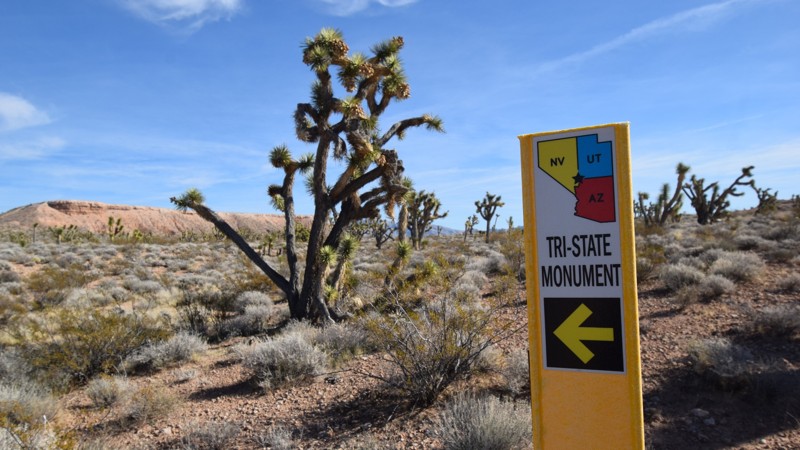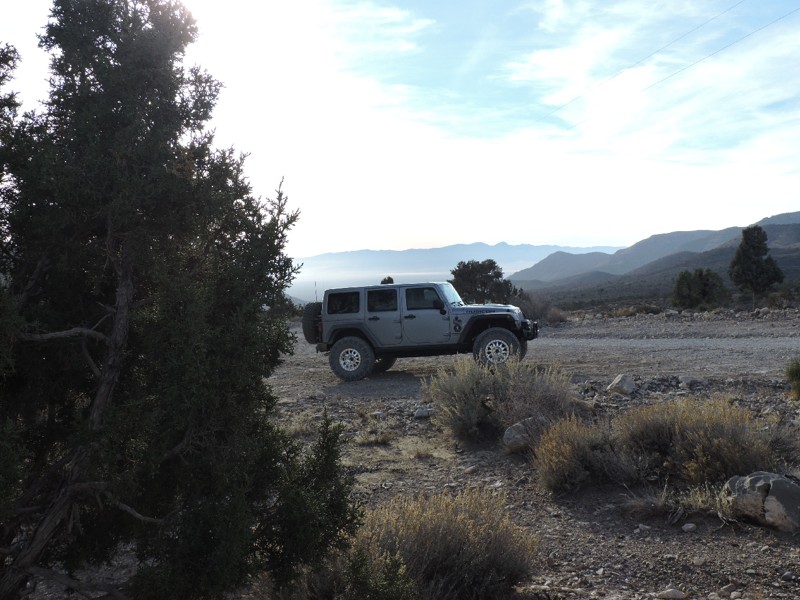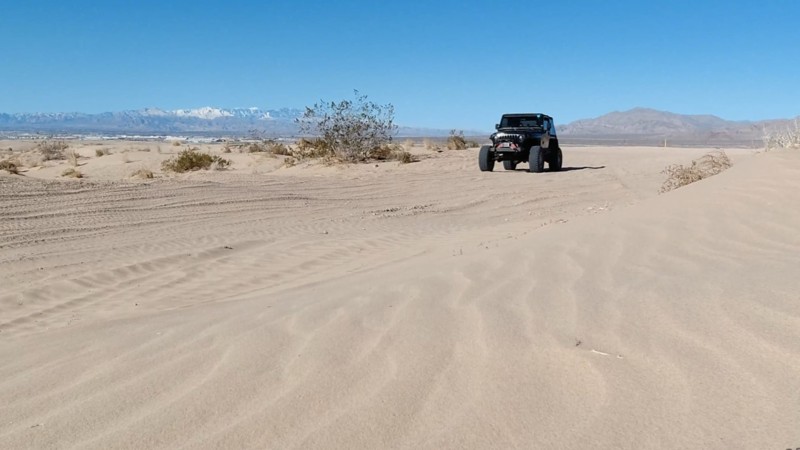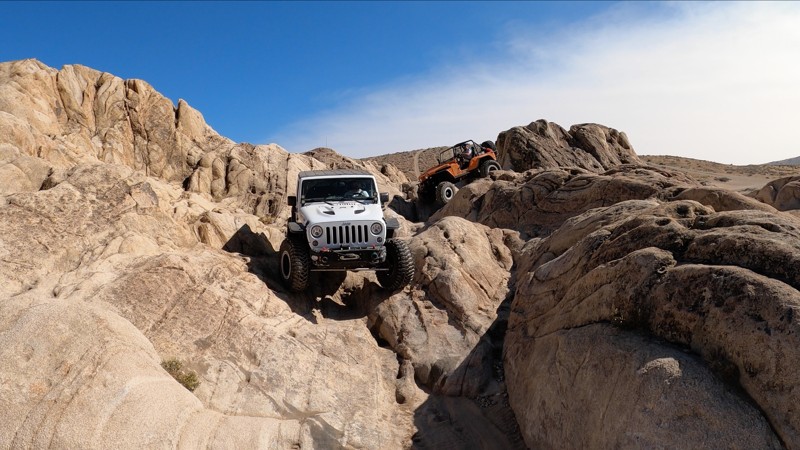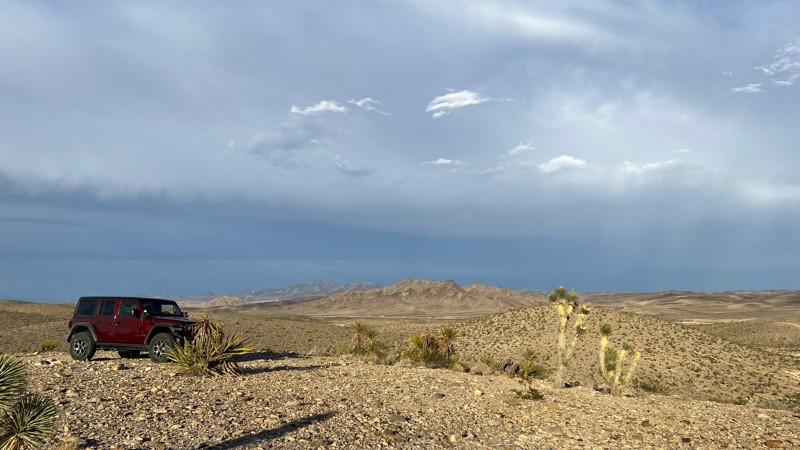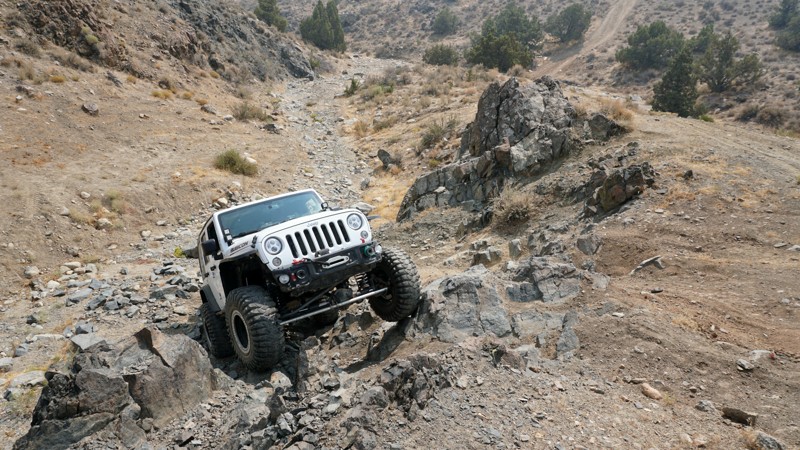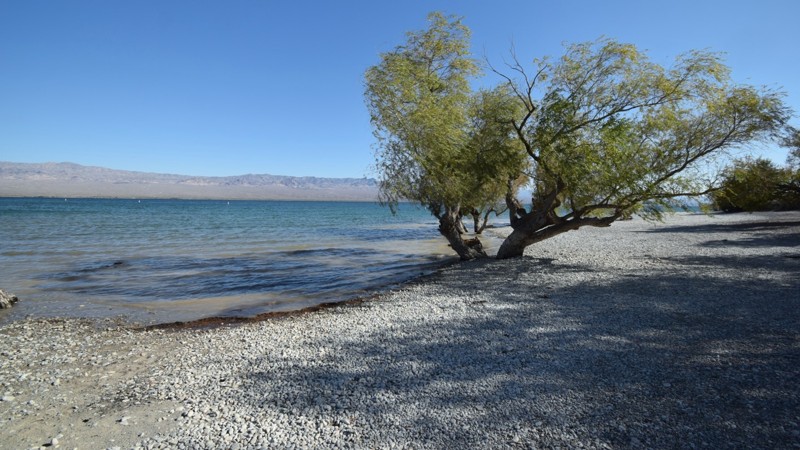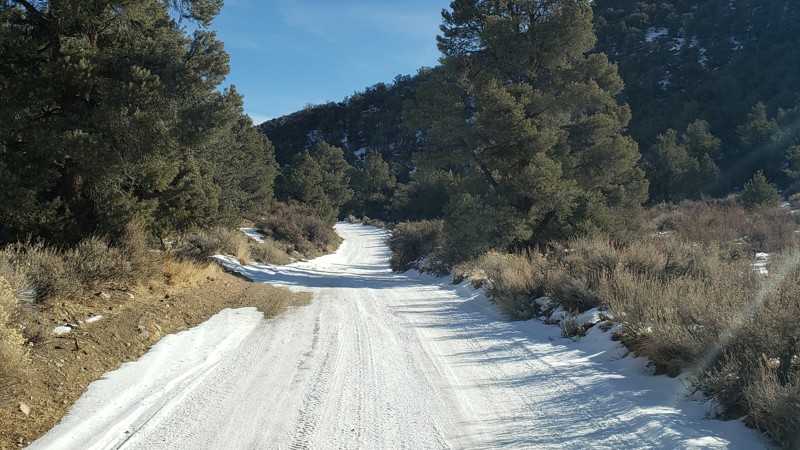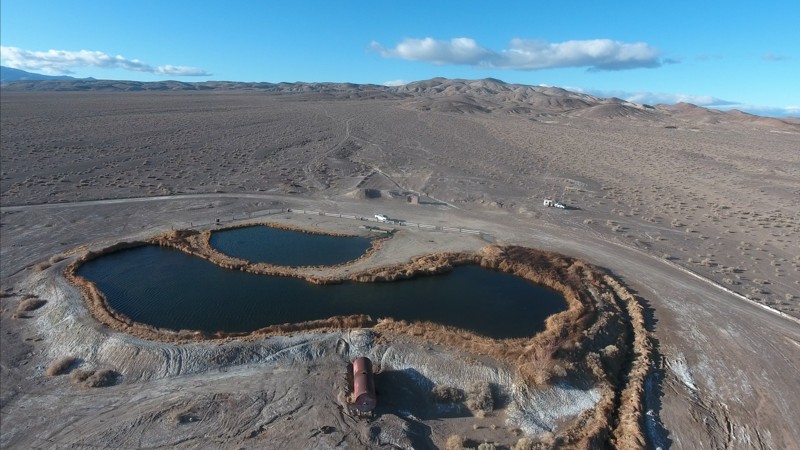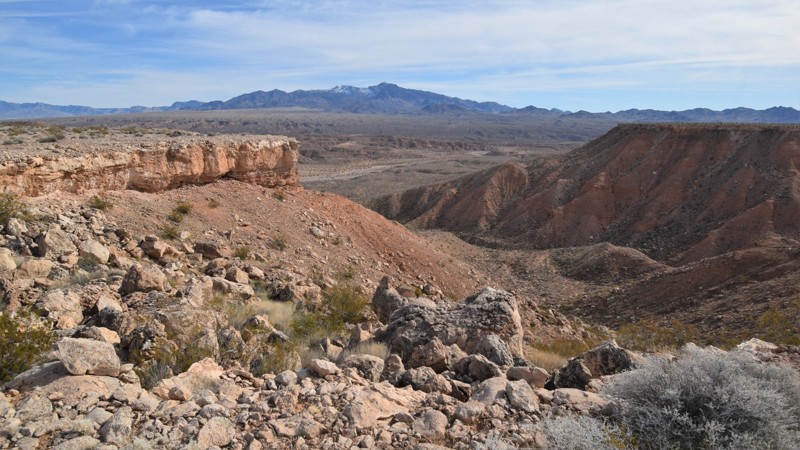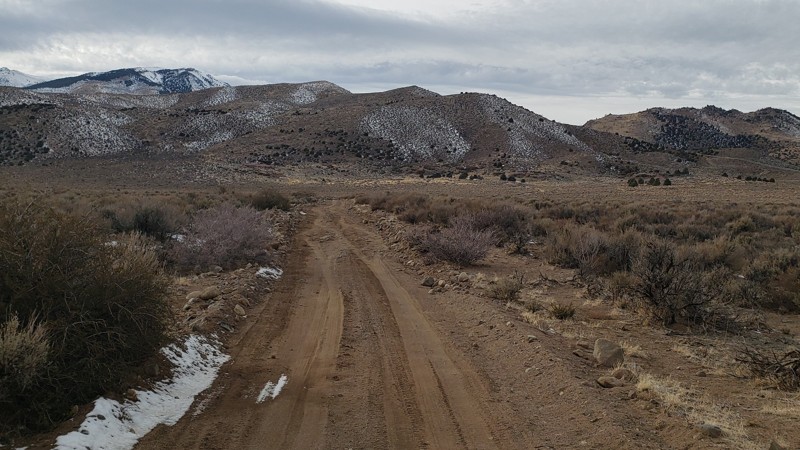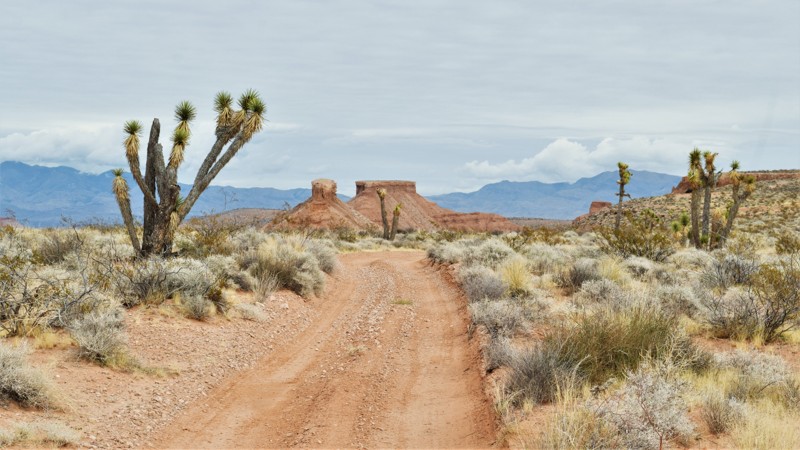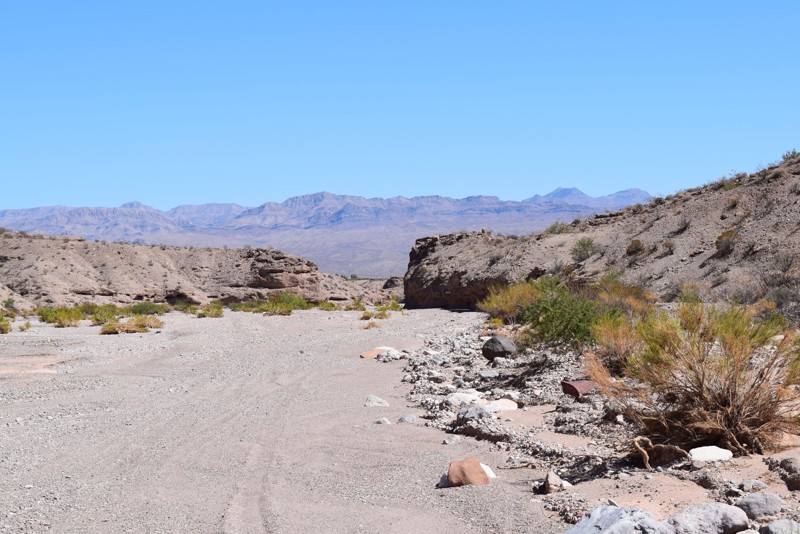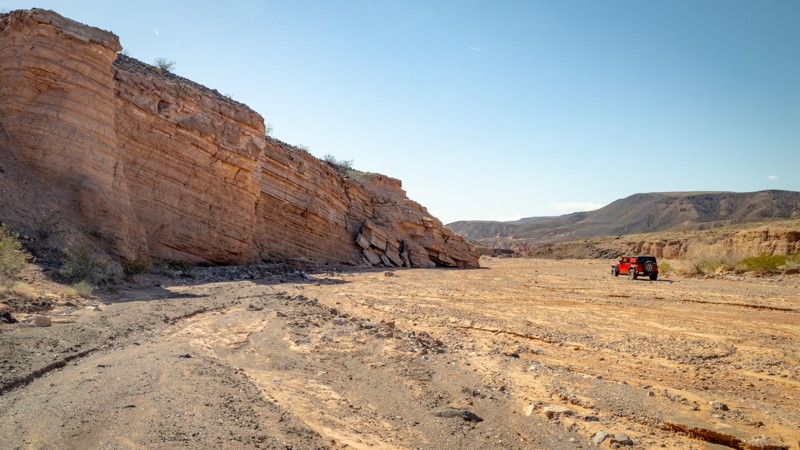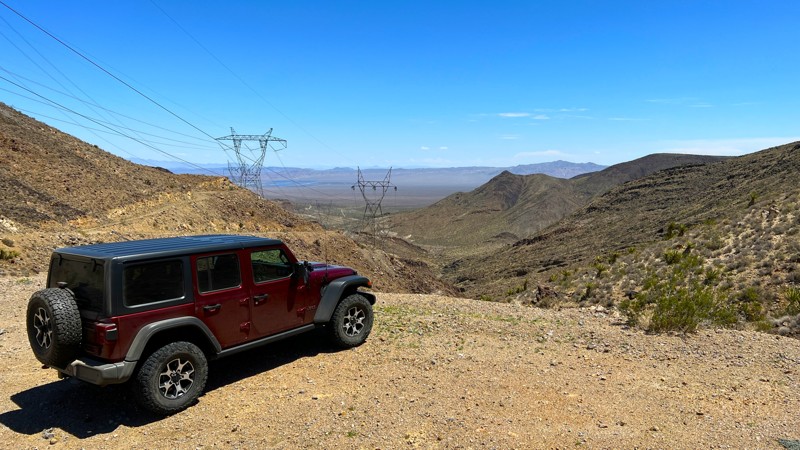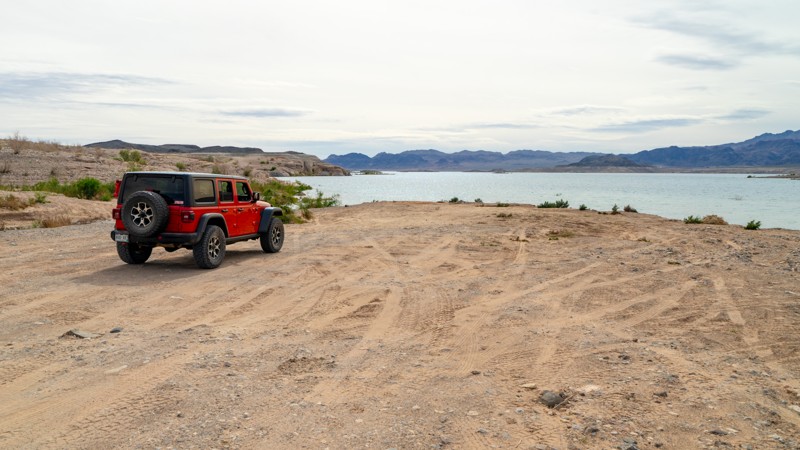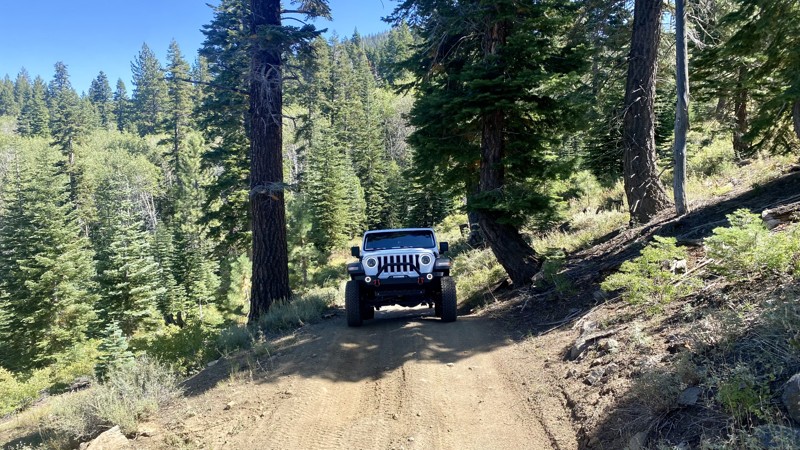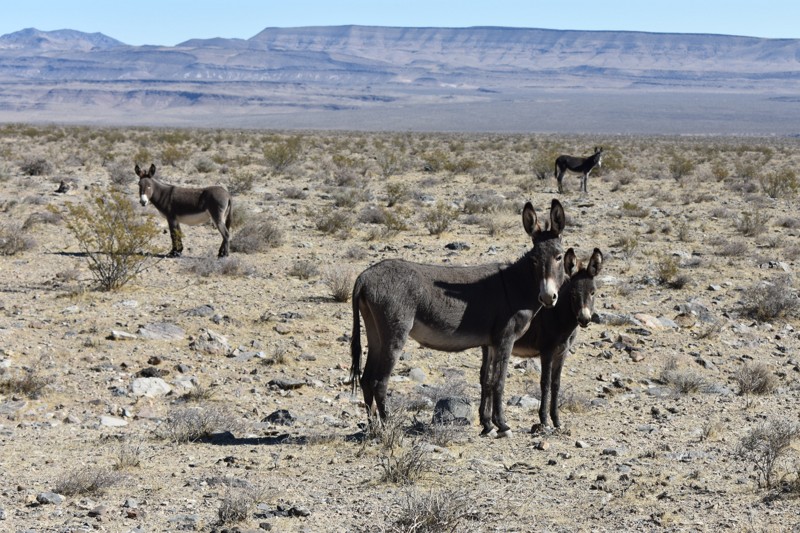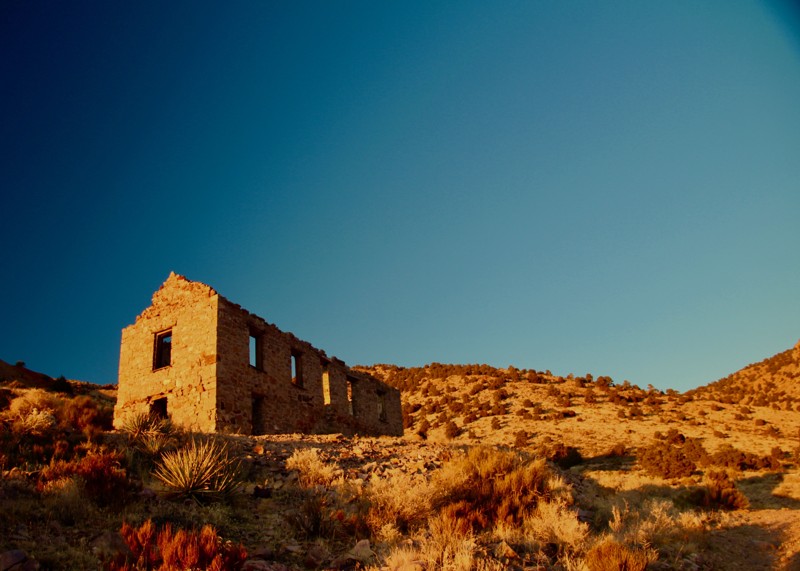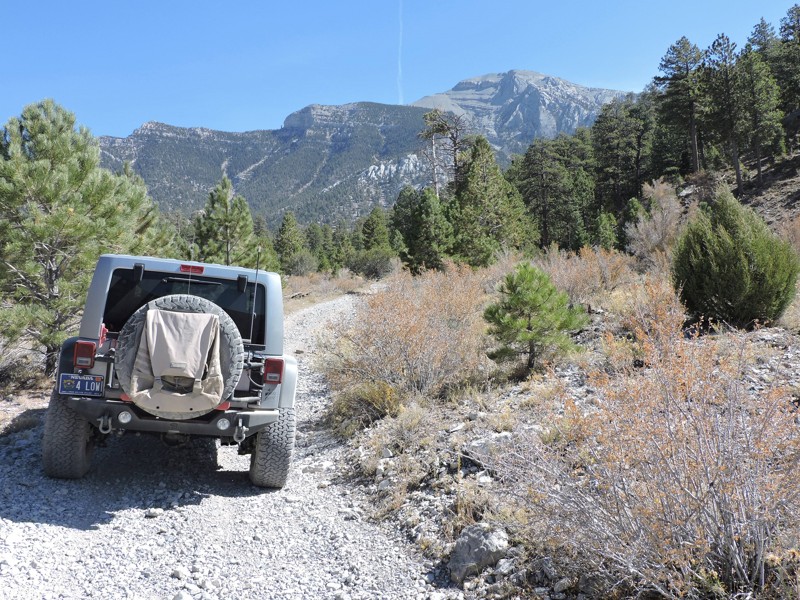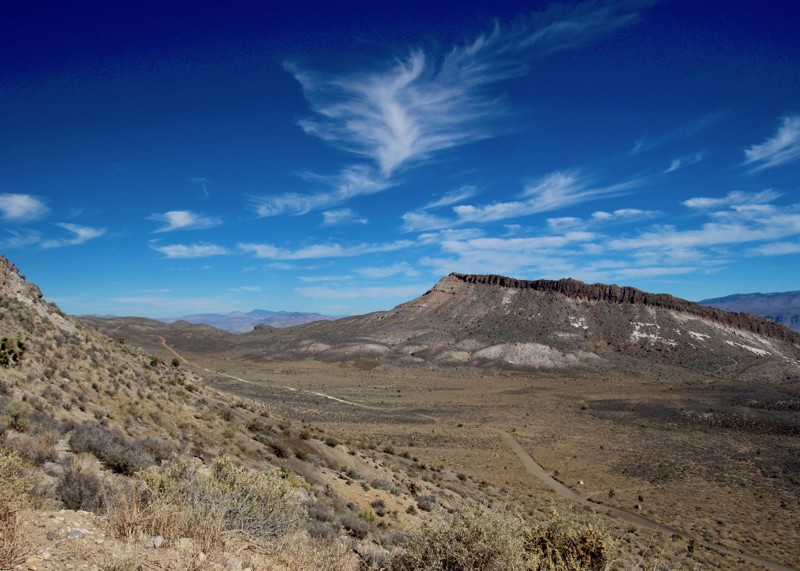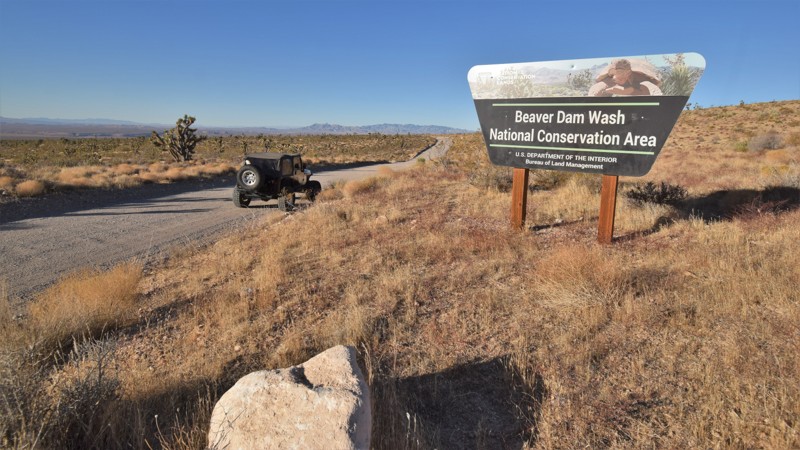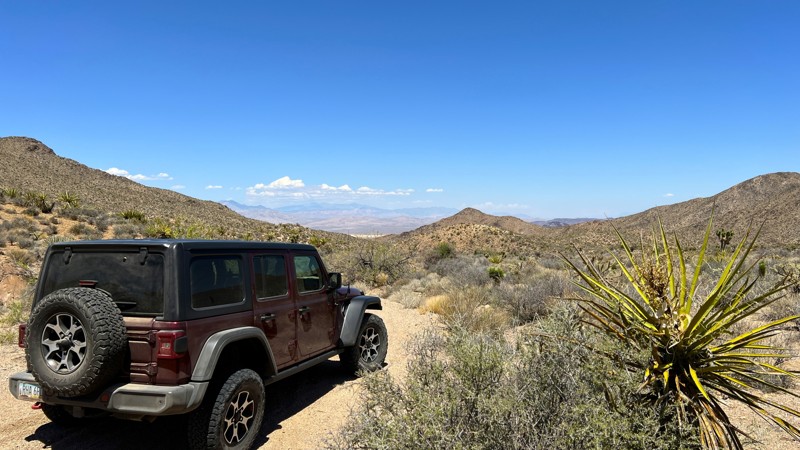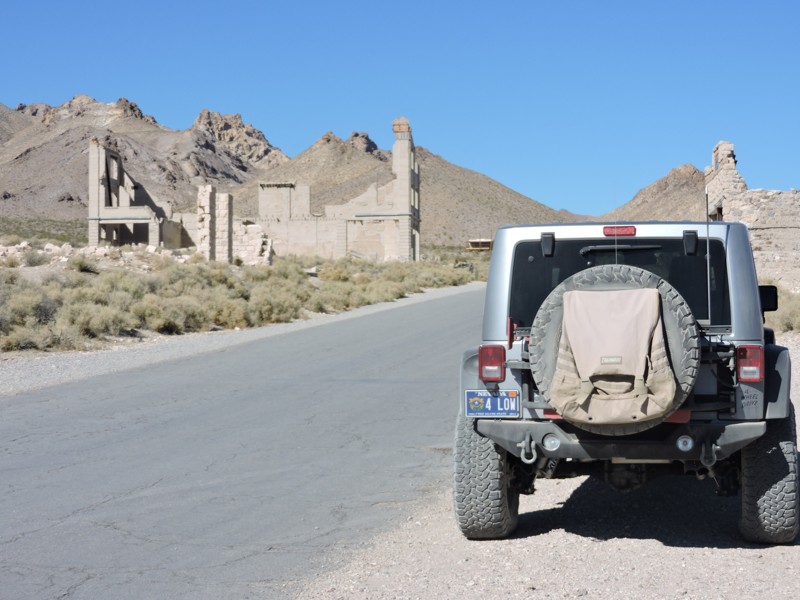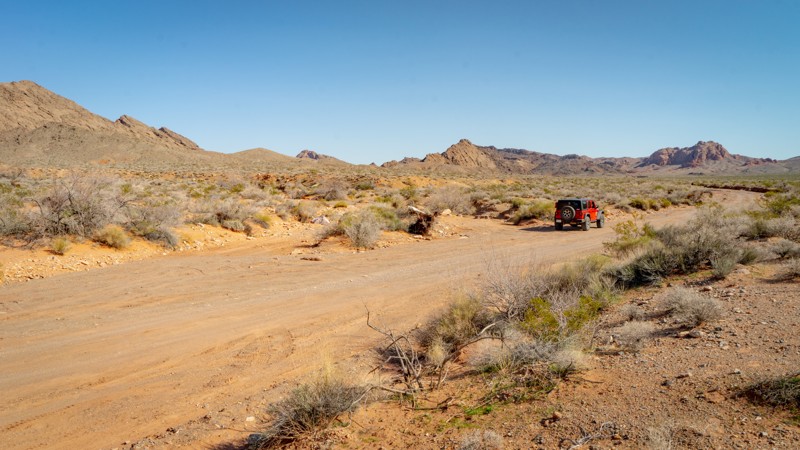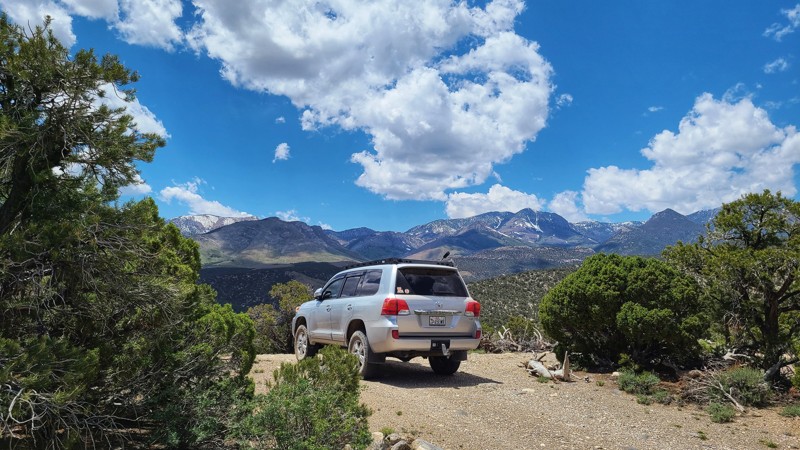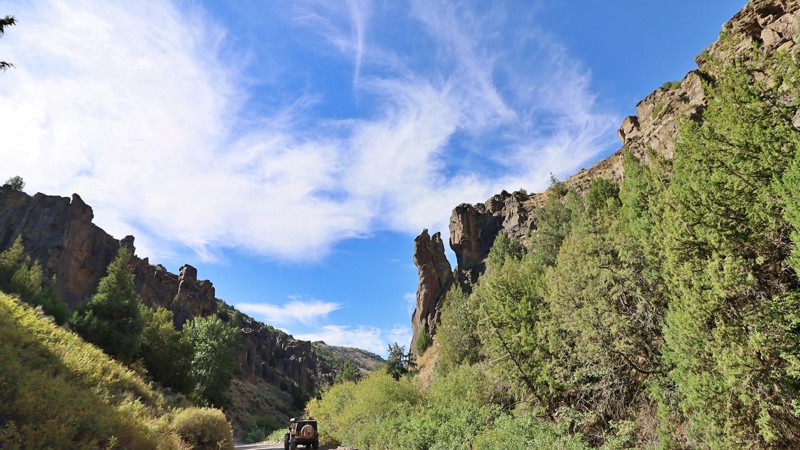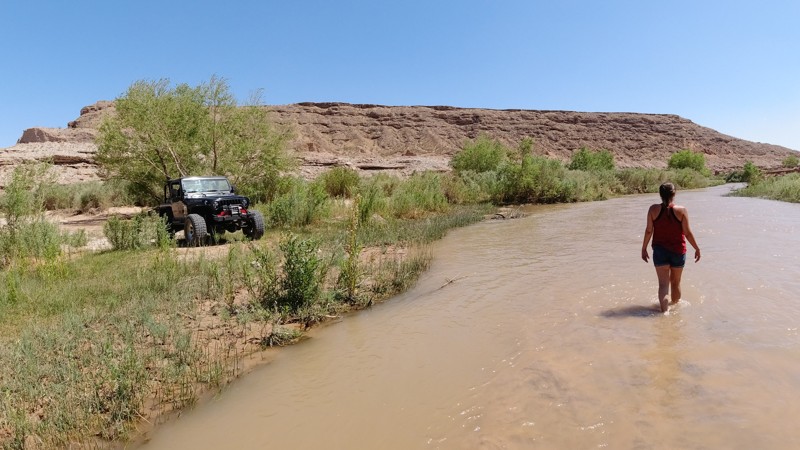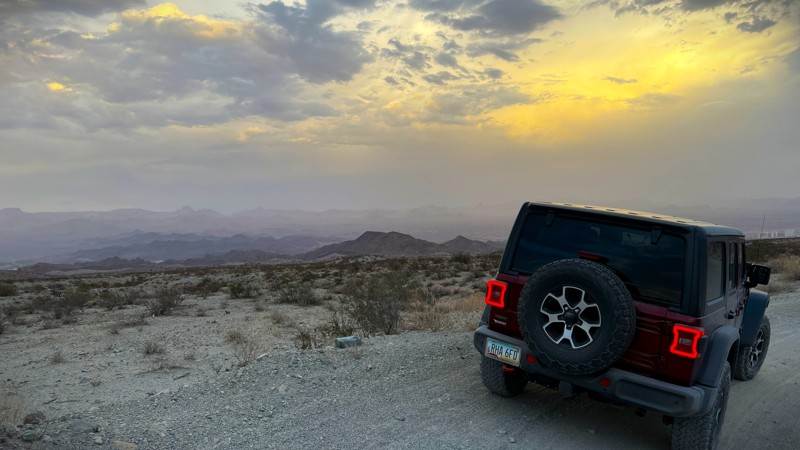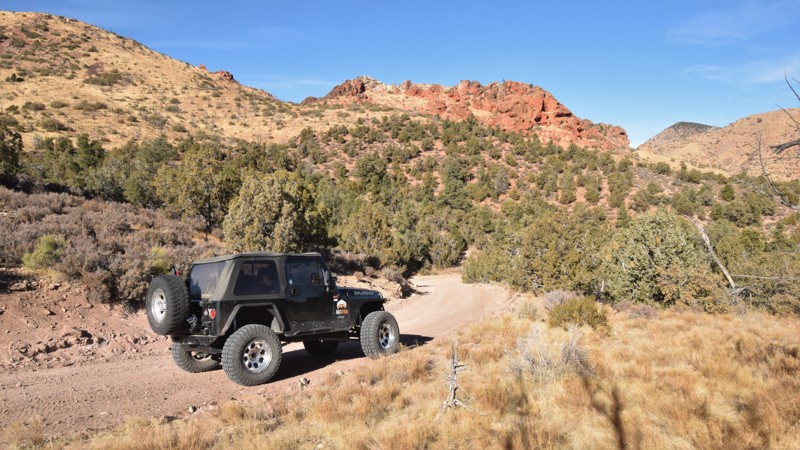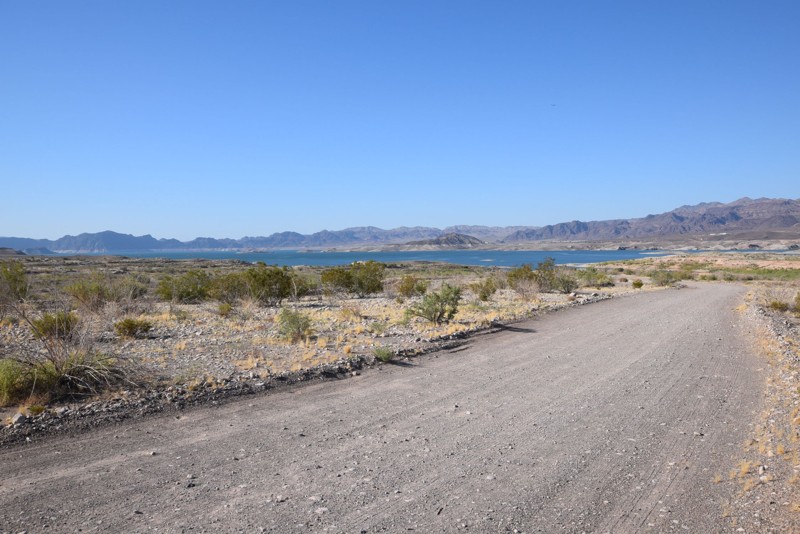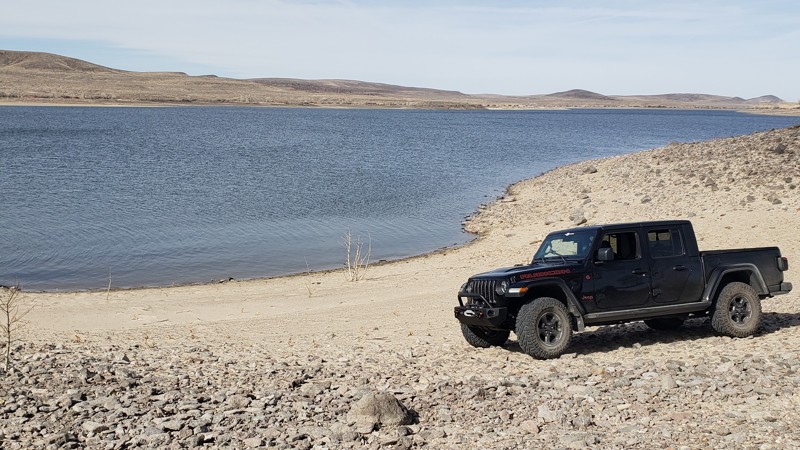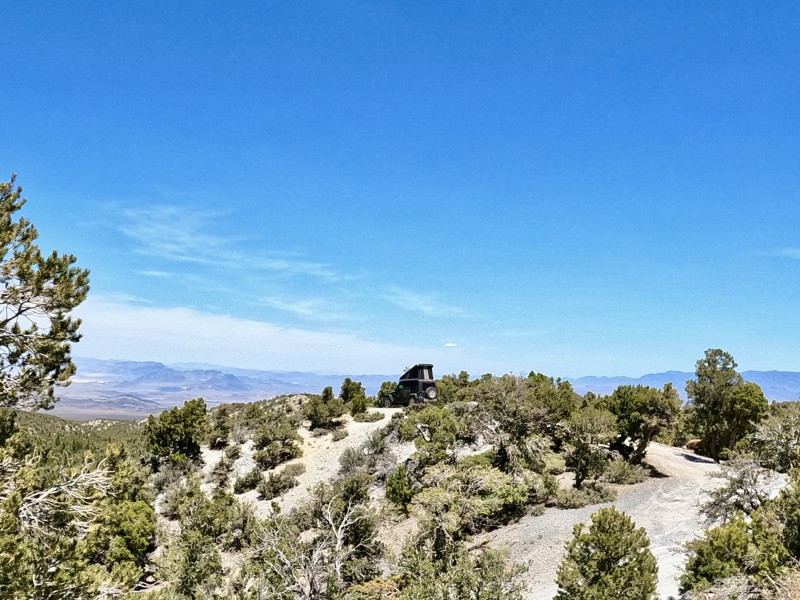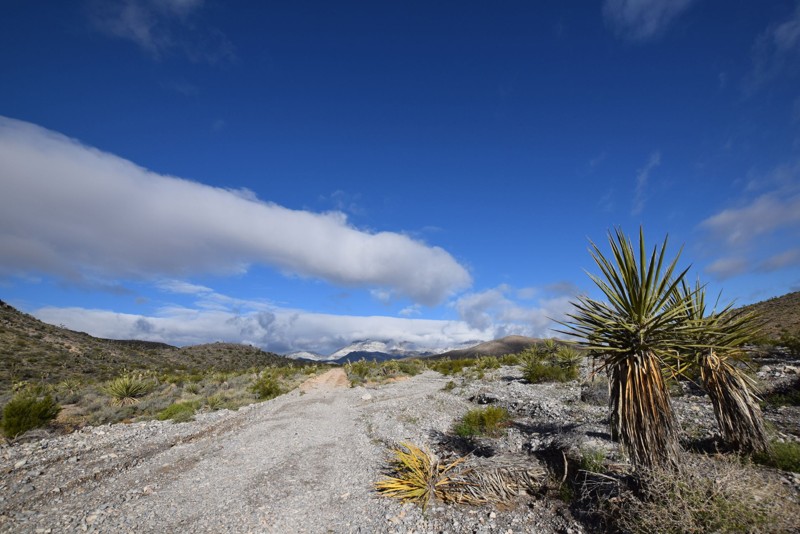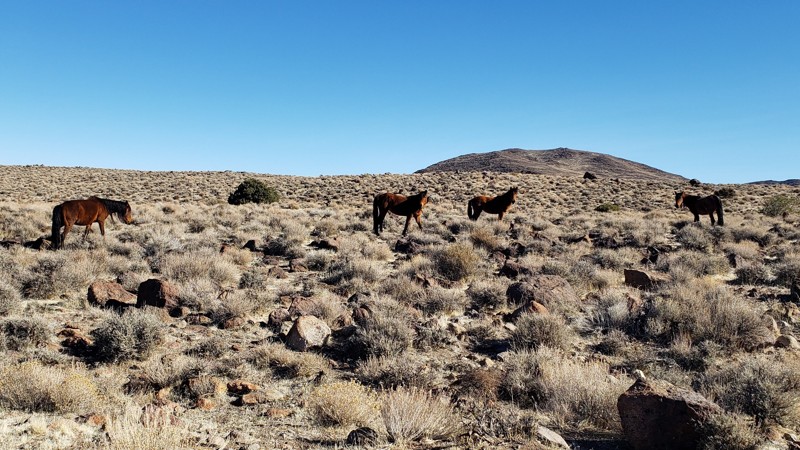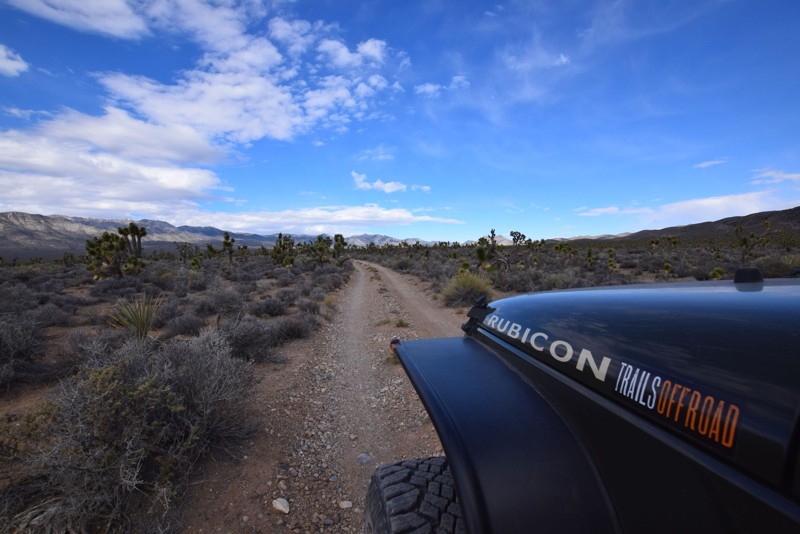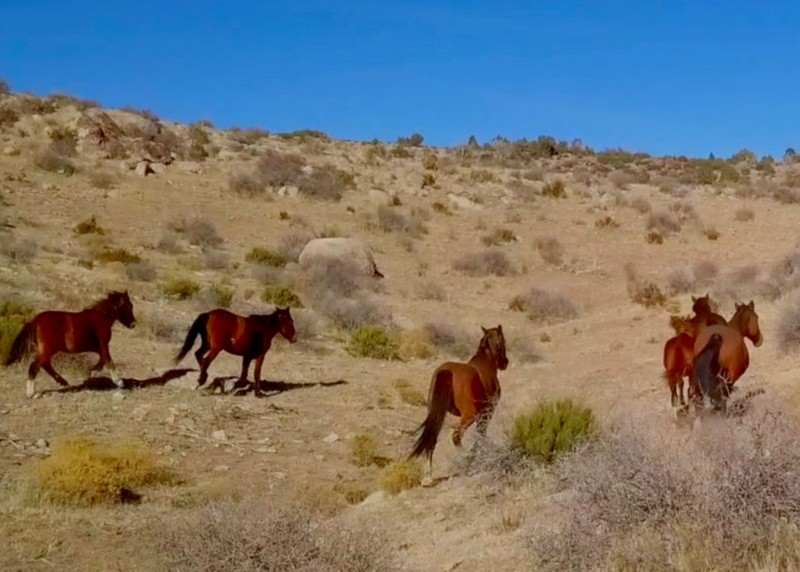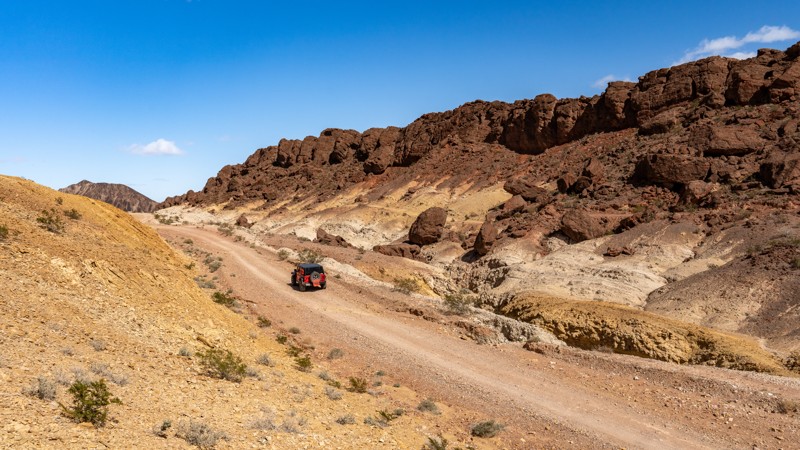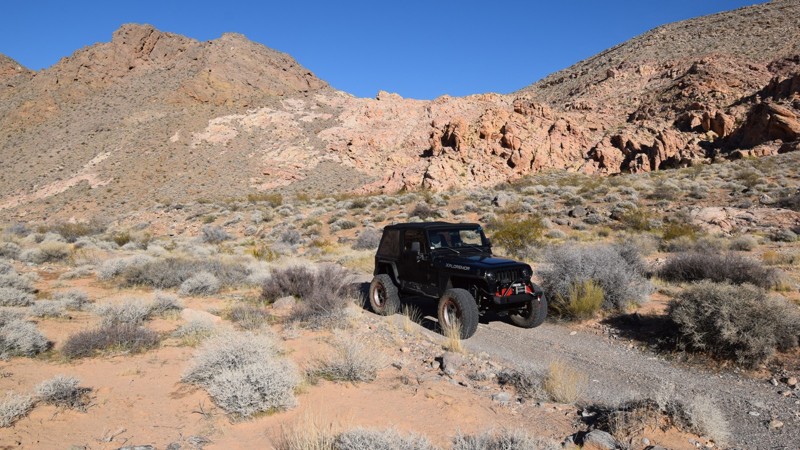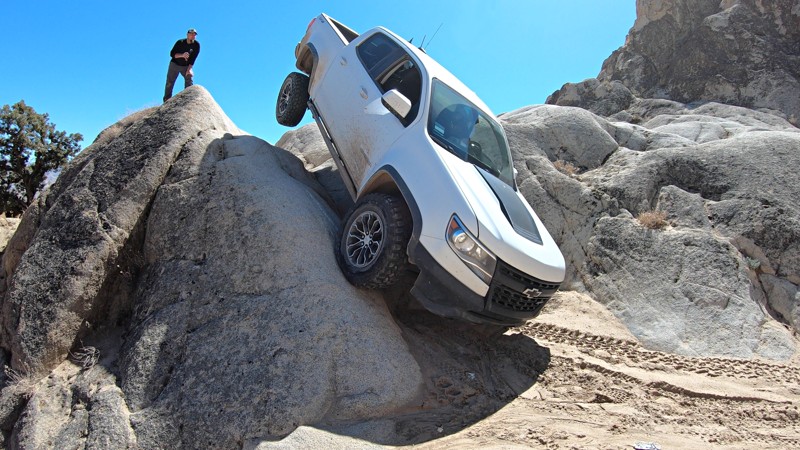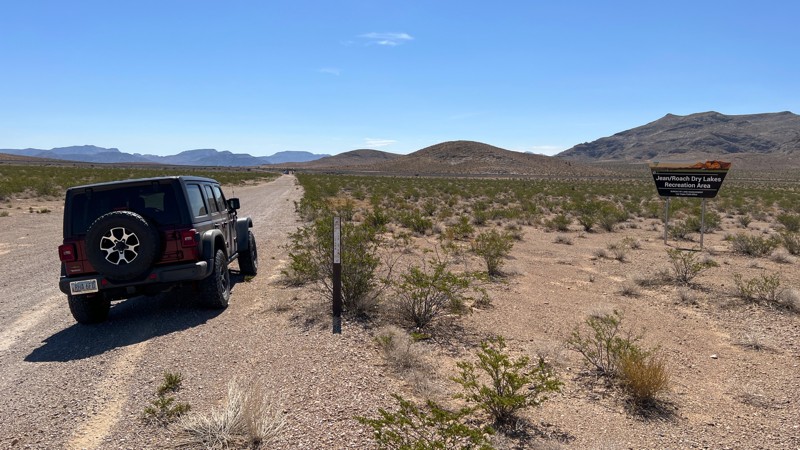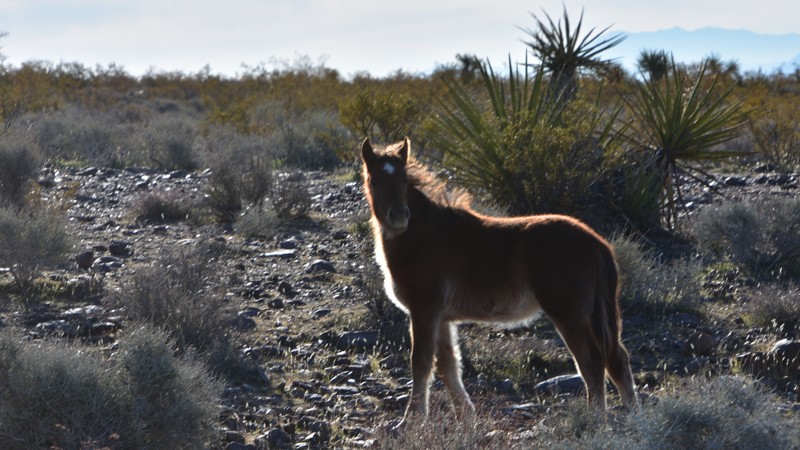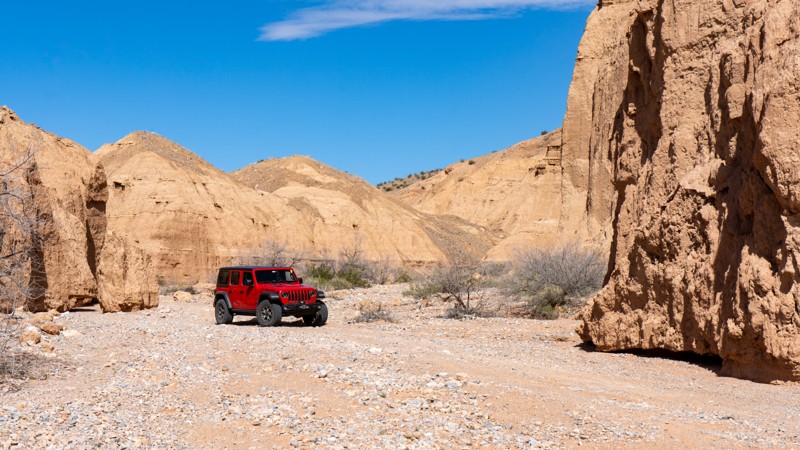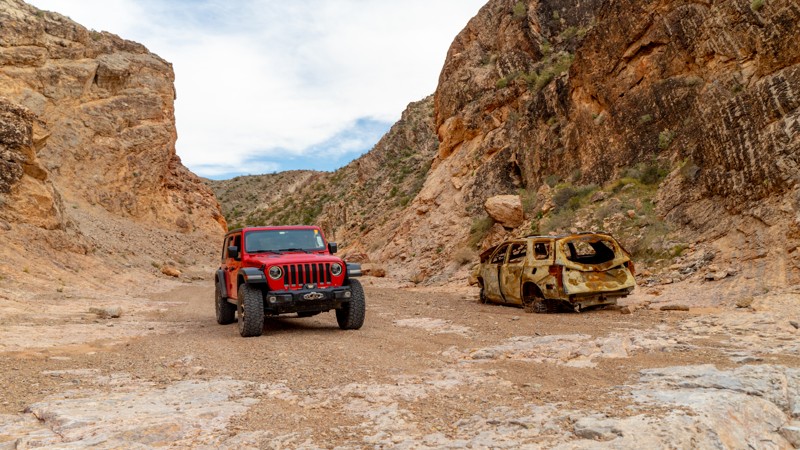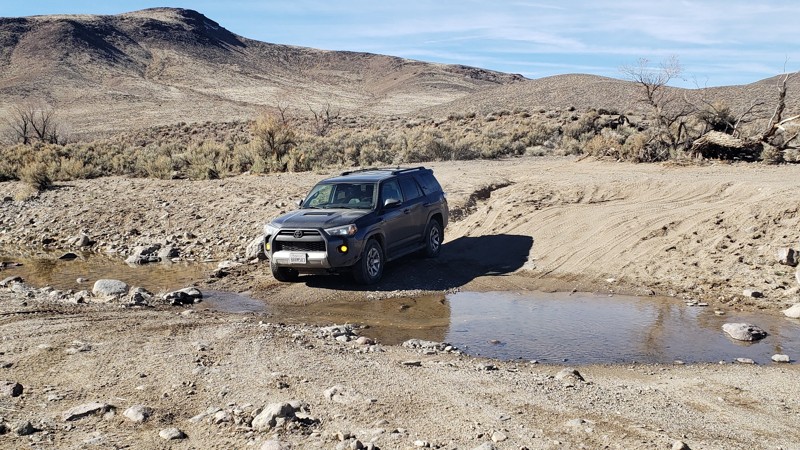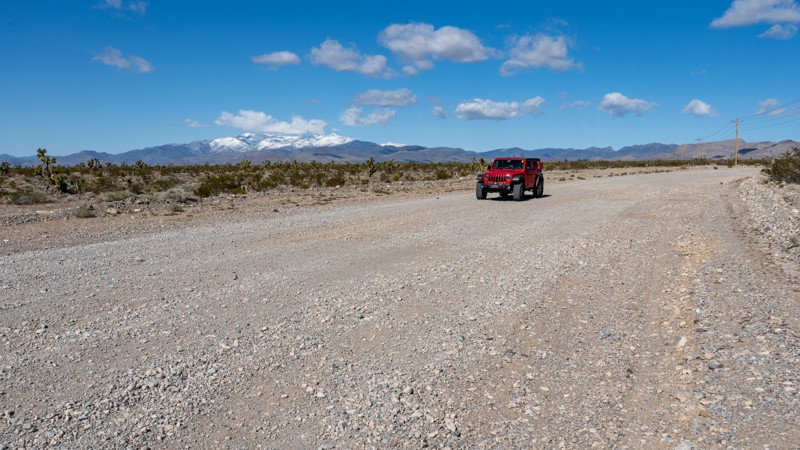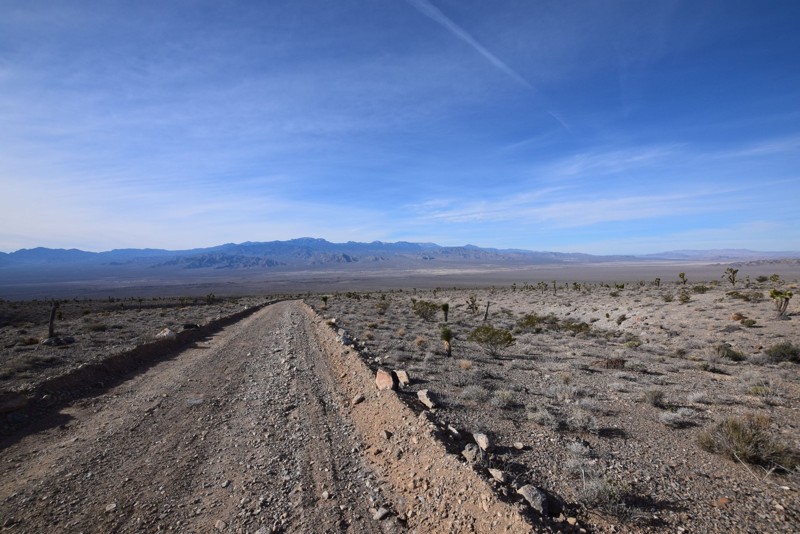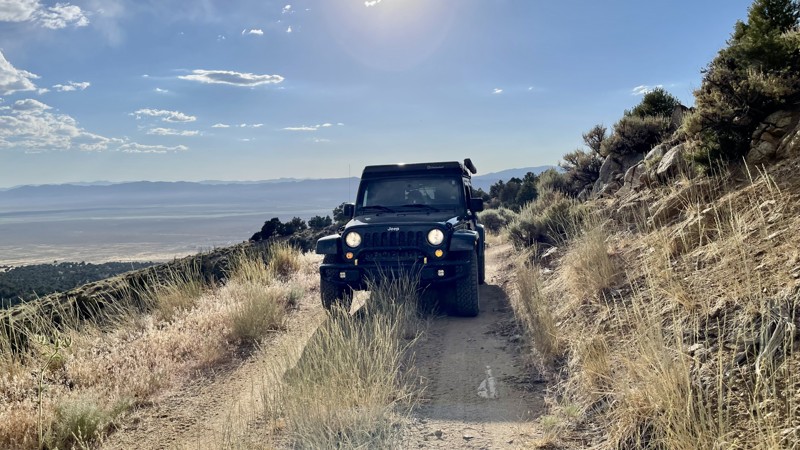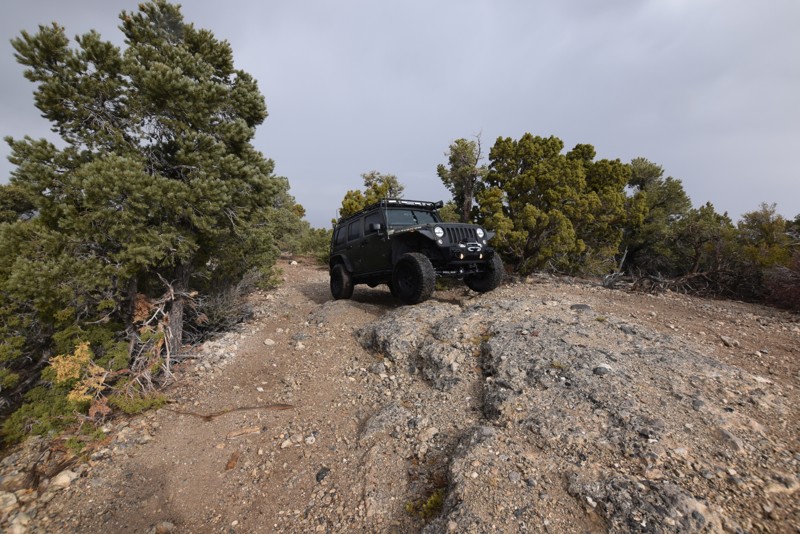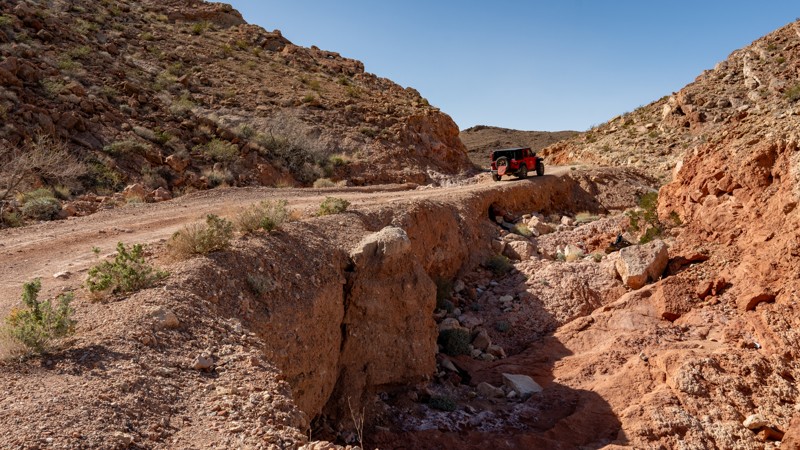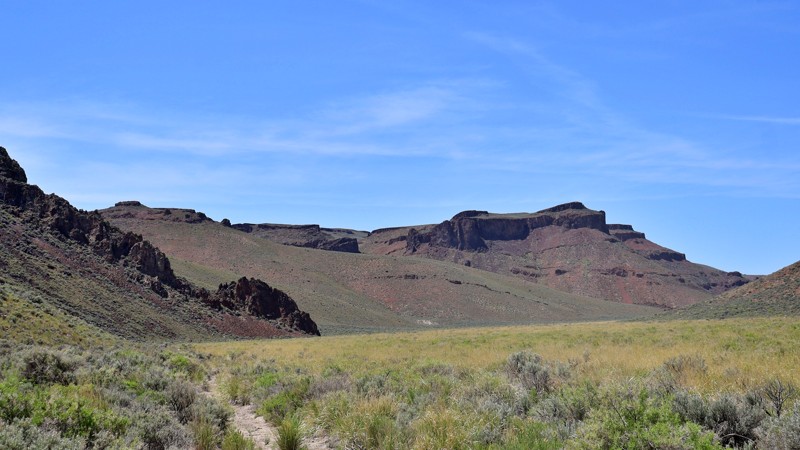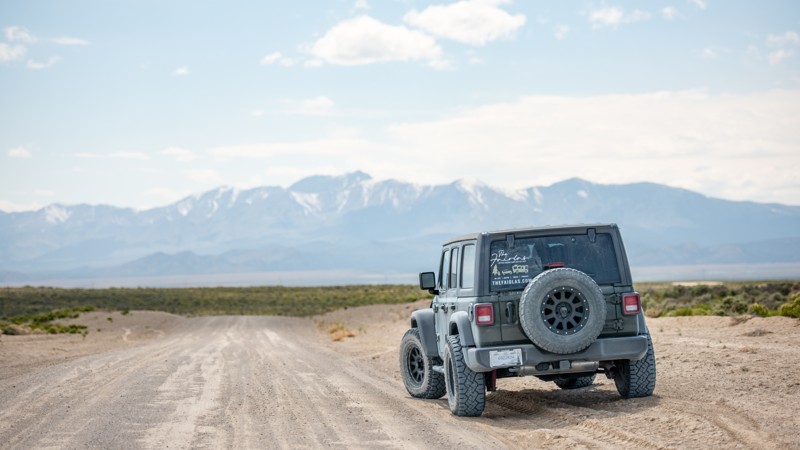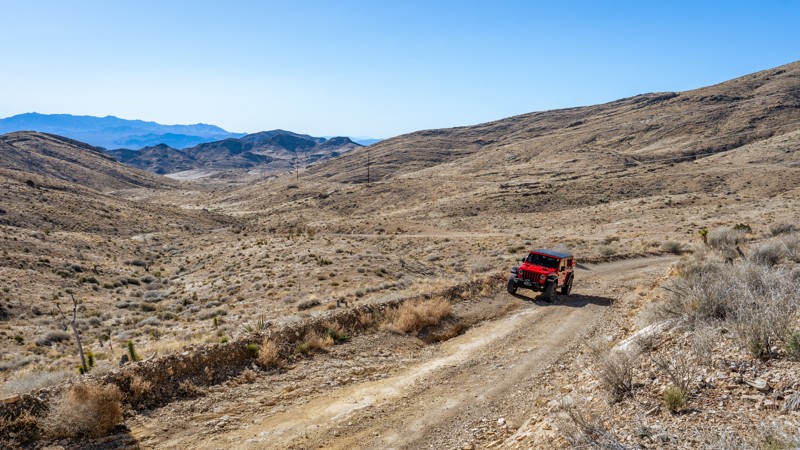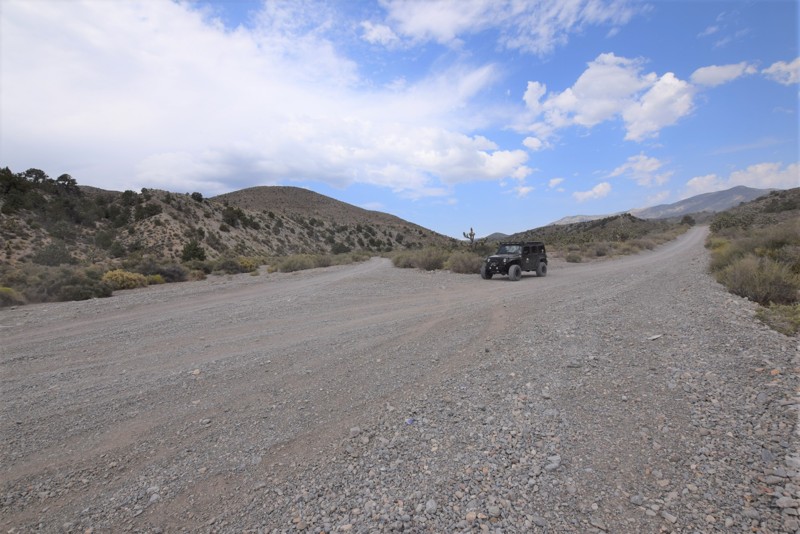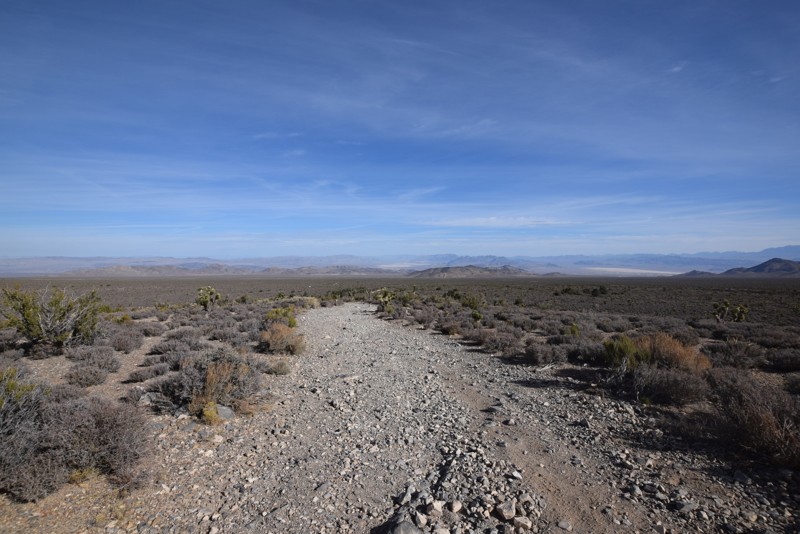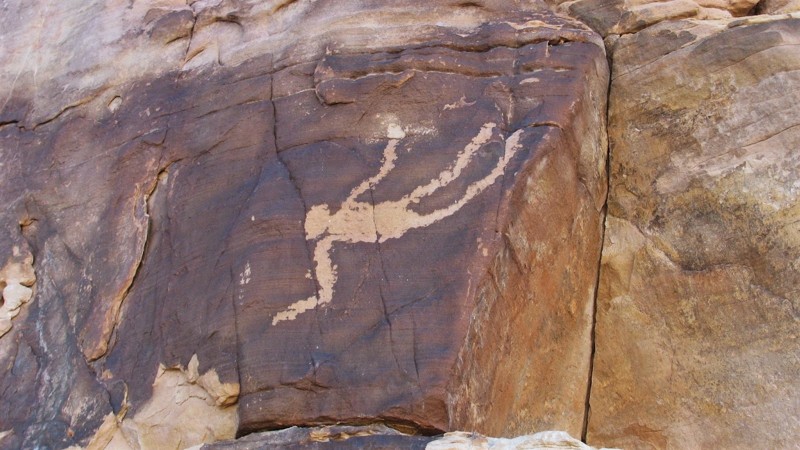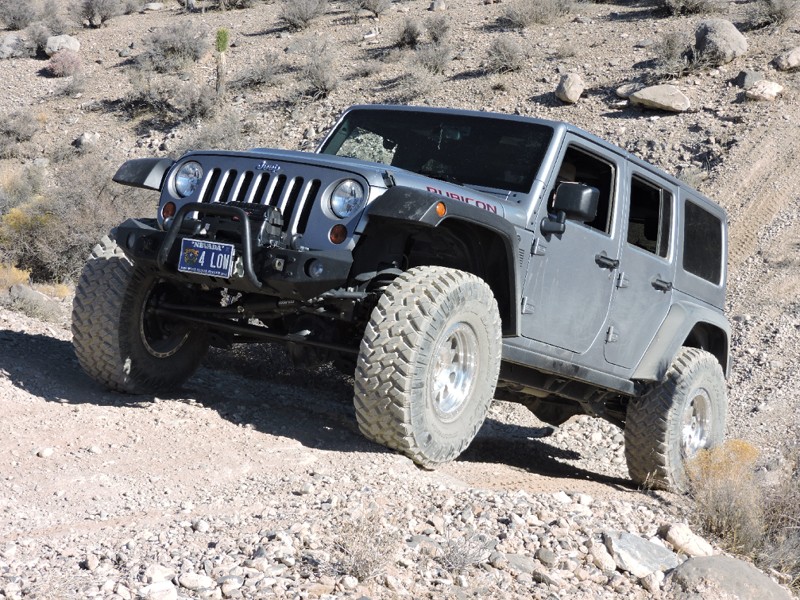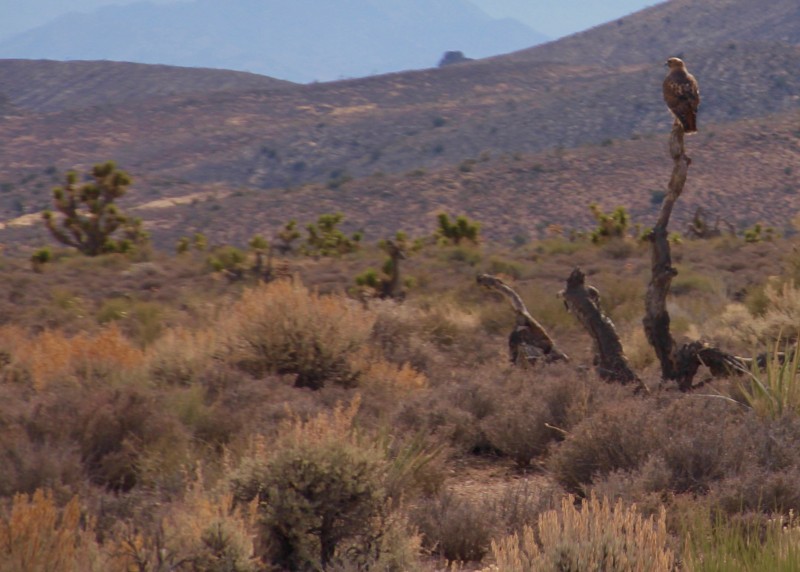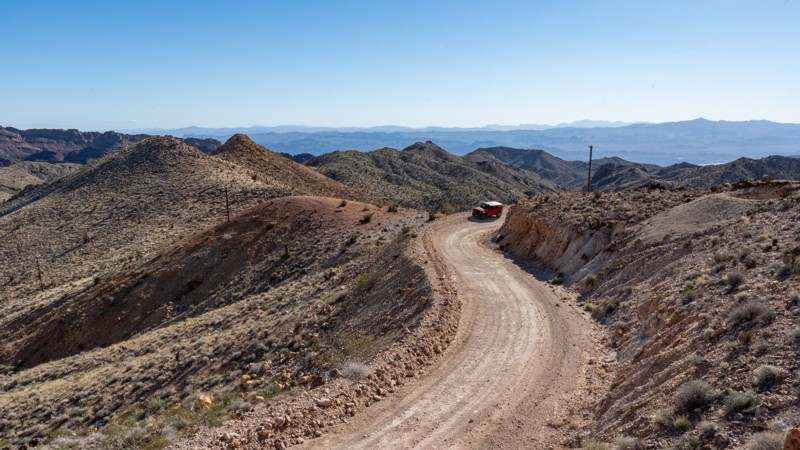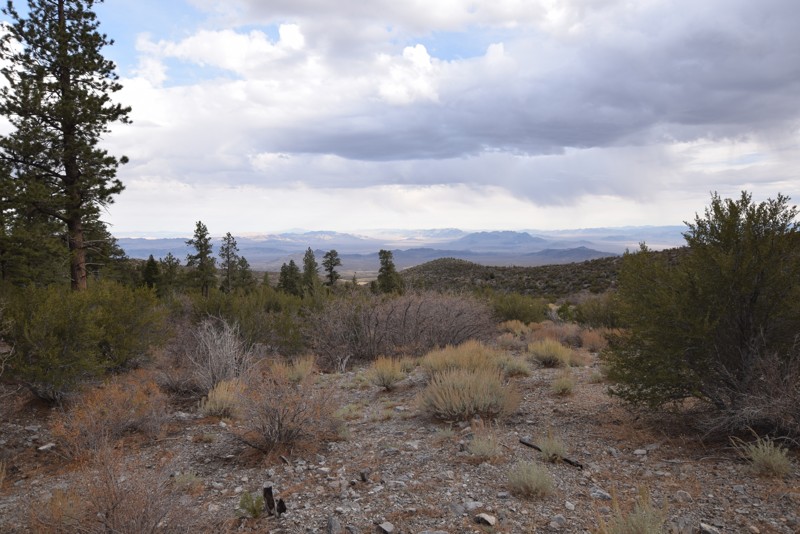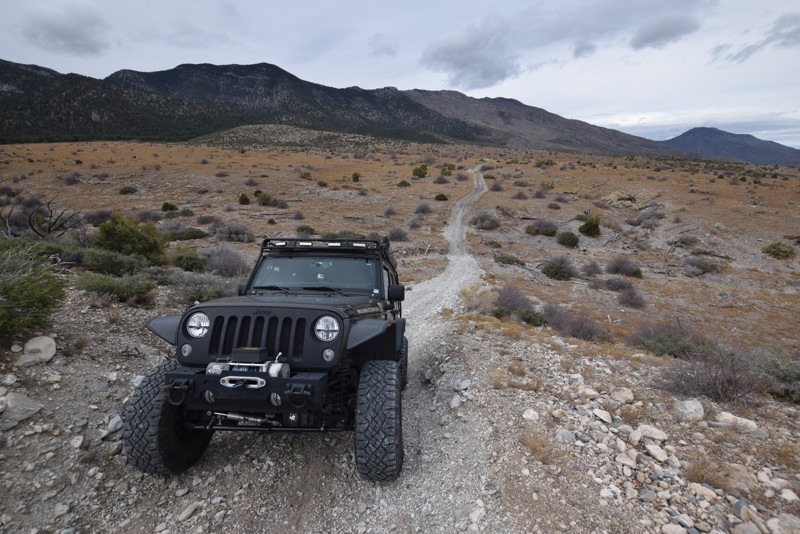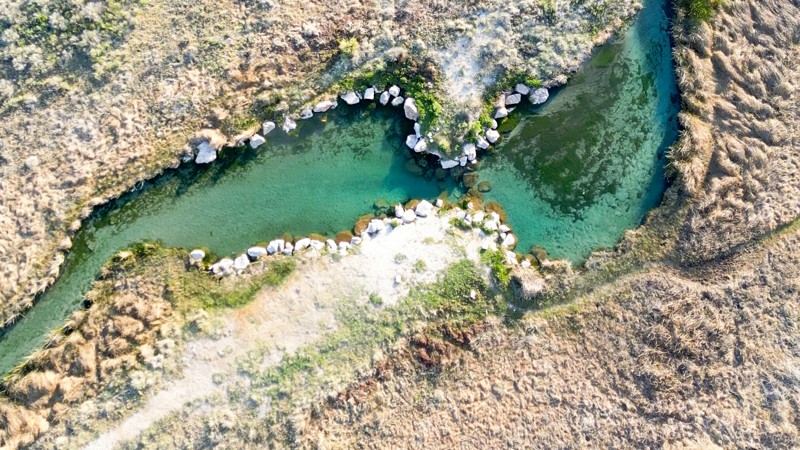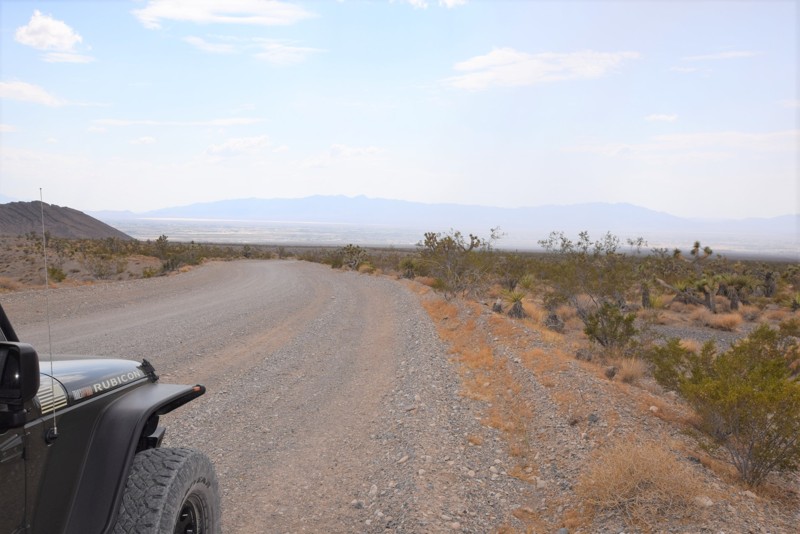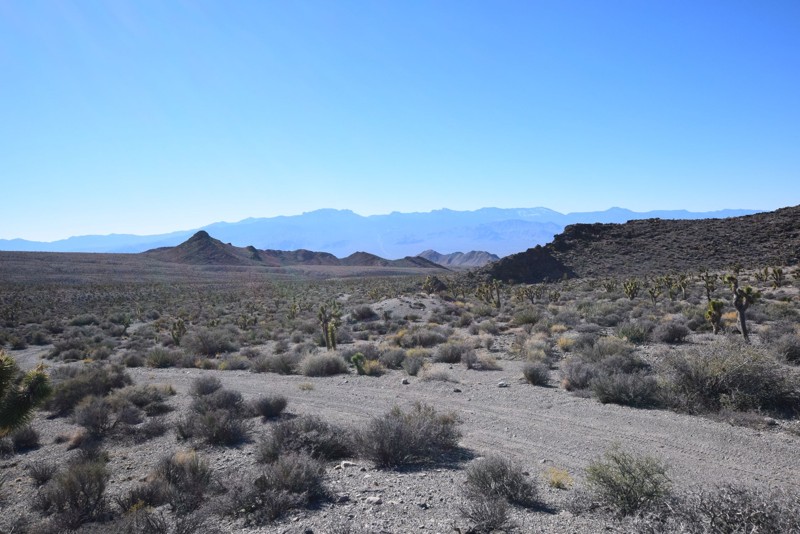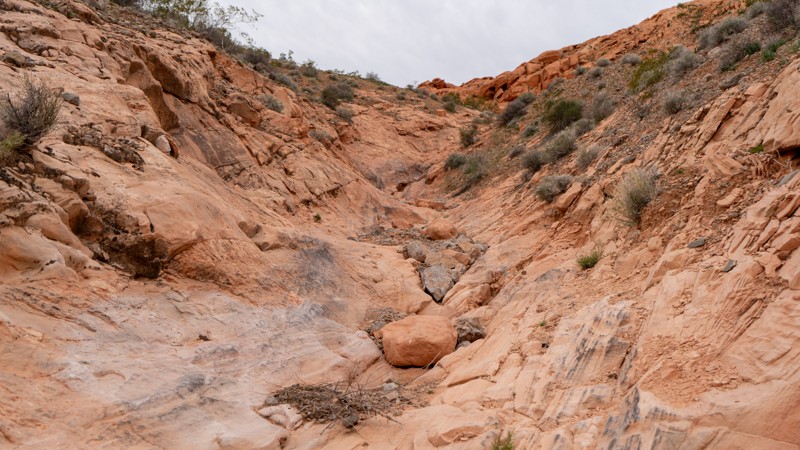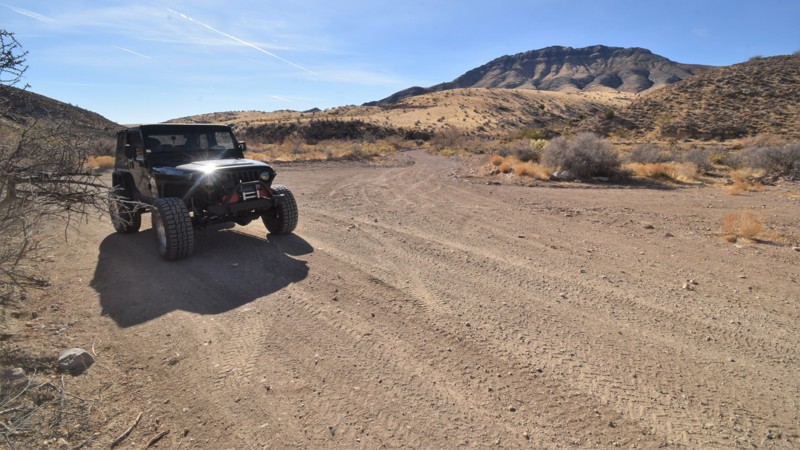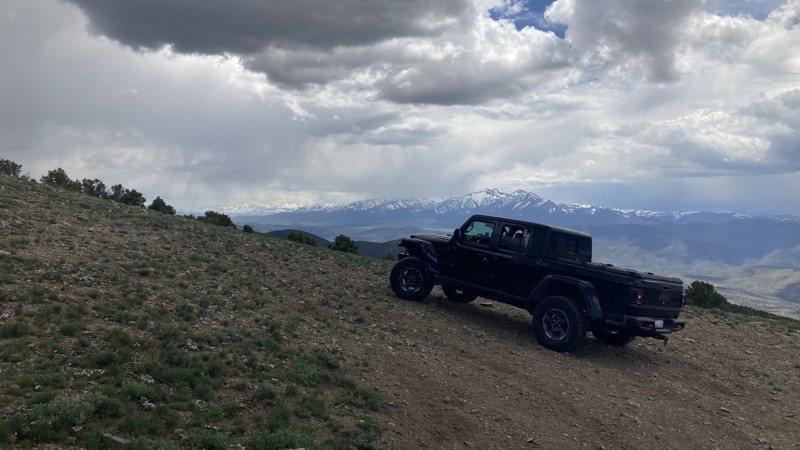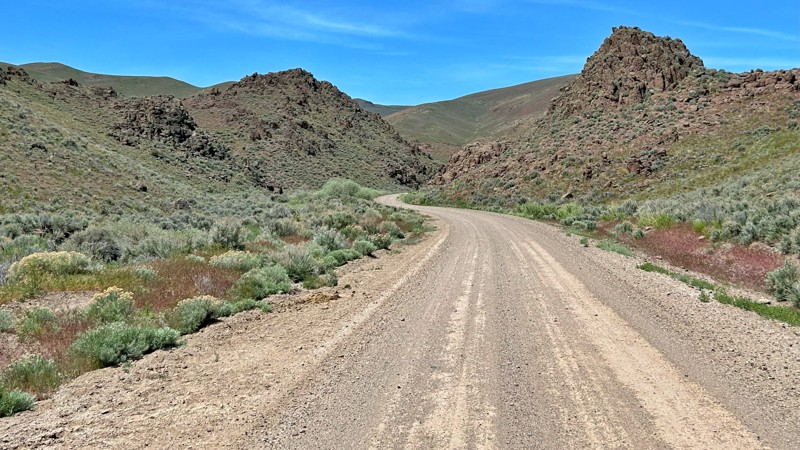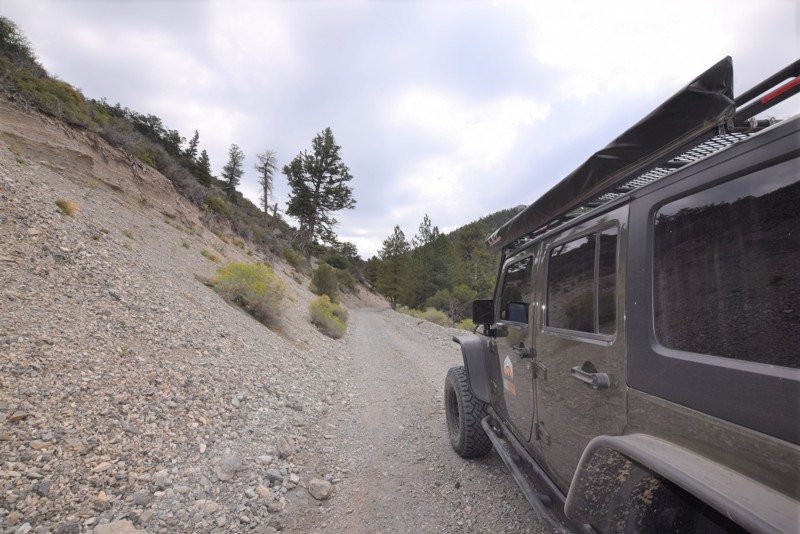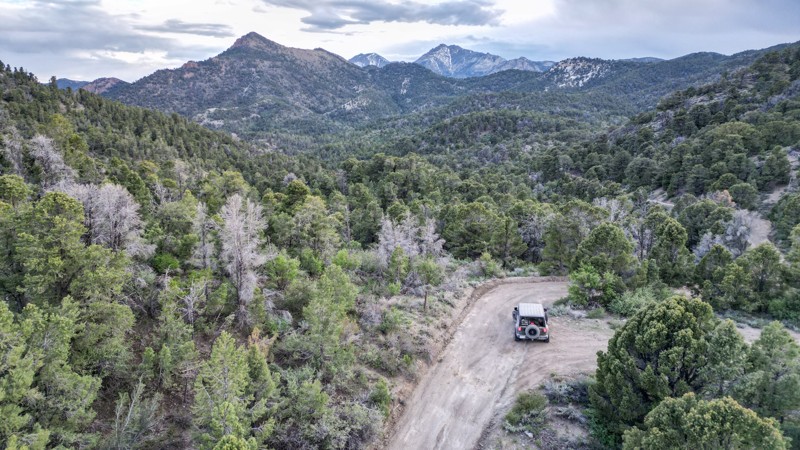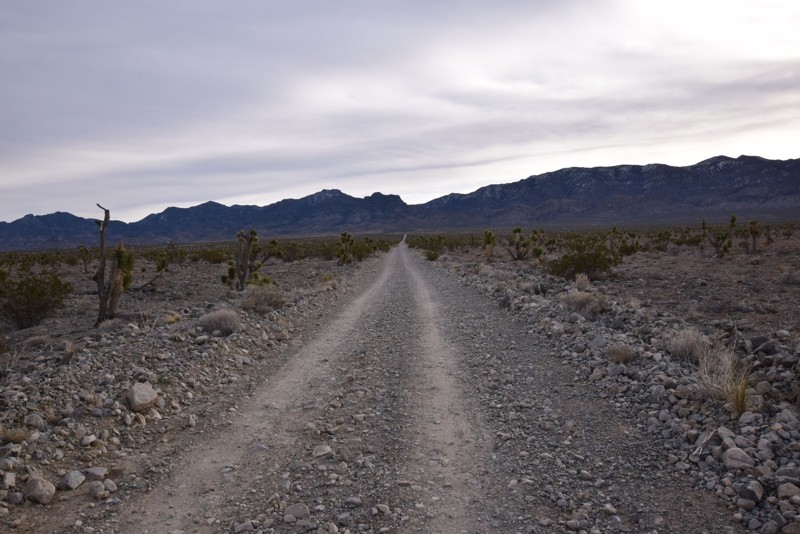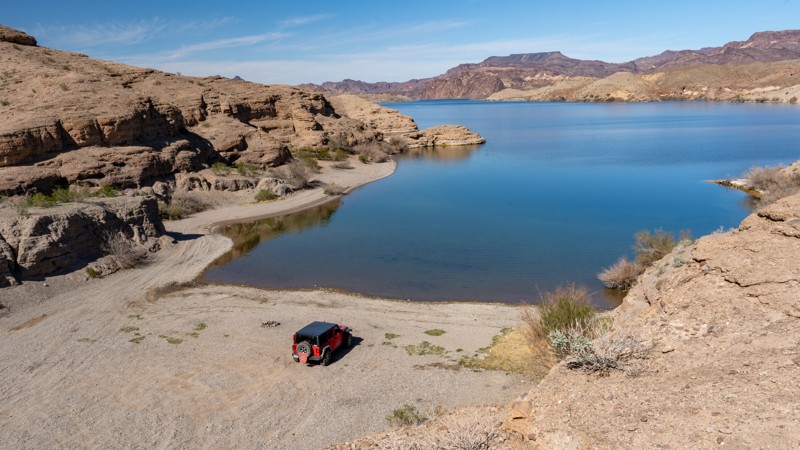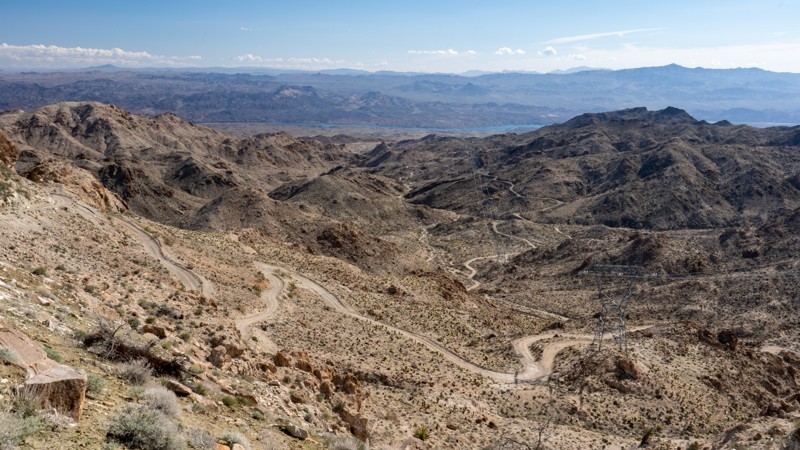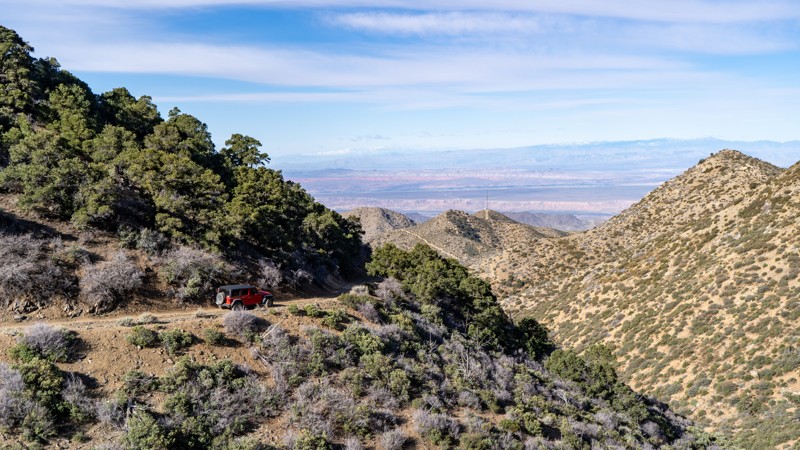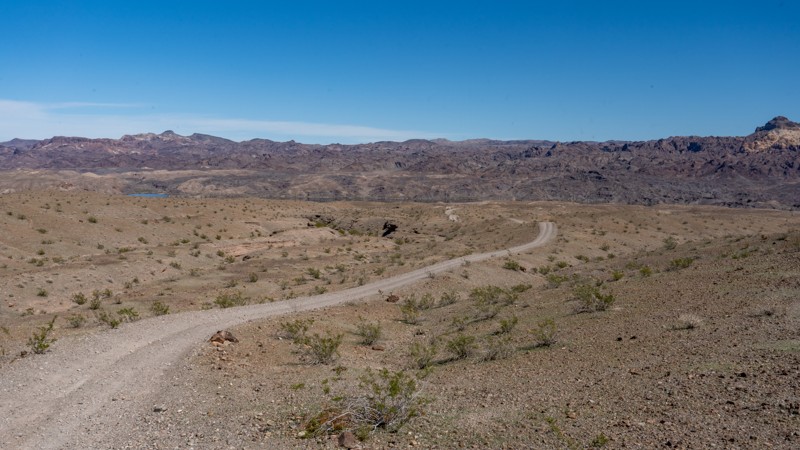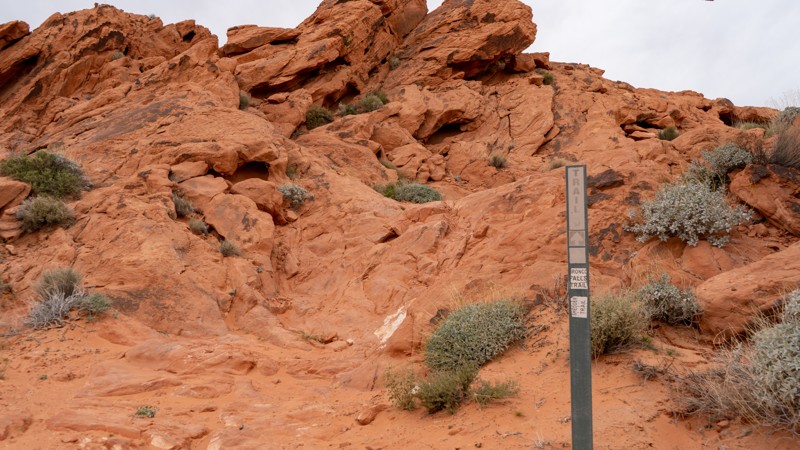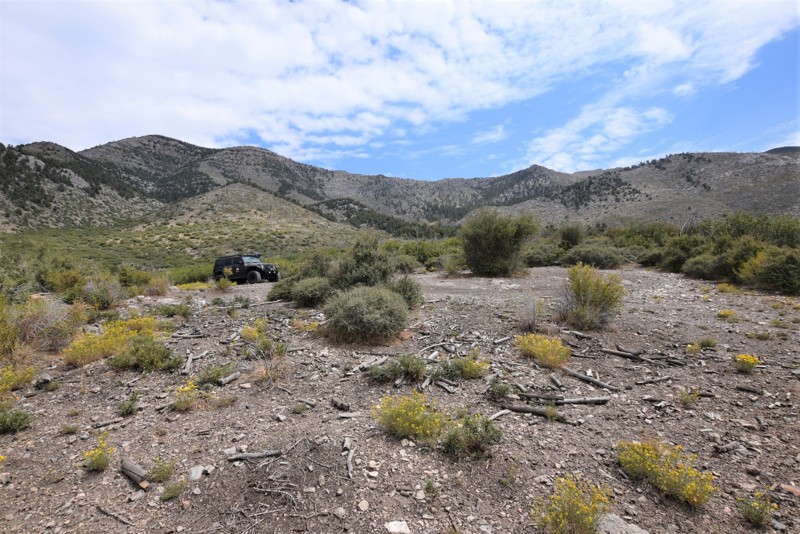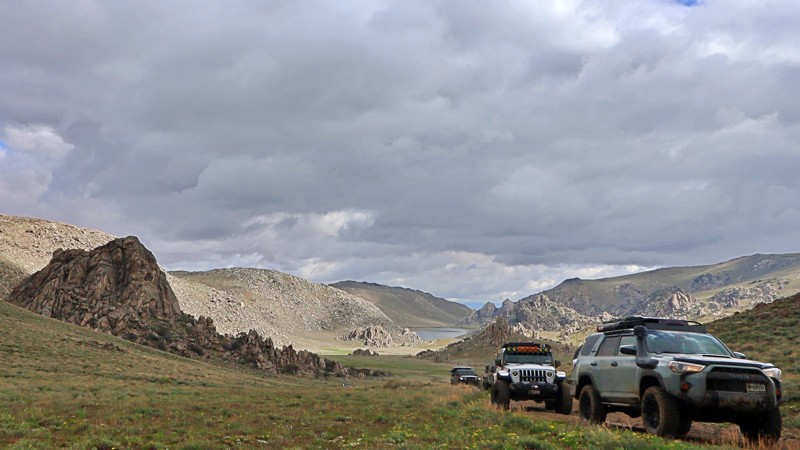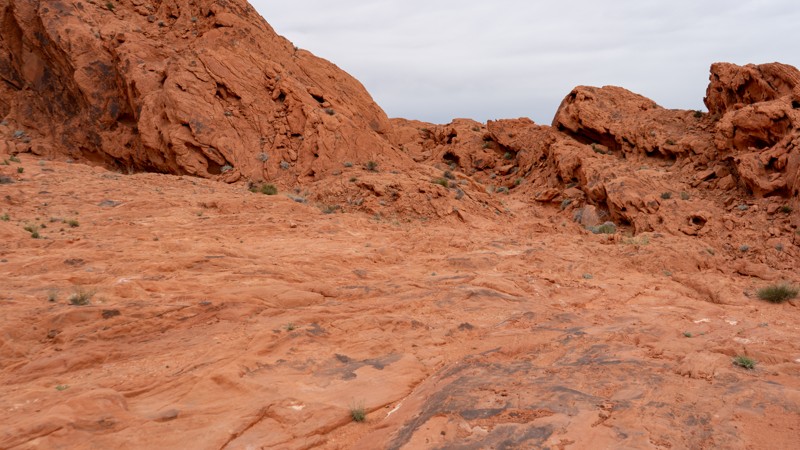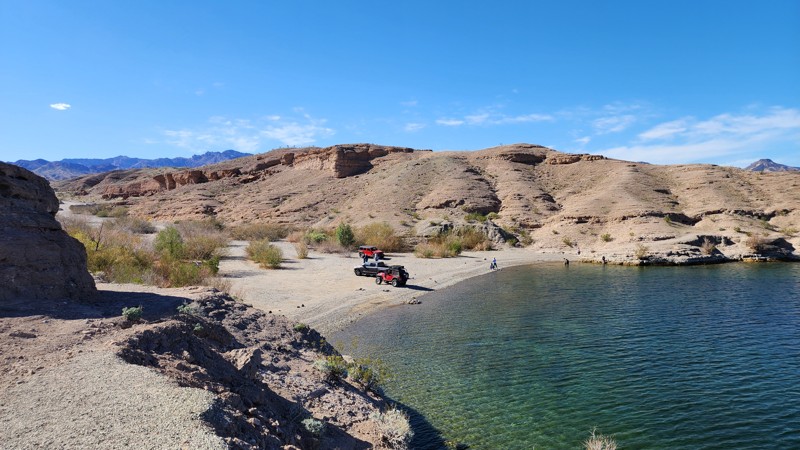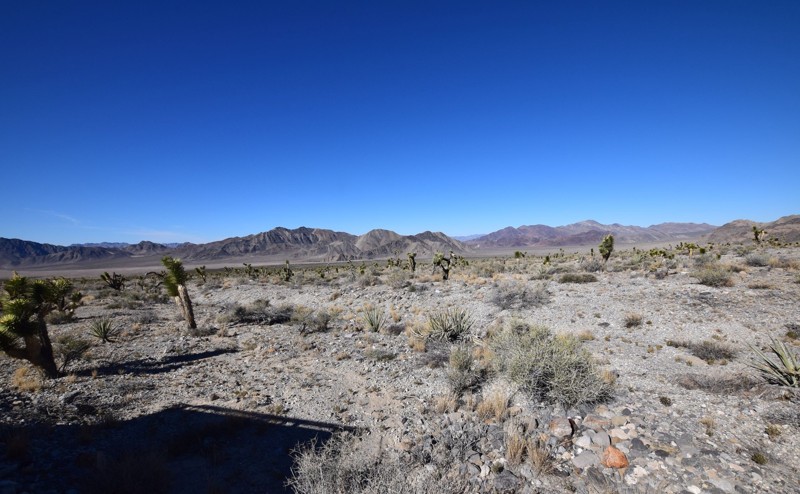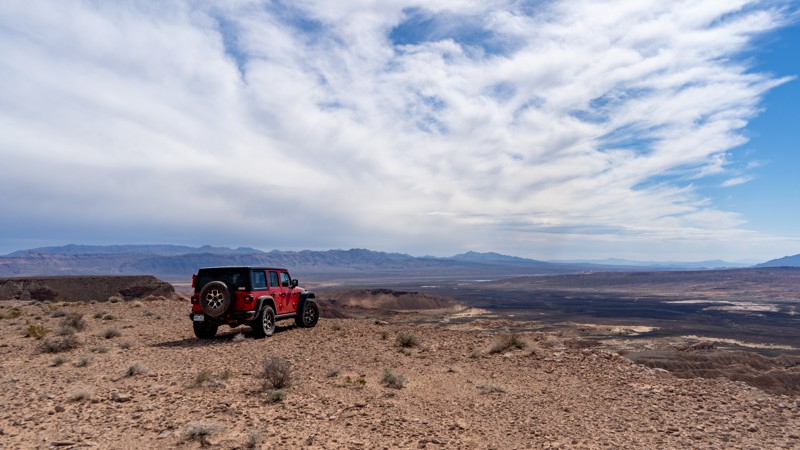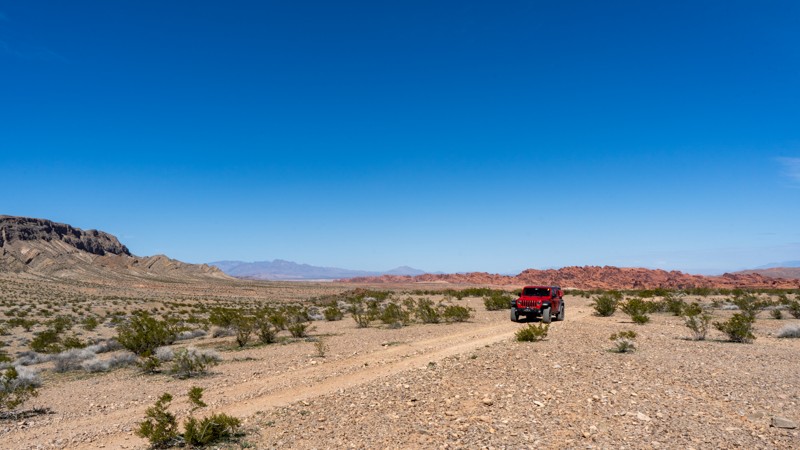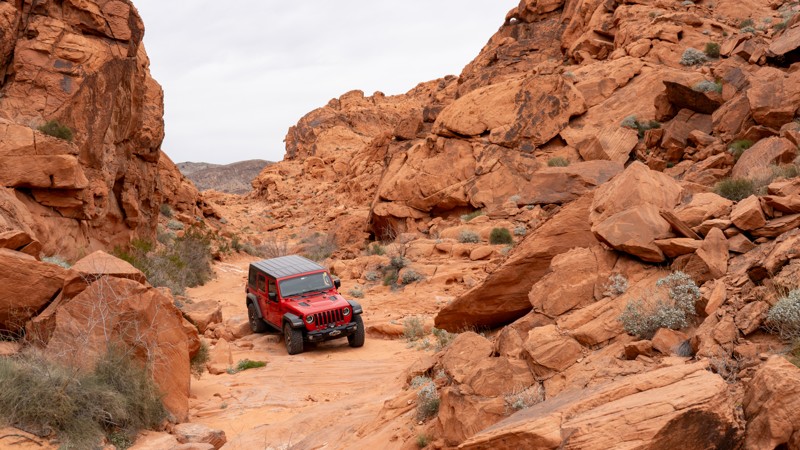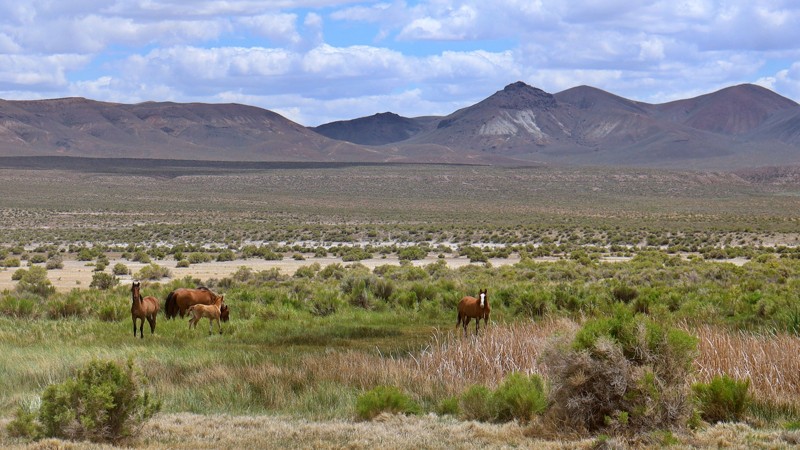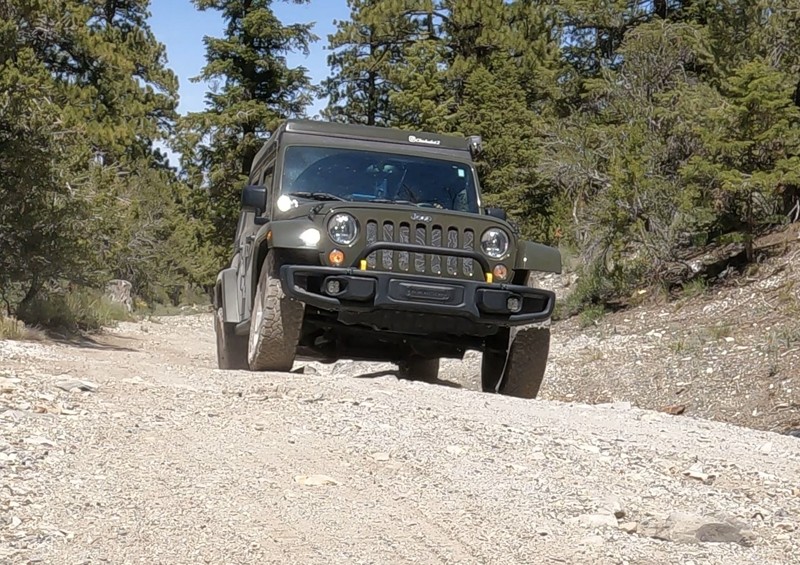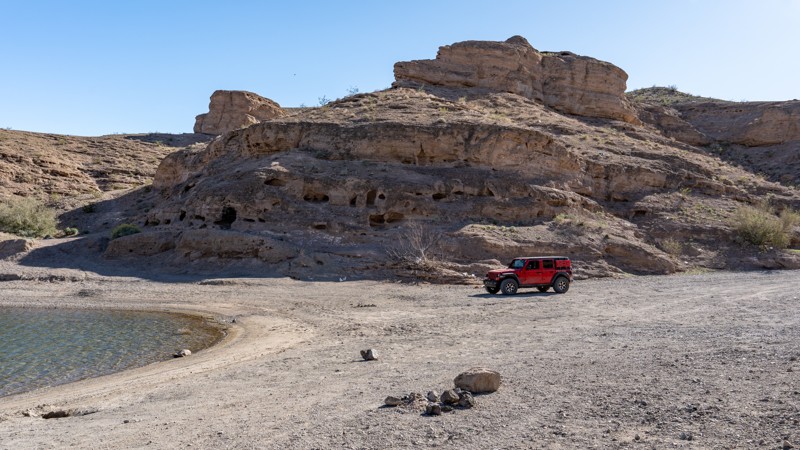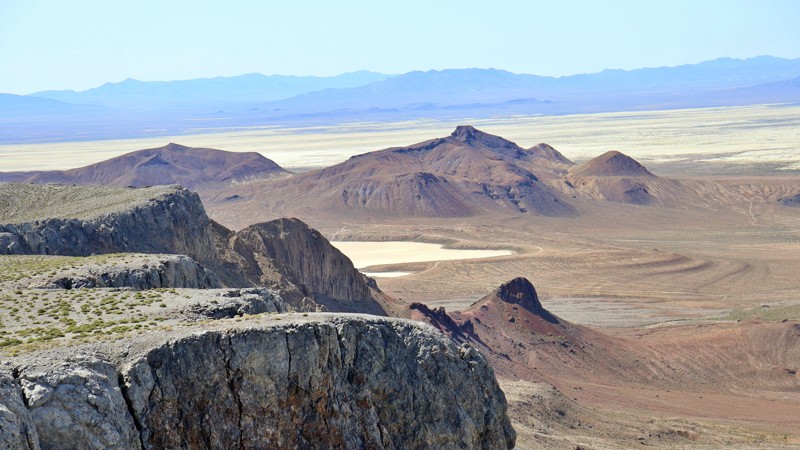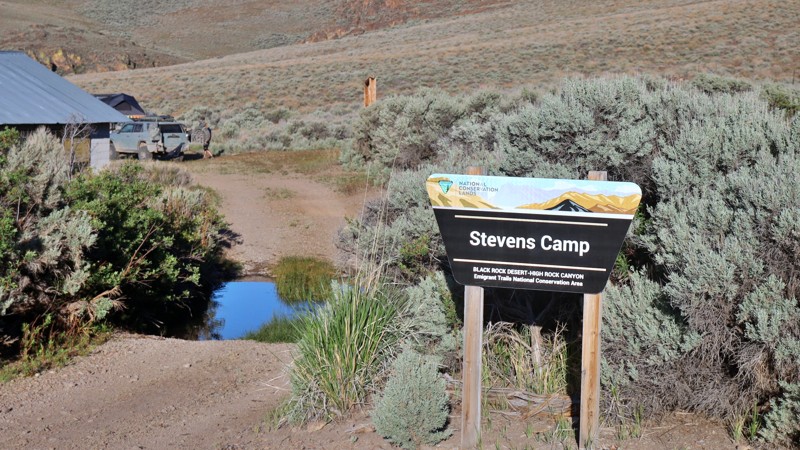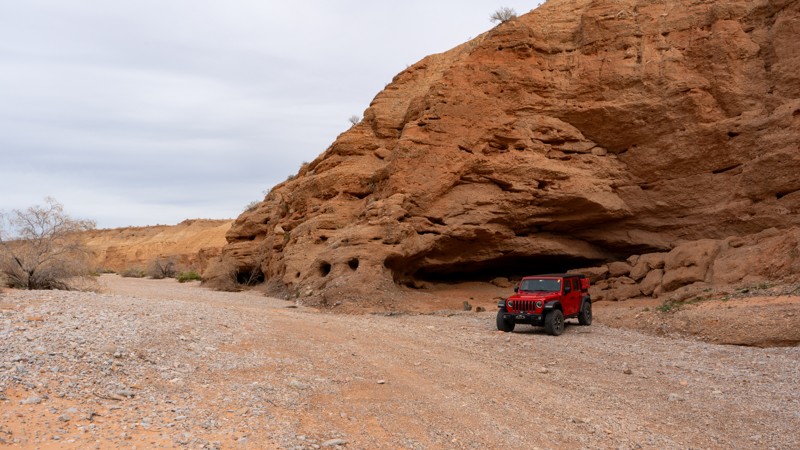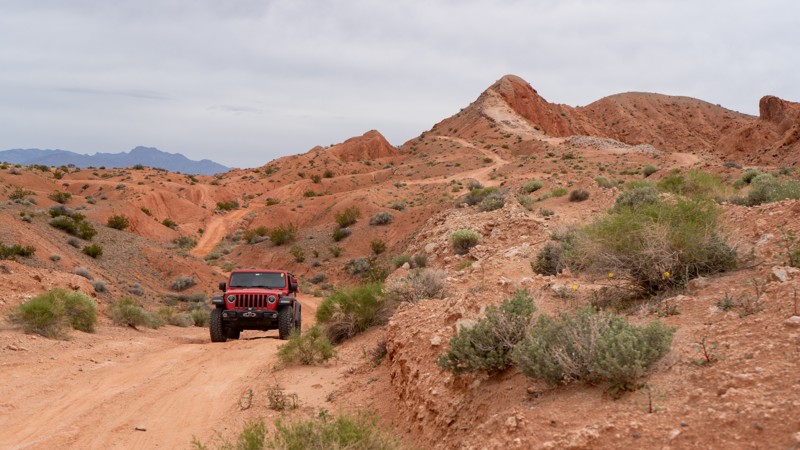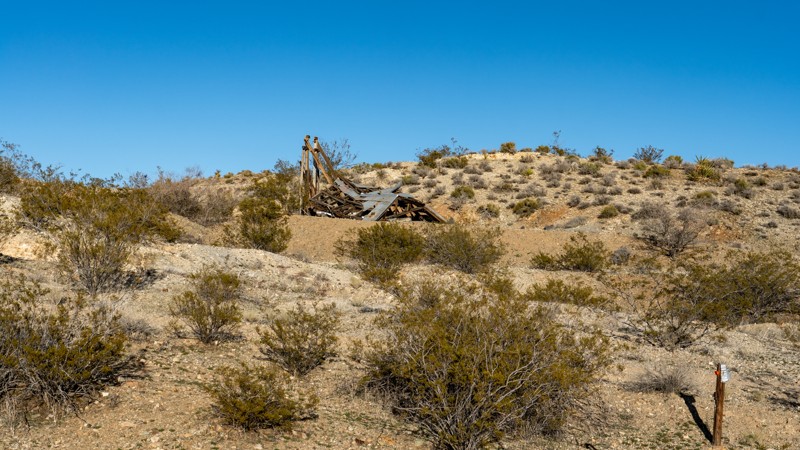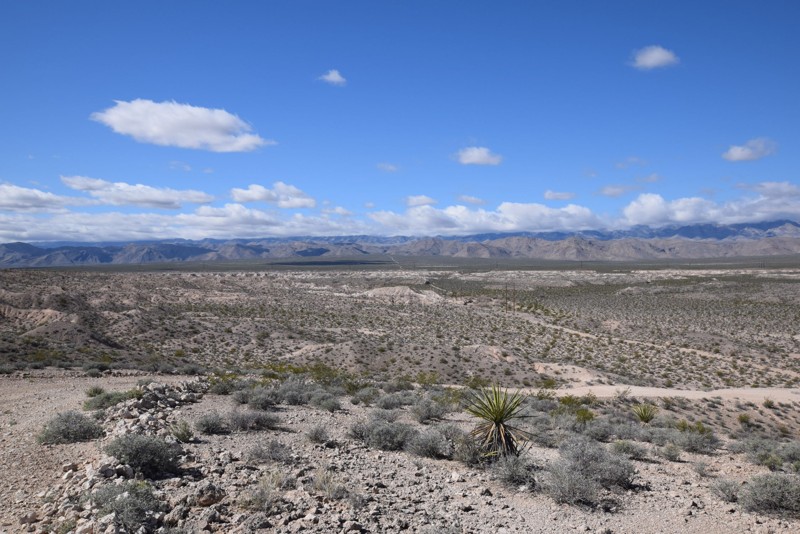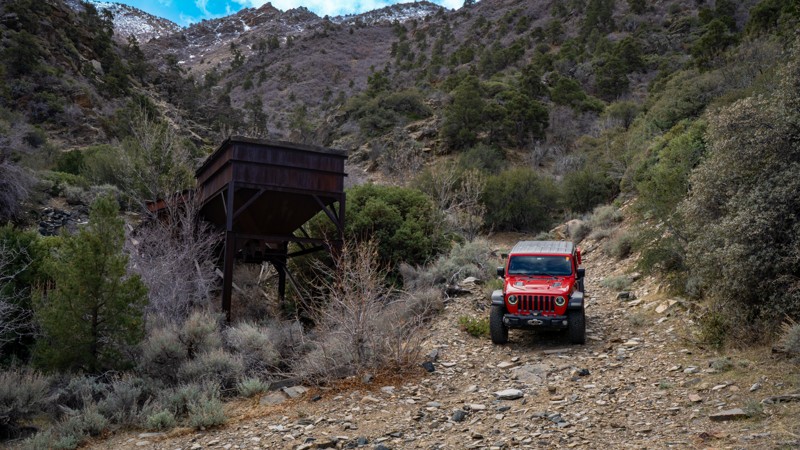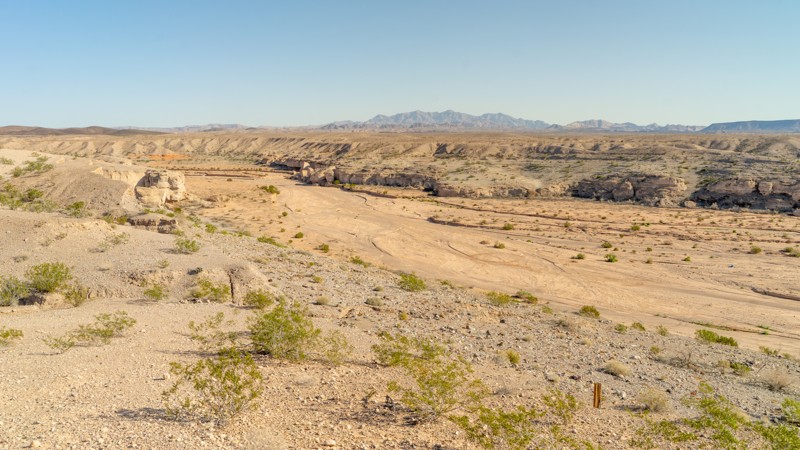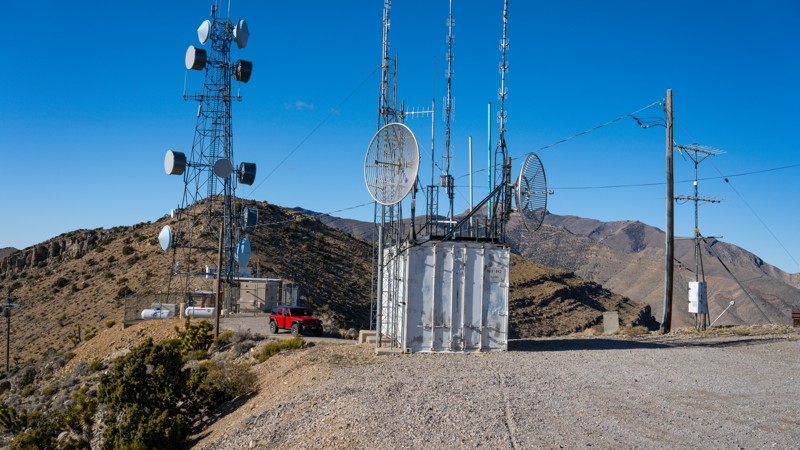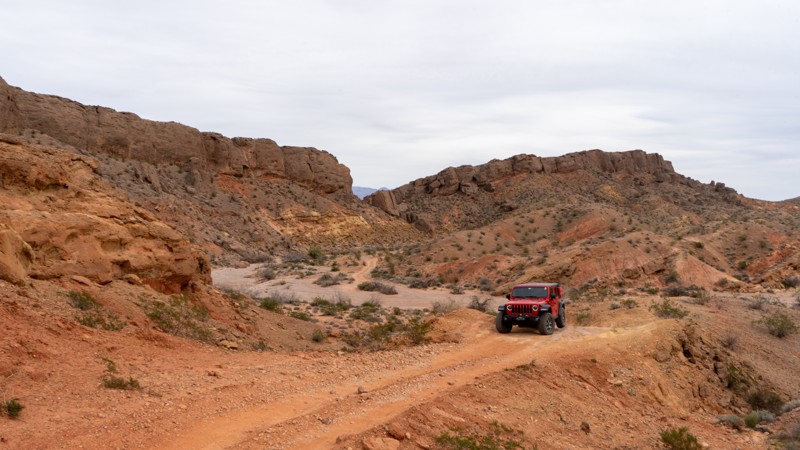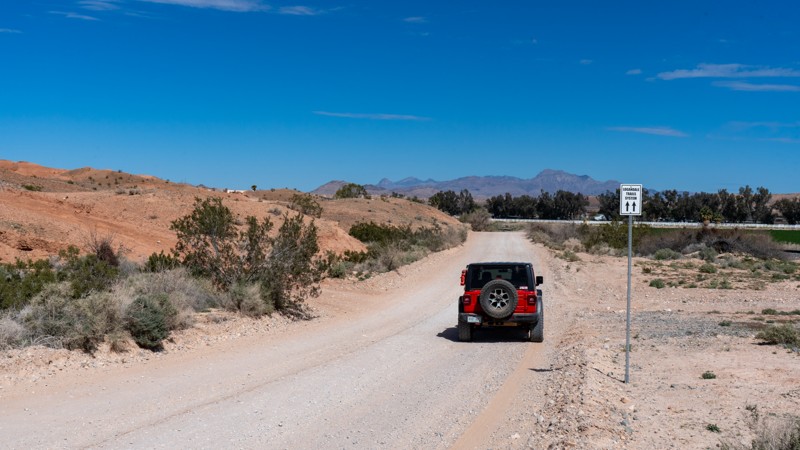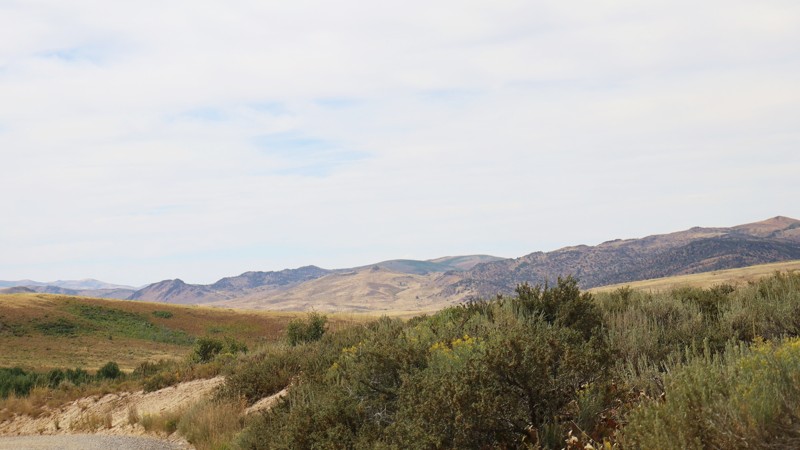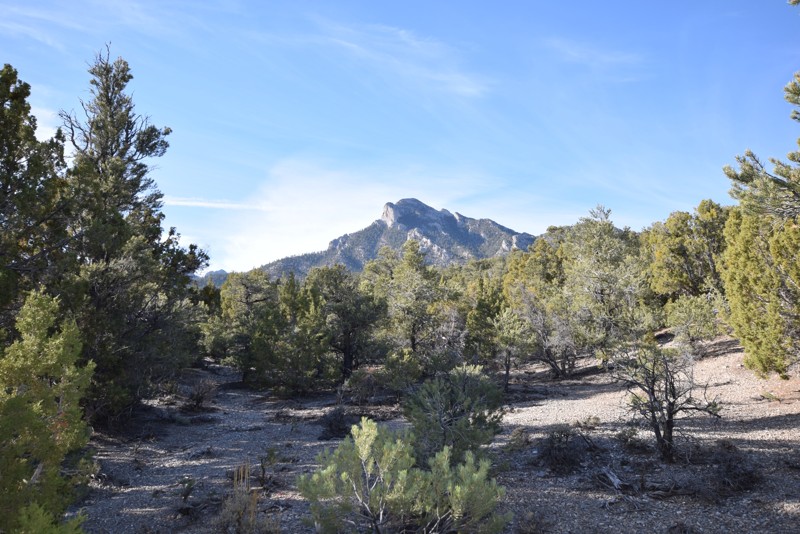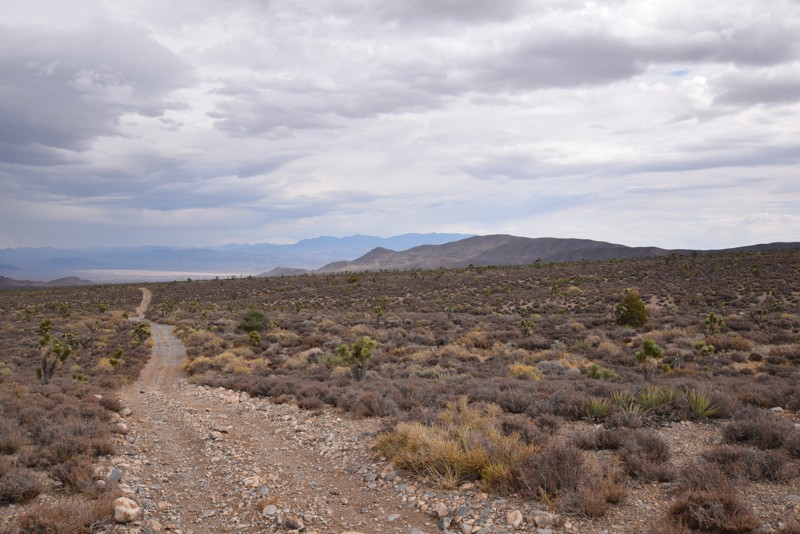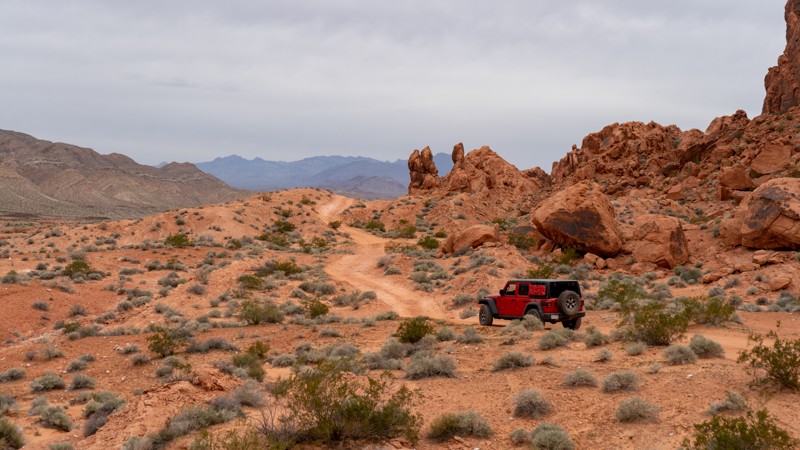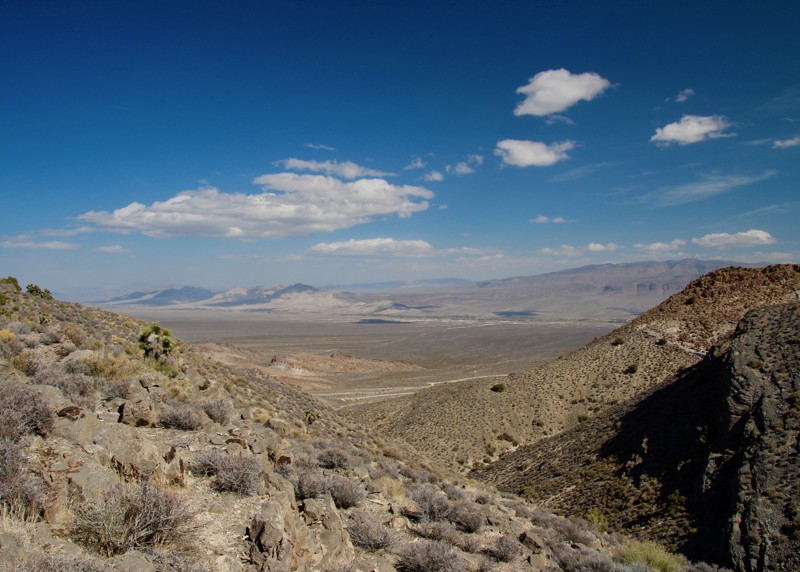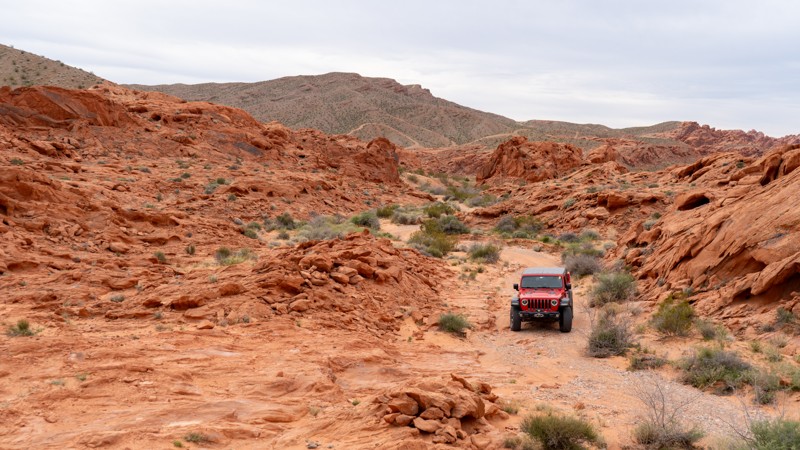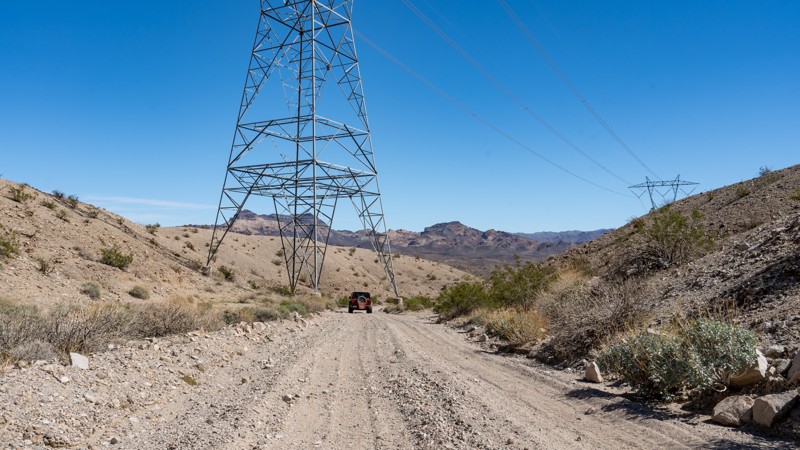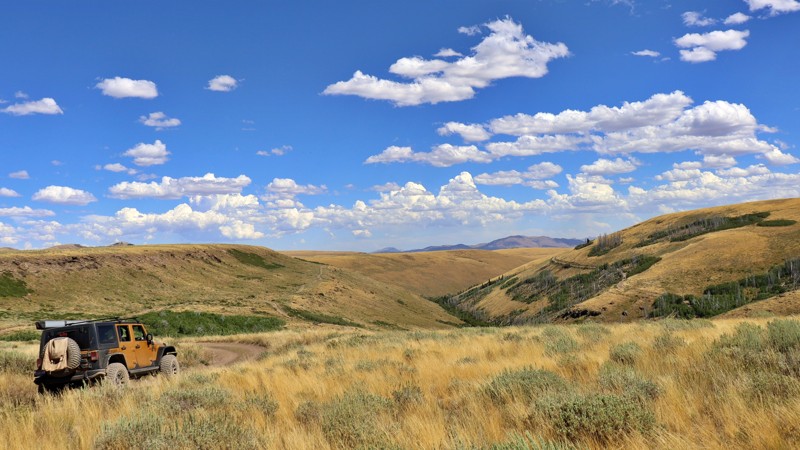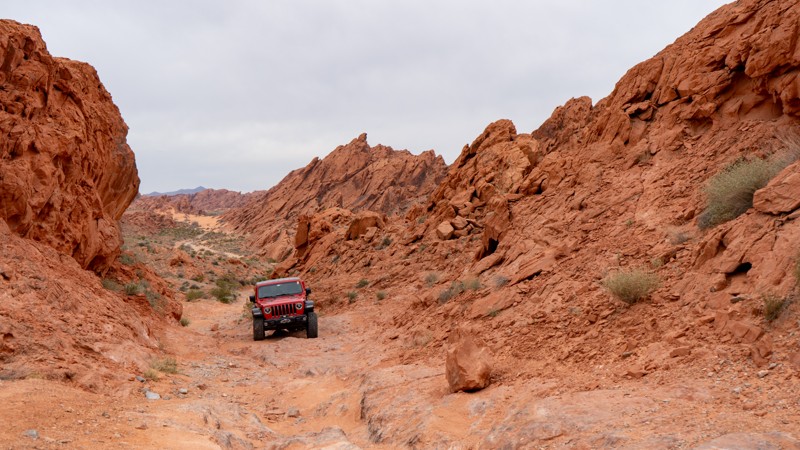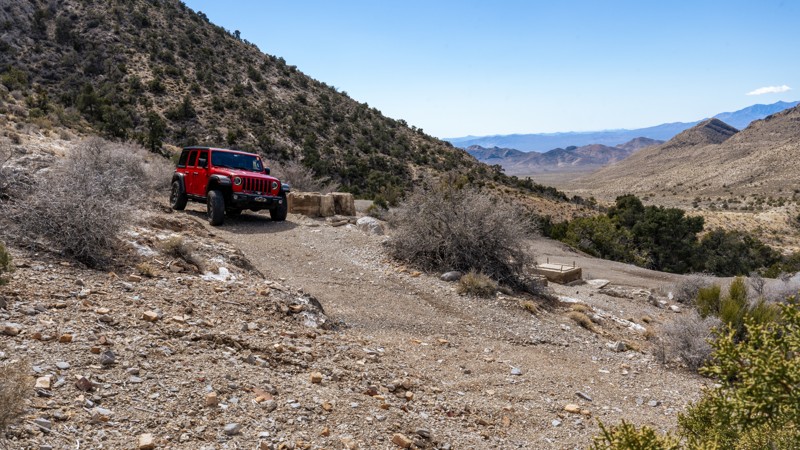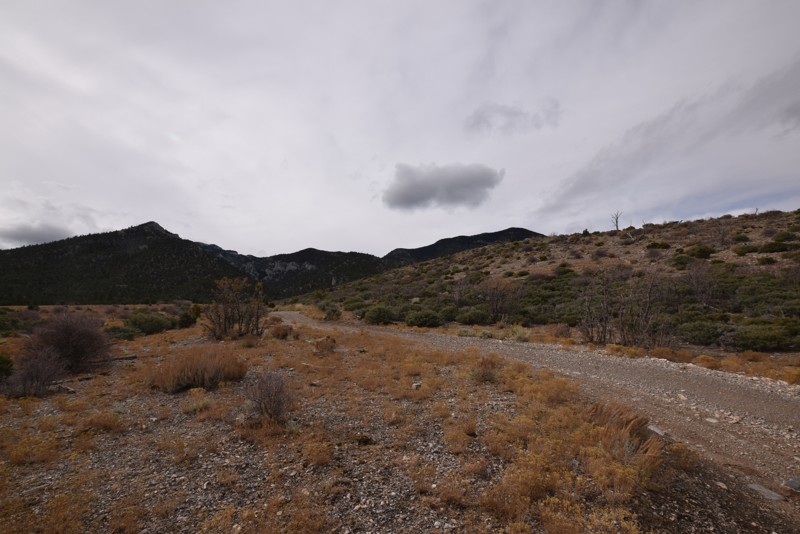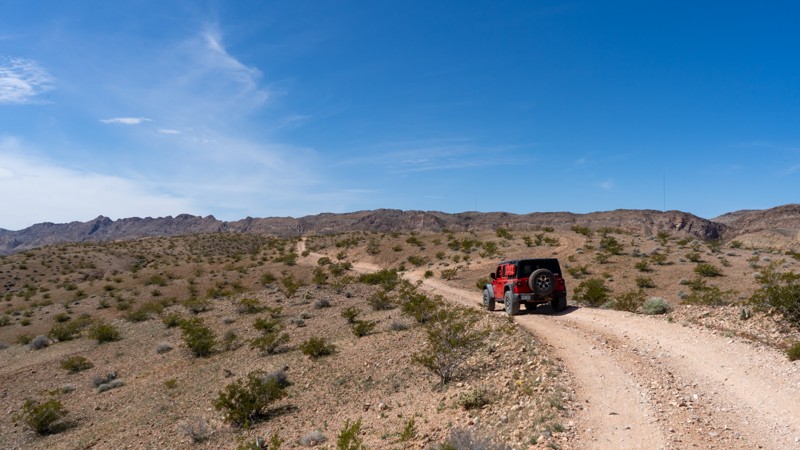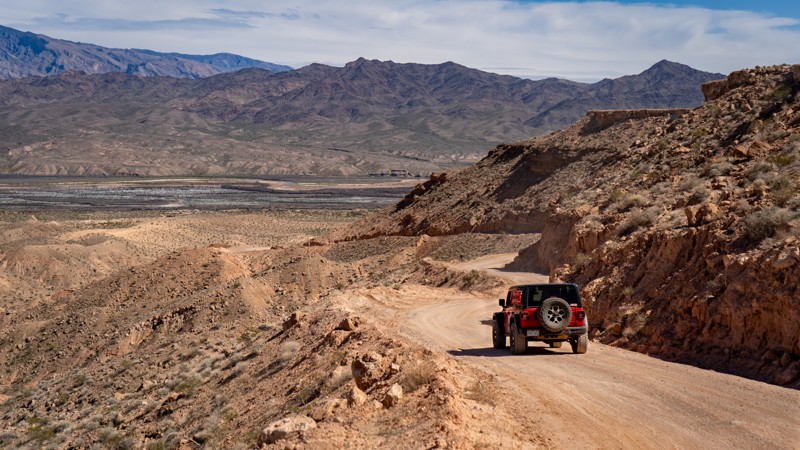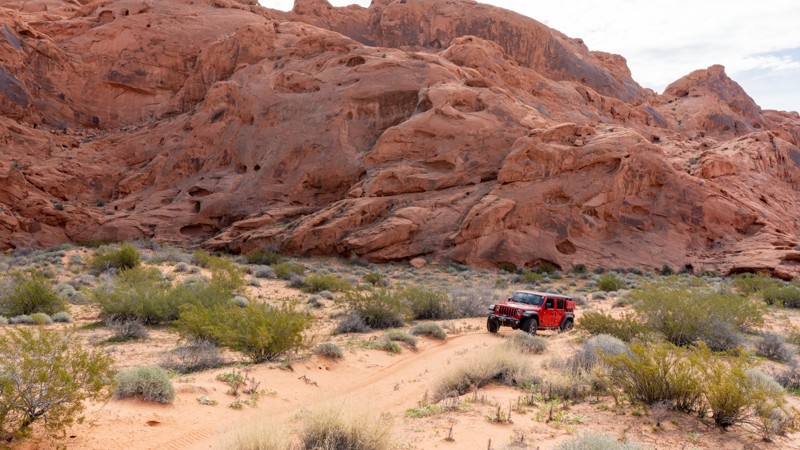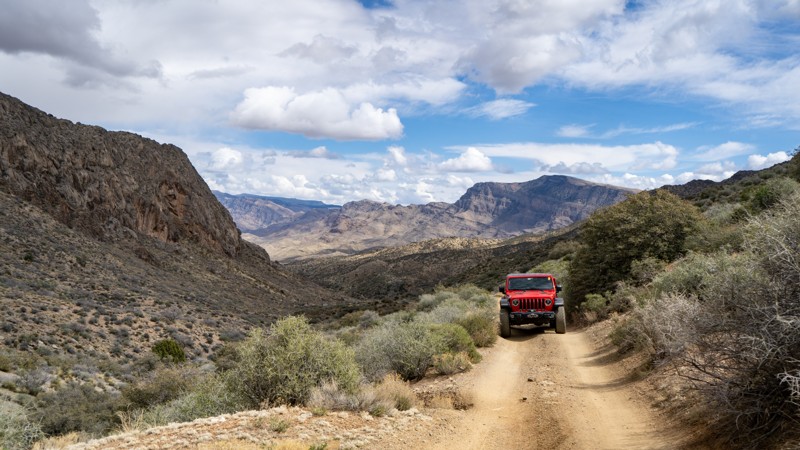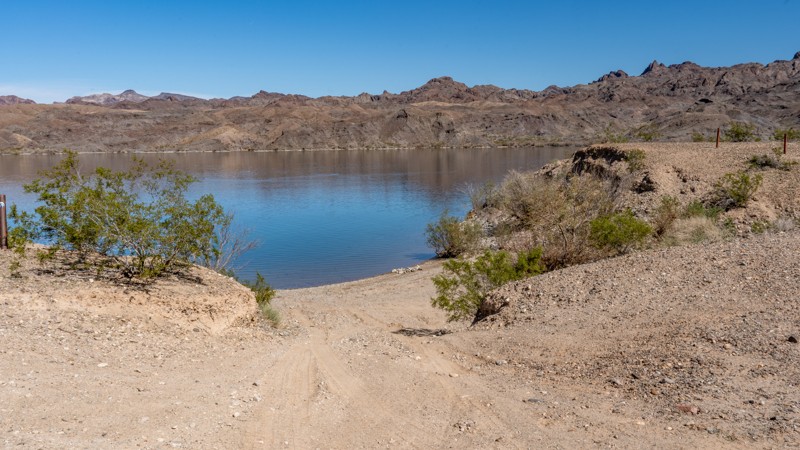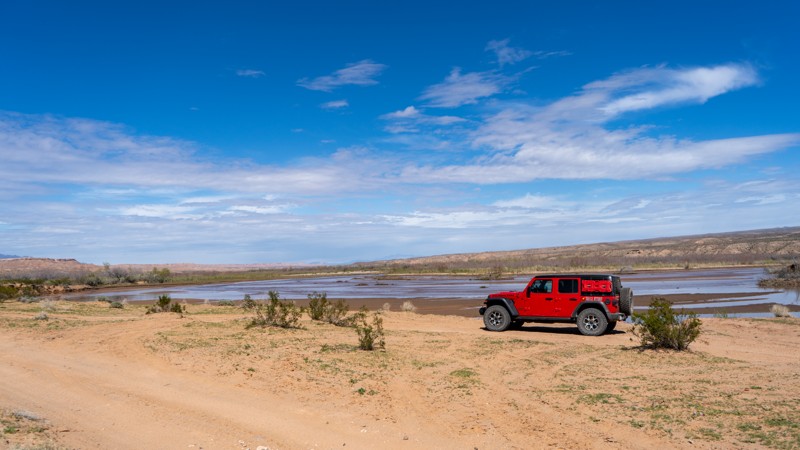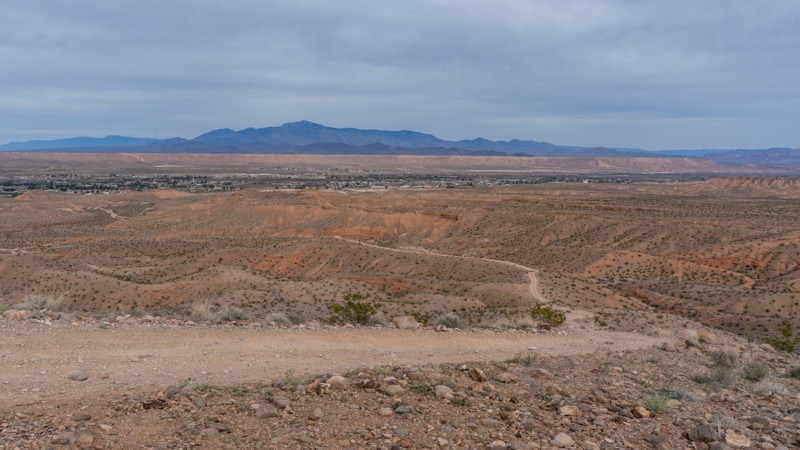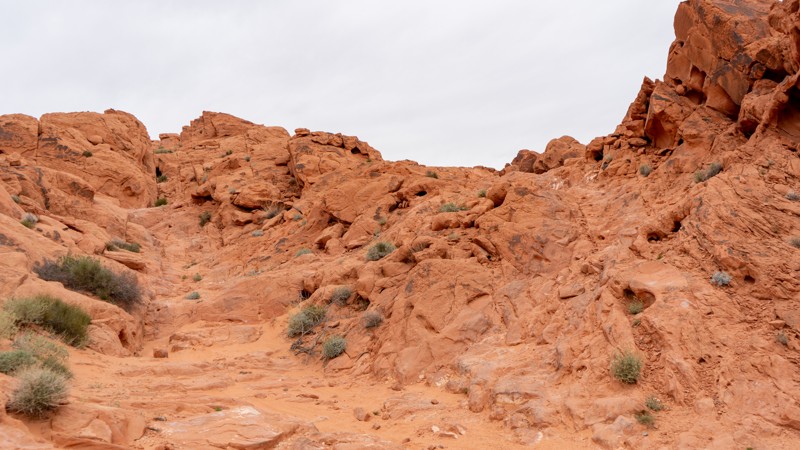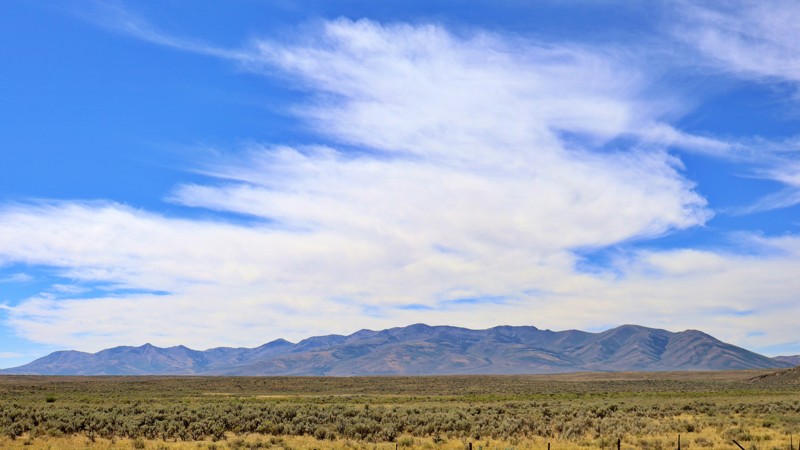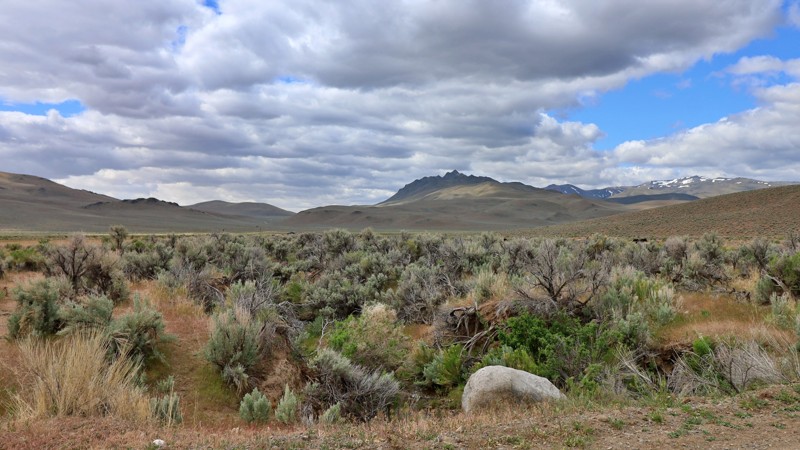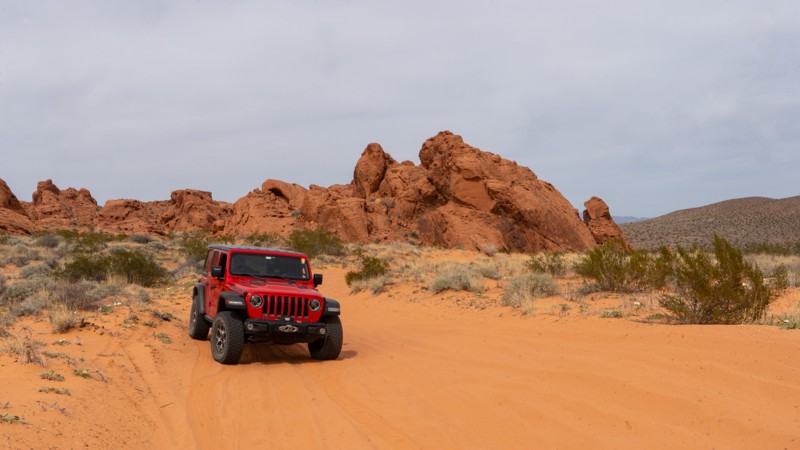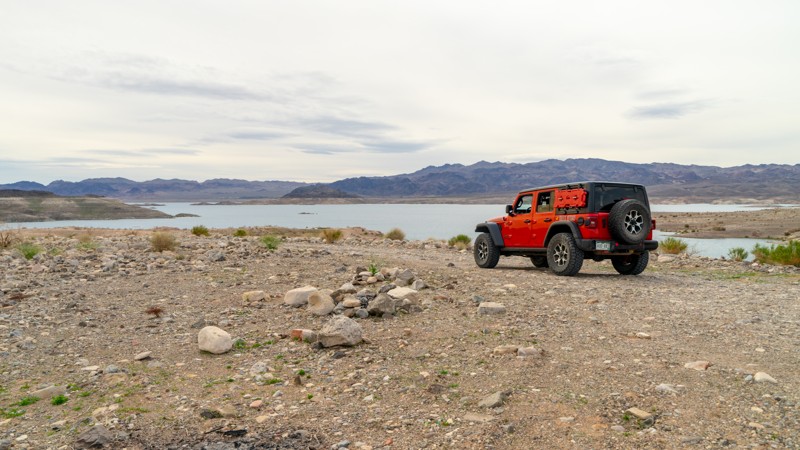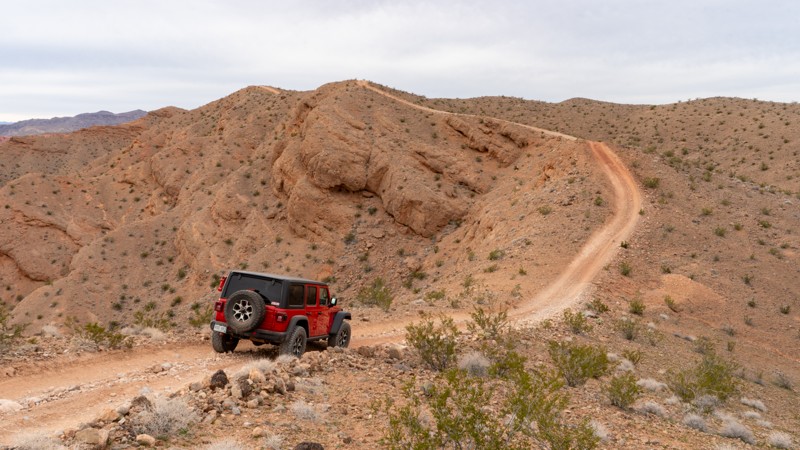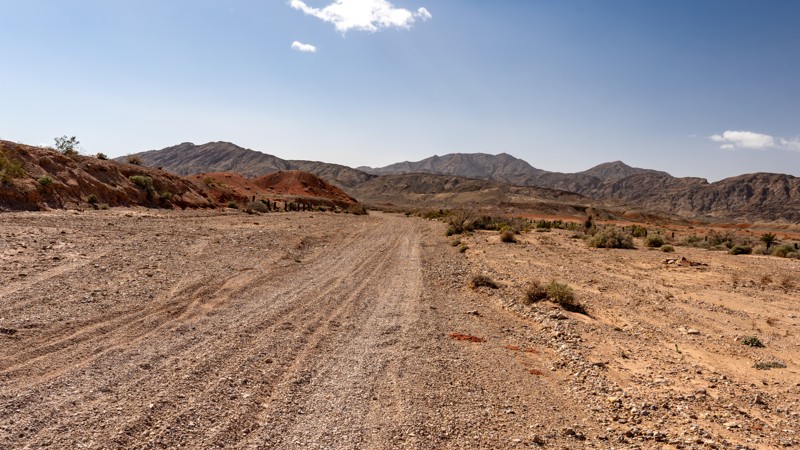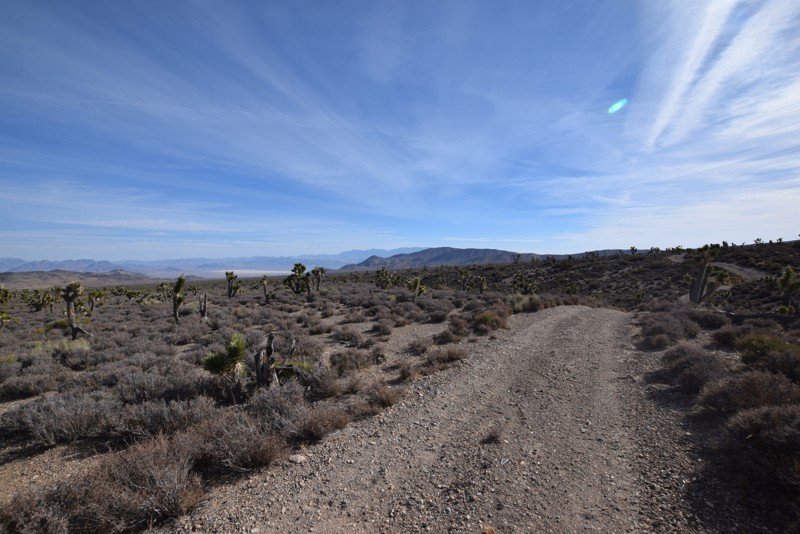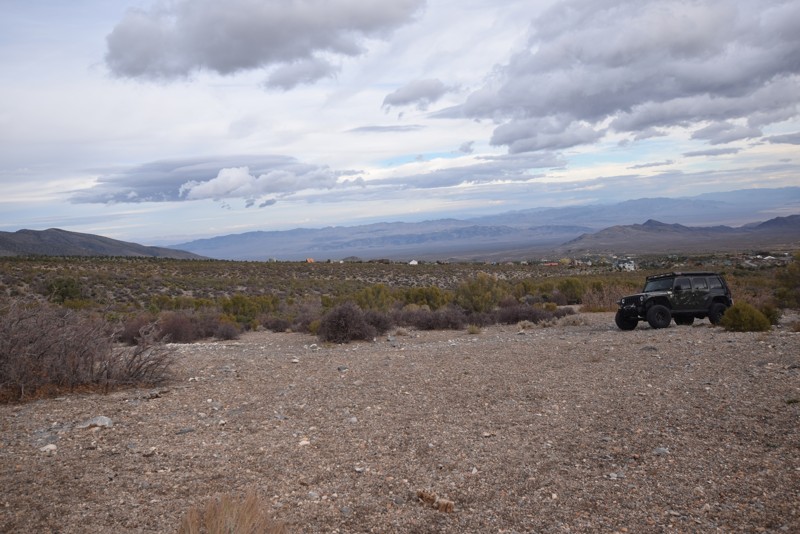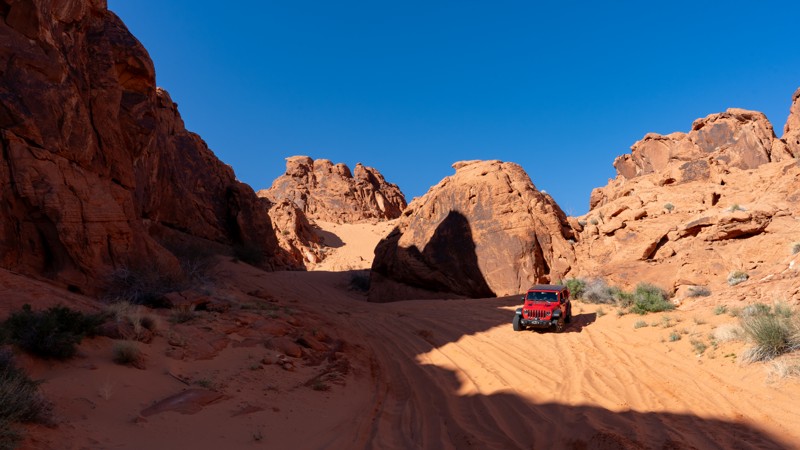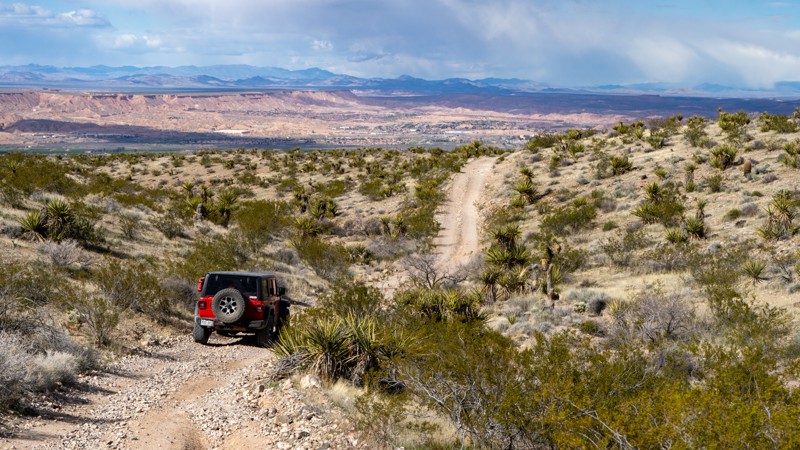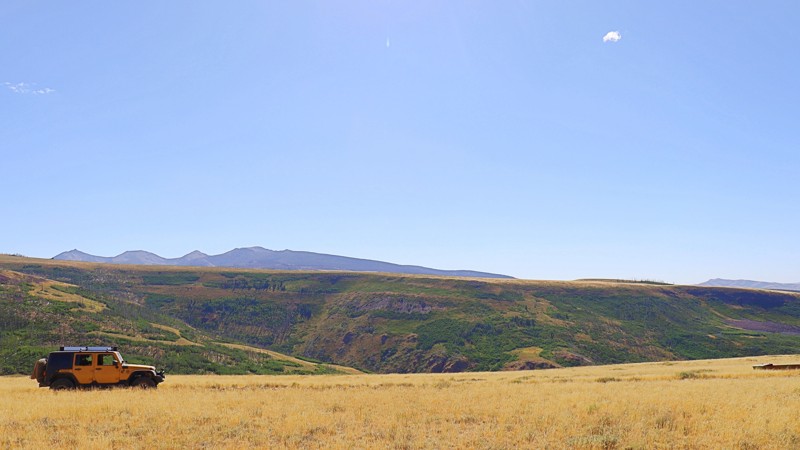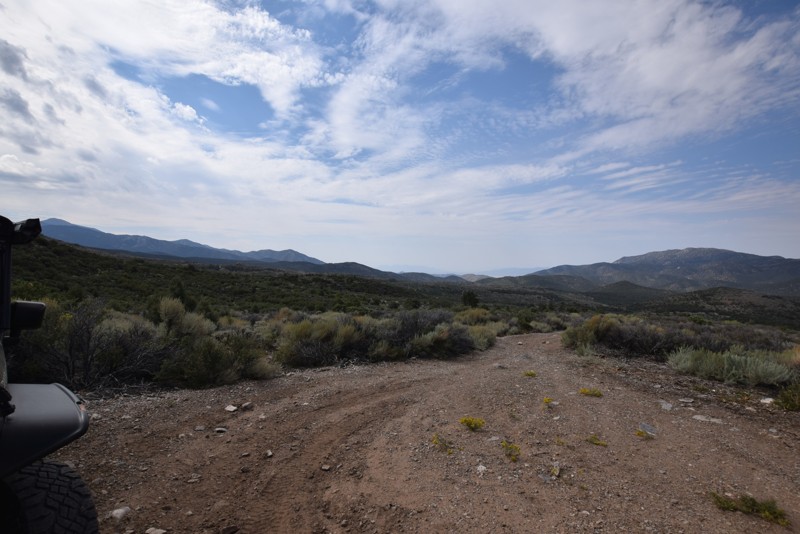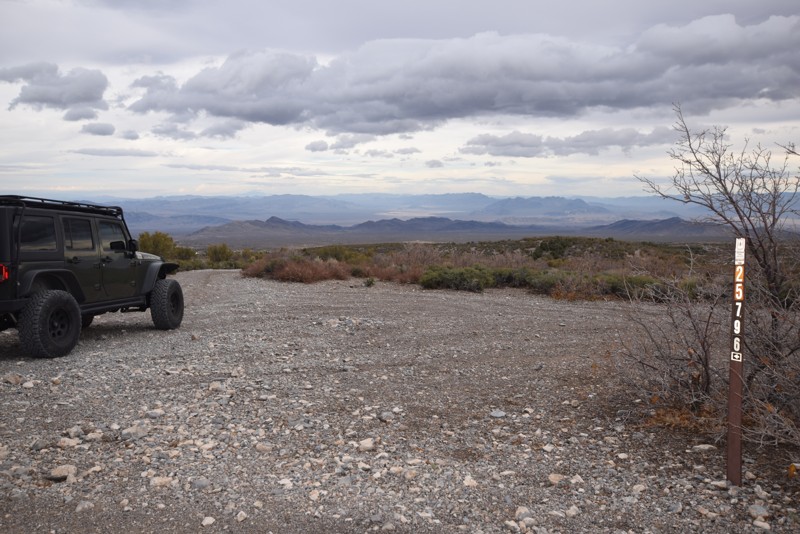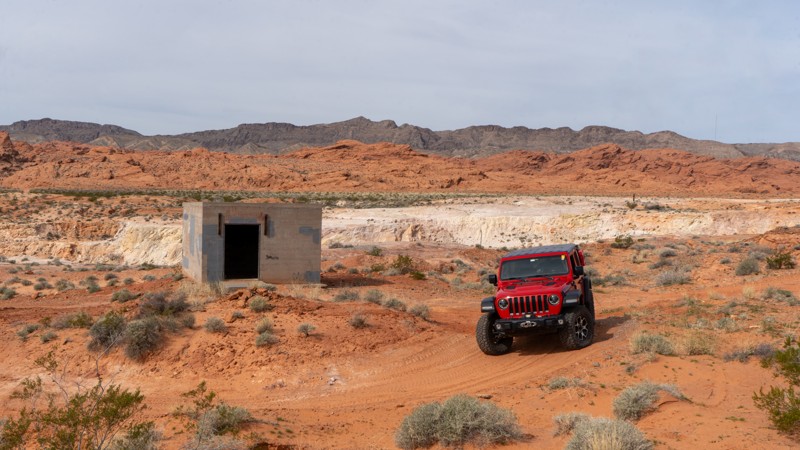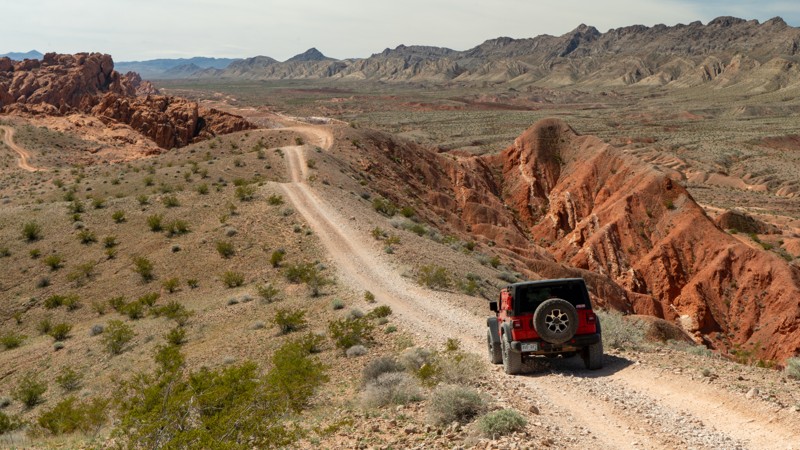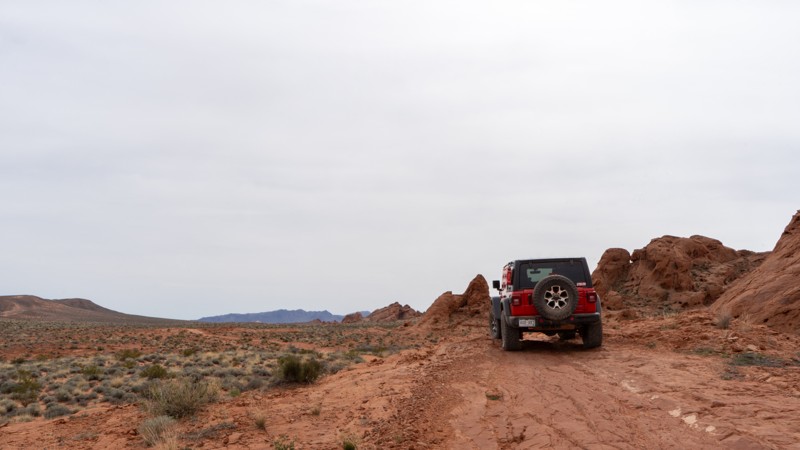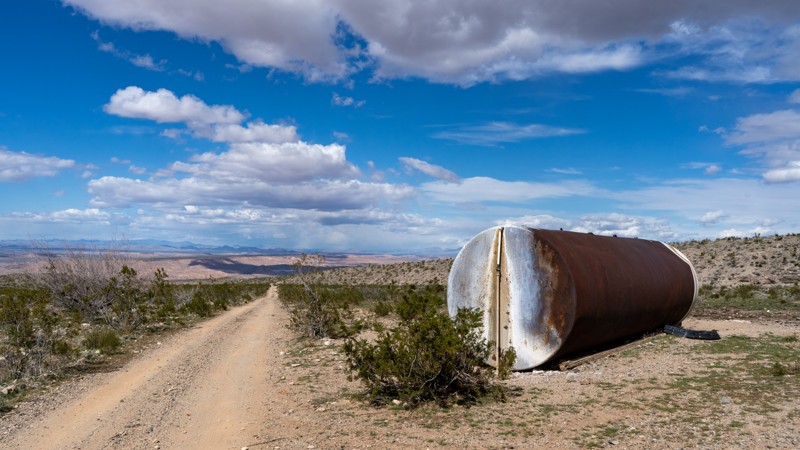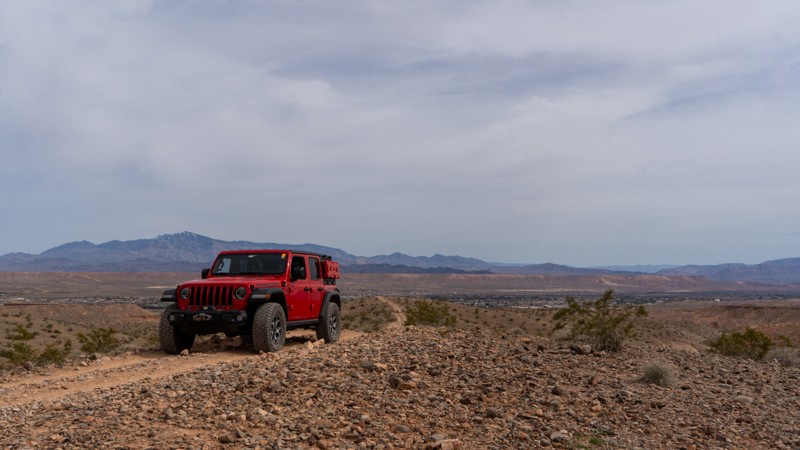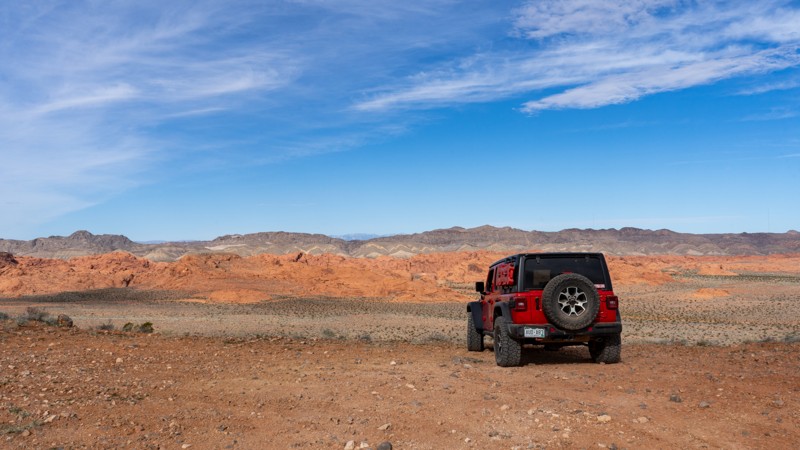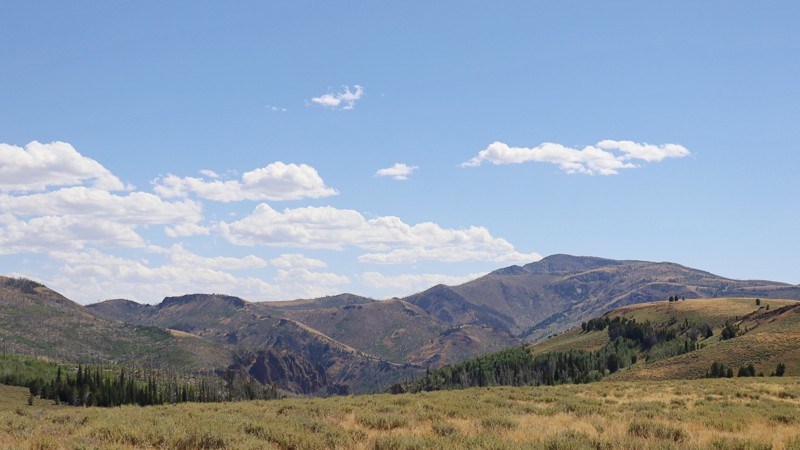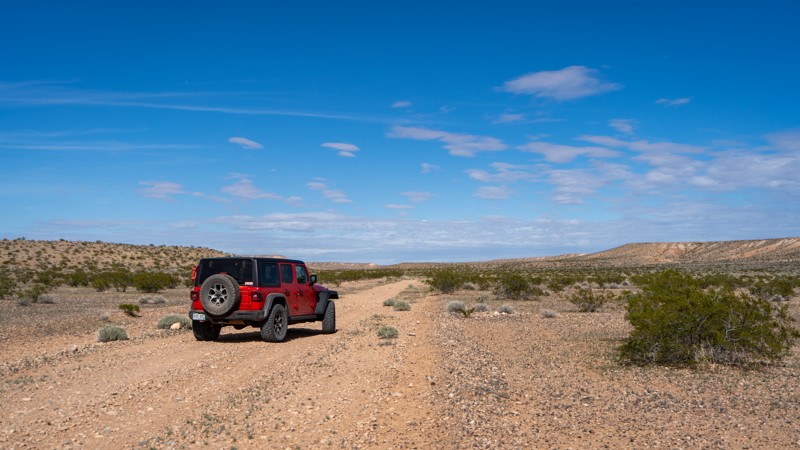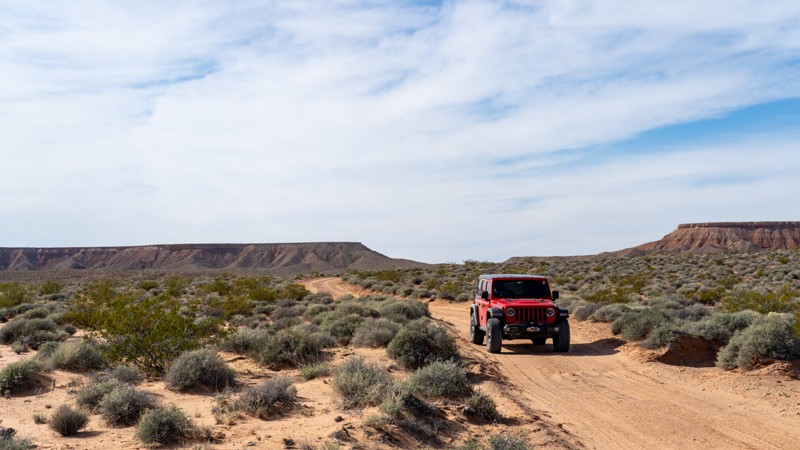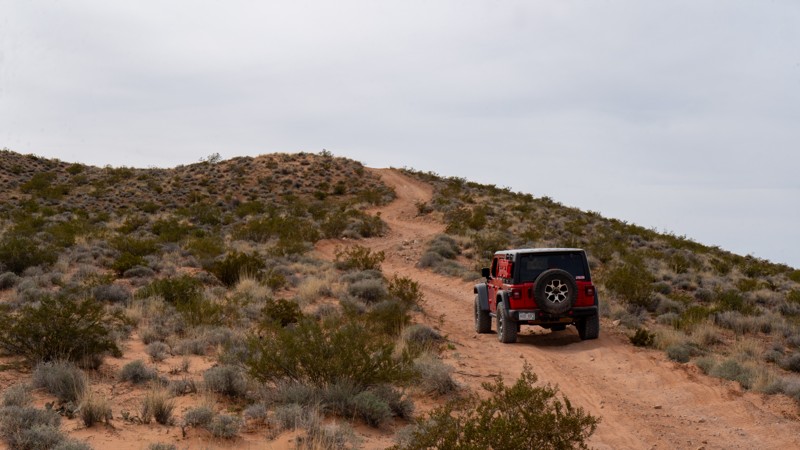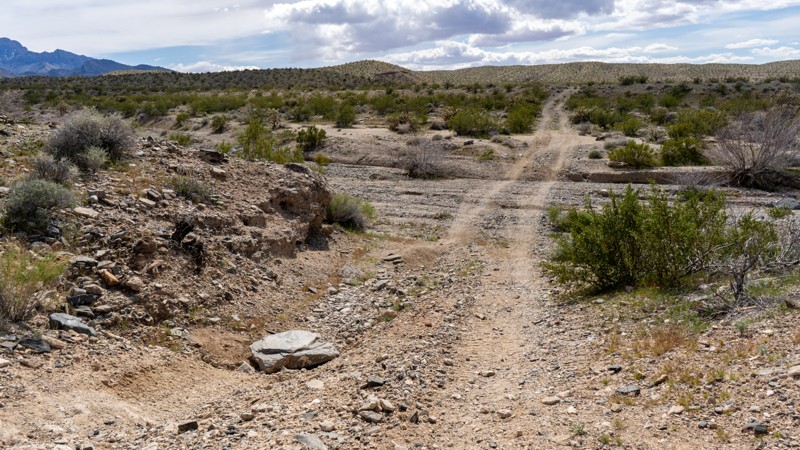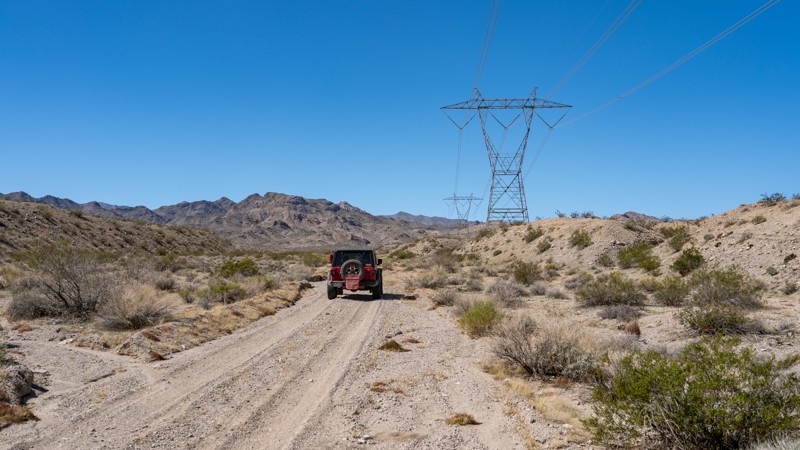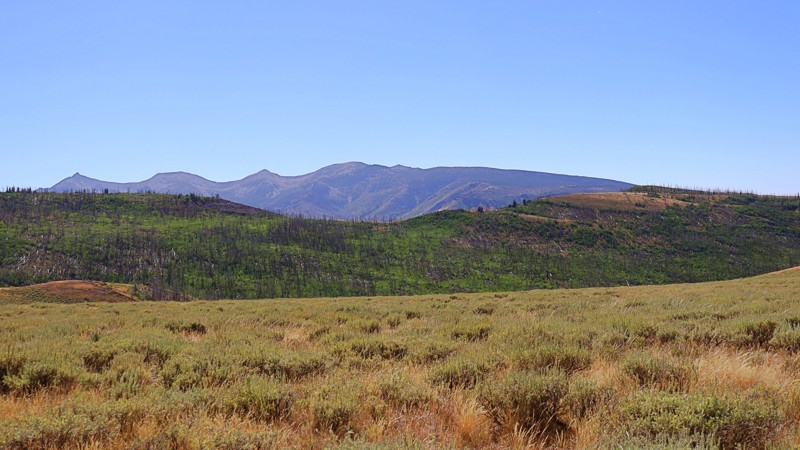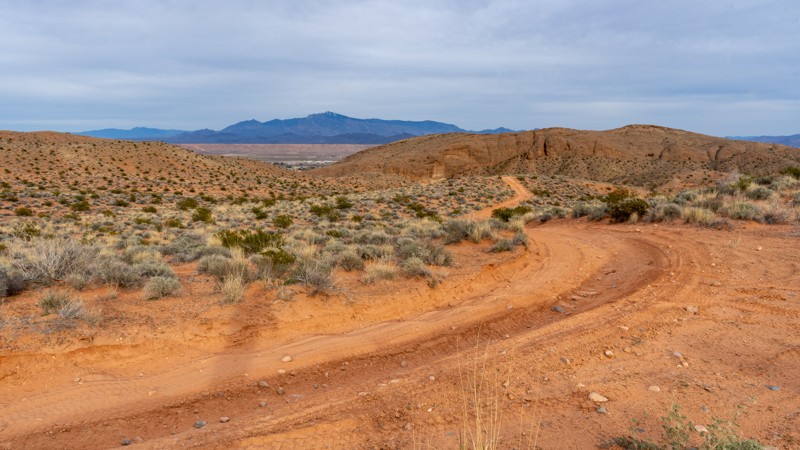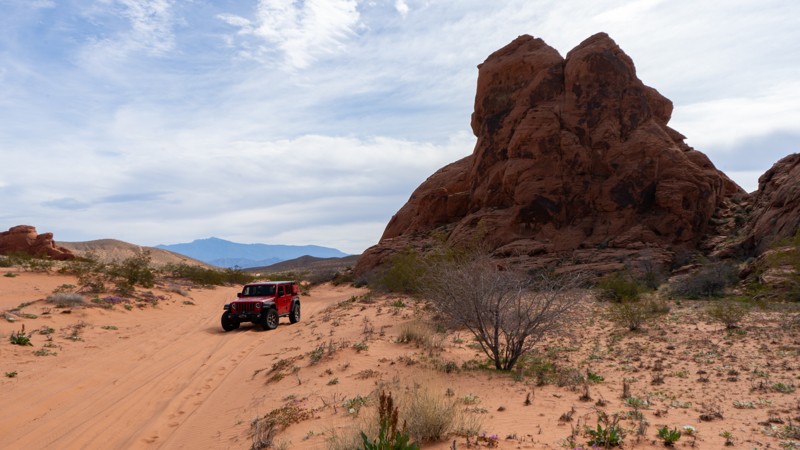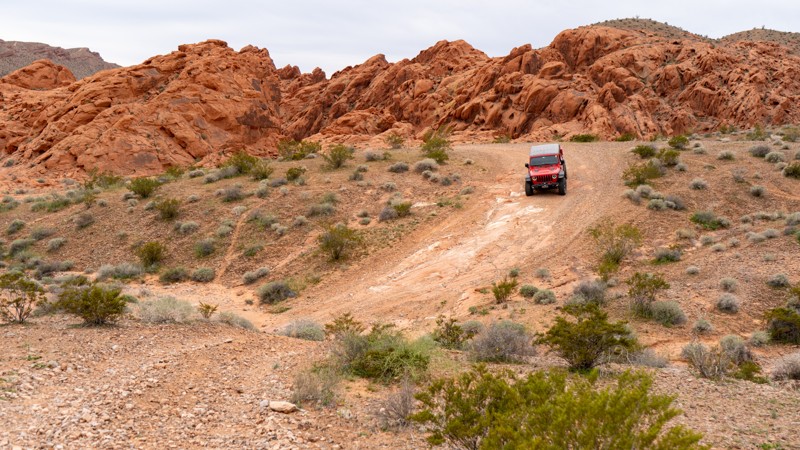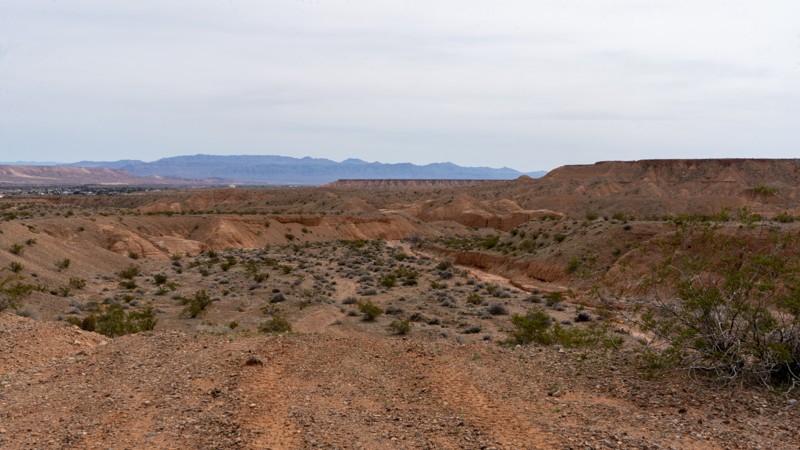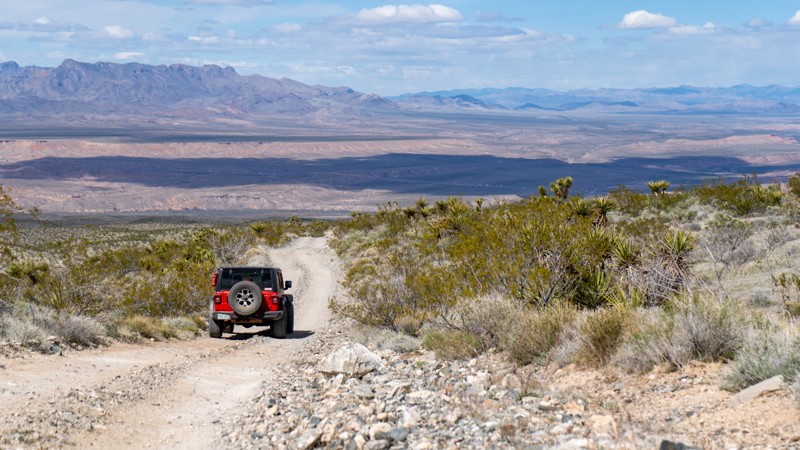Nevada Trails
93
Total Trail Guides87

982
Detailed Waypoints101

Try a Free 7-Day Trial and unlock it all
Most Recent Trail Reviews
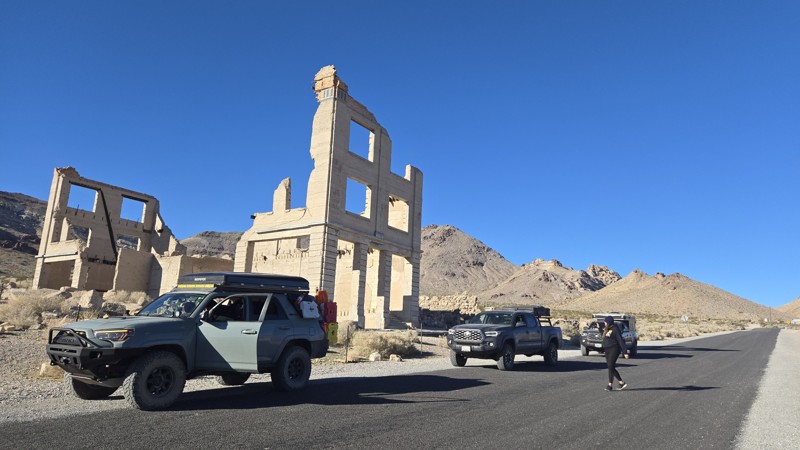
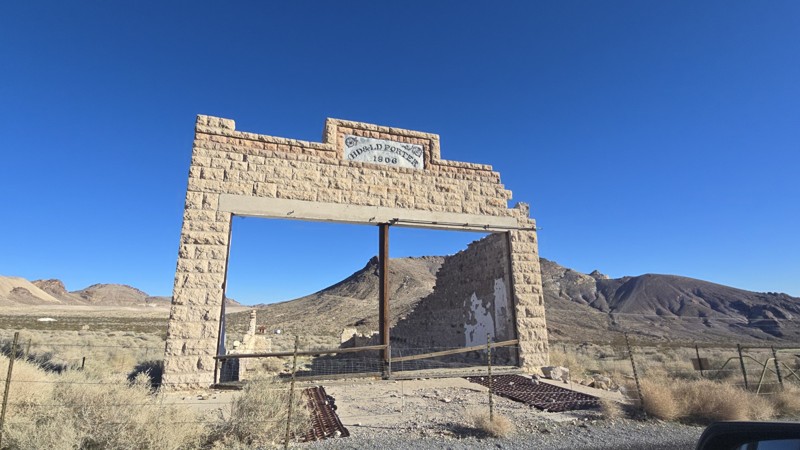
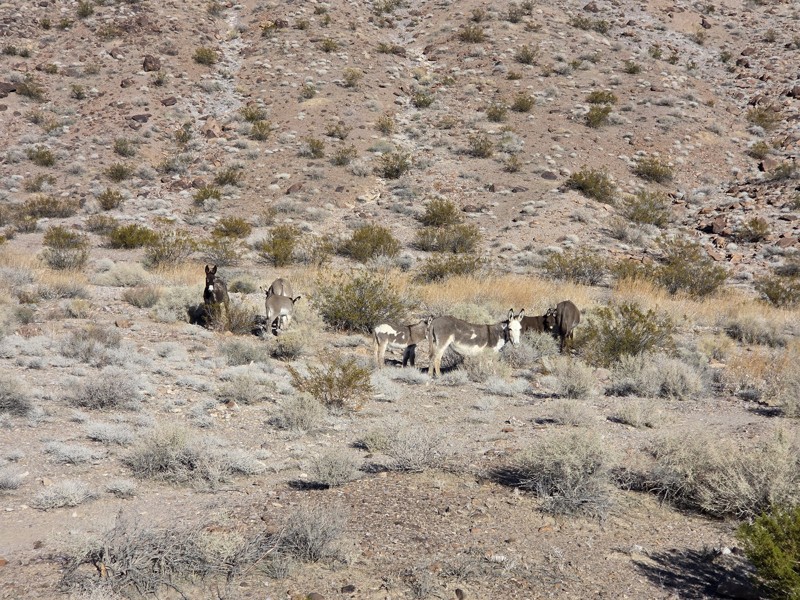
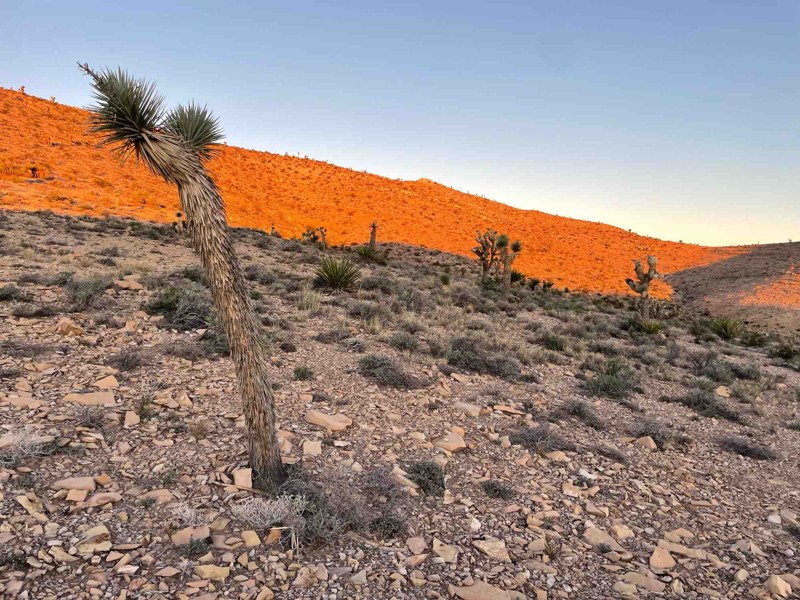
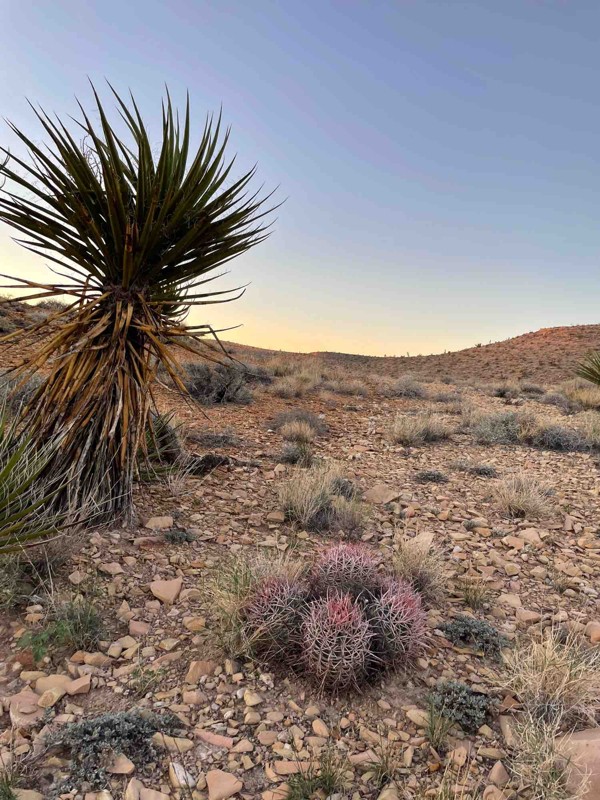
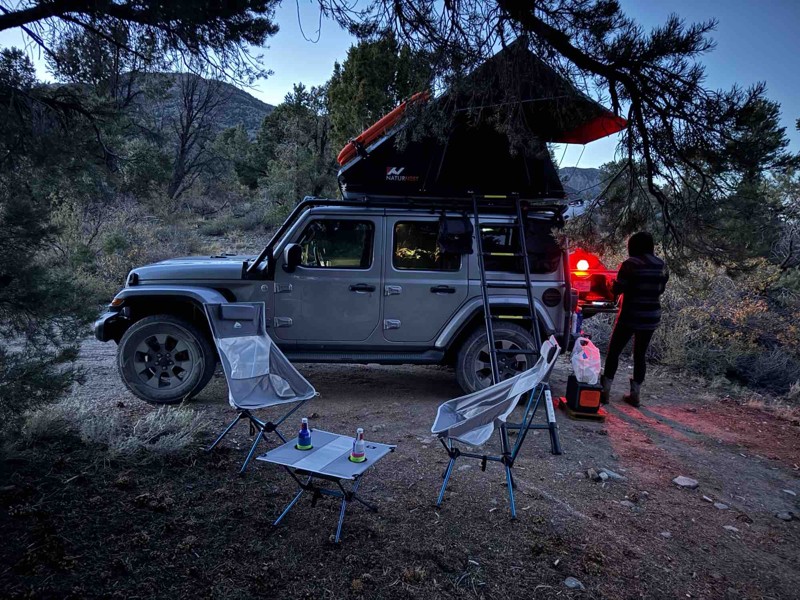
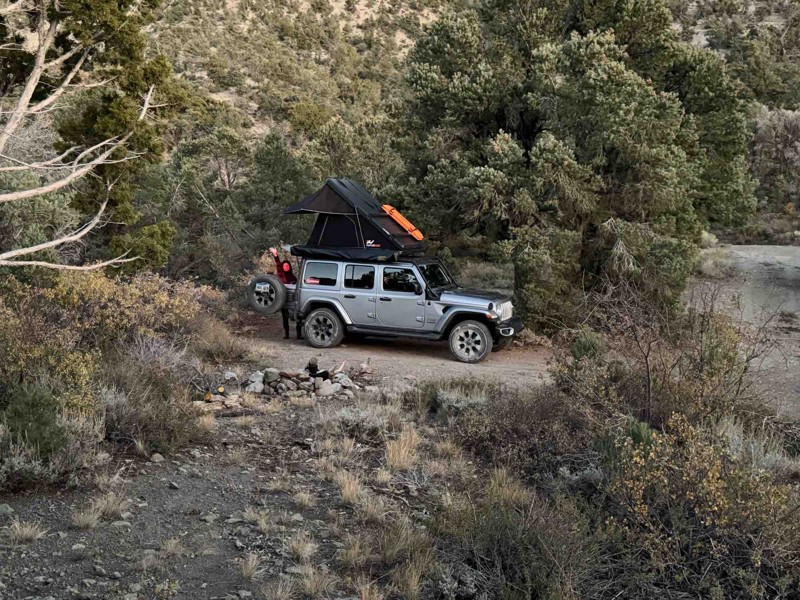
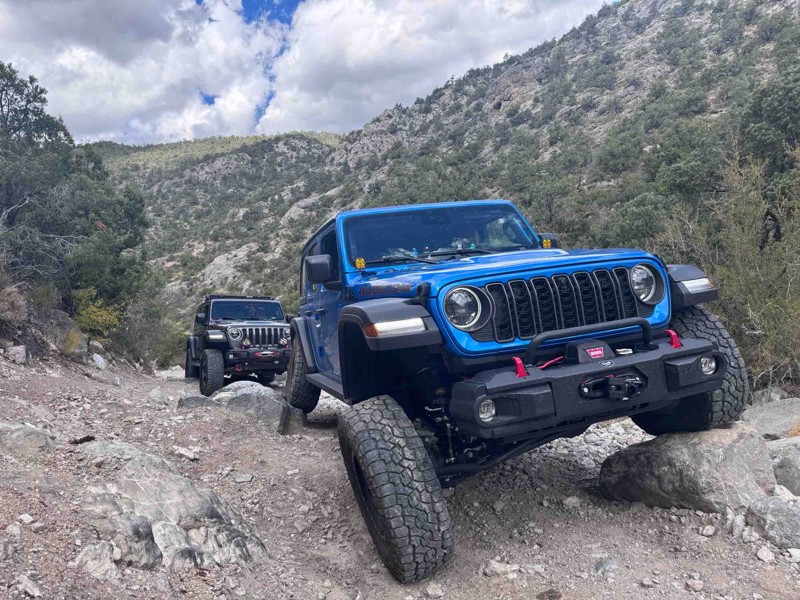
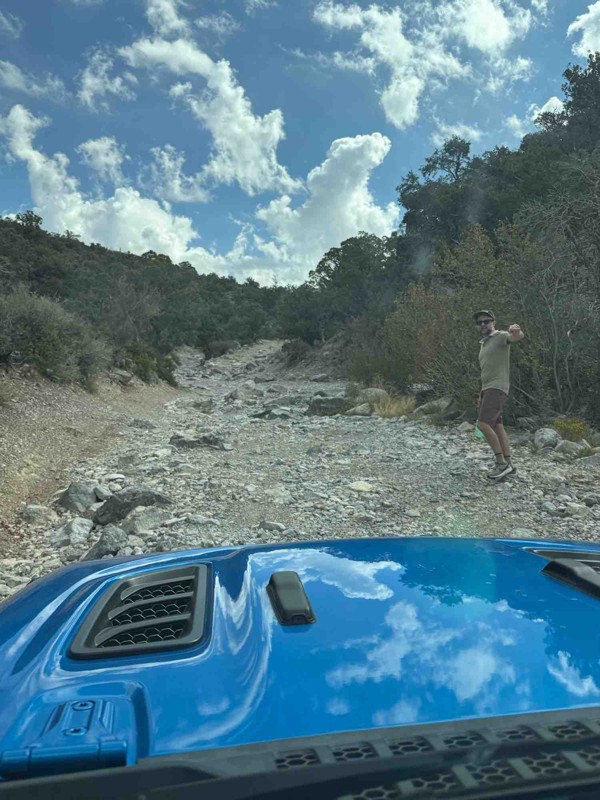

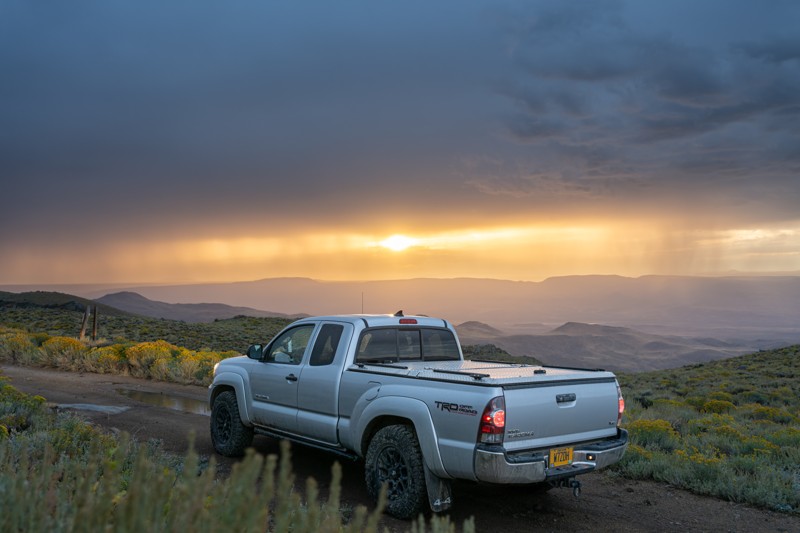
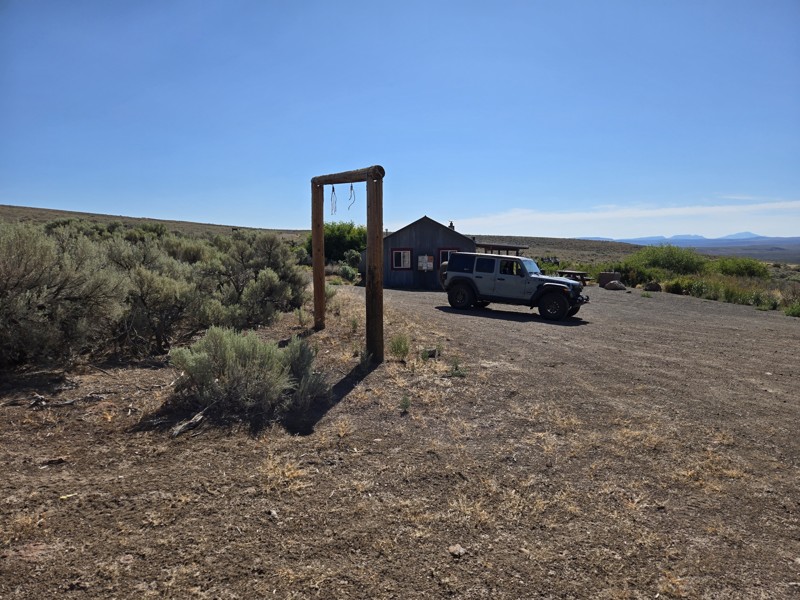

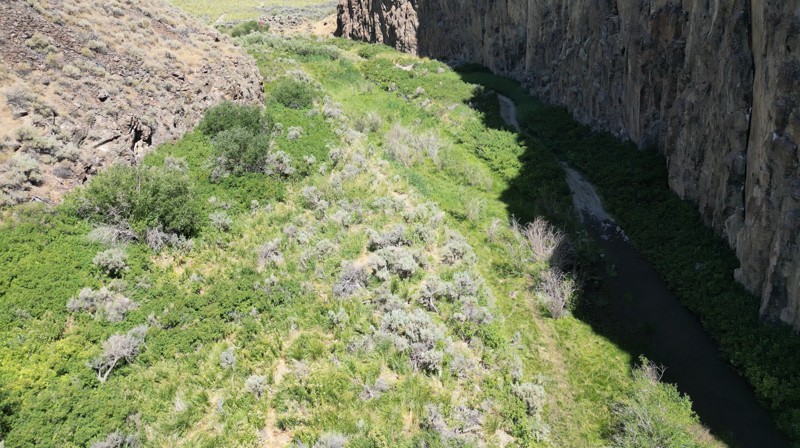
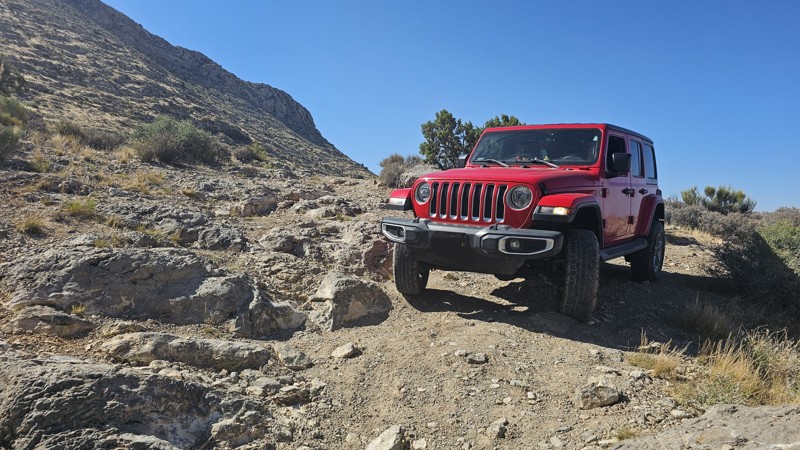
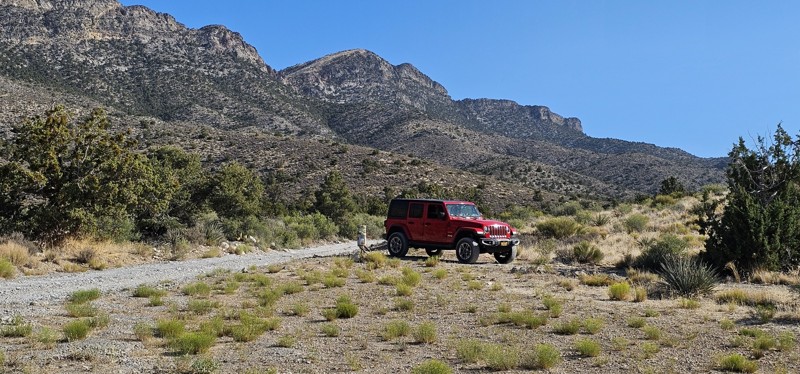
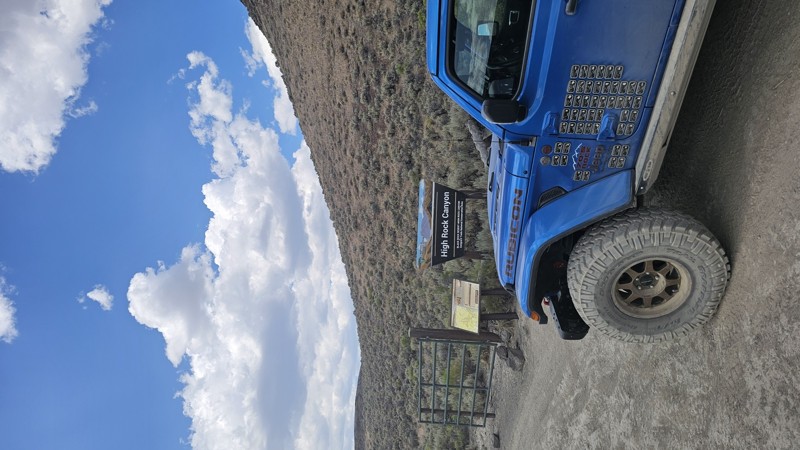
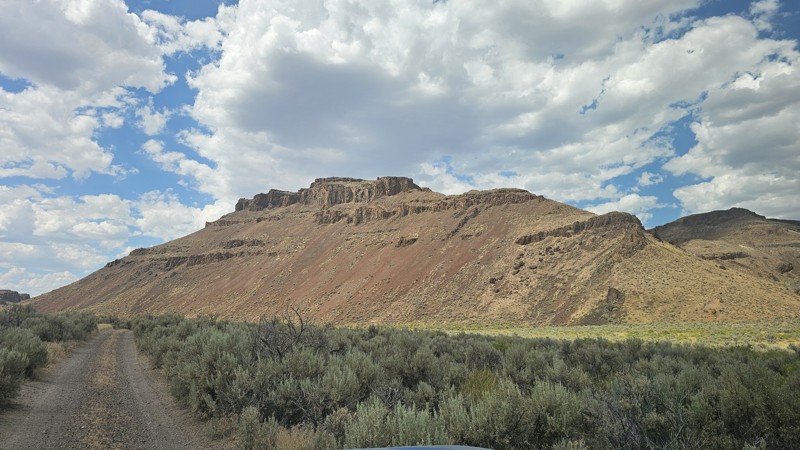
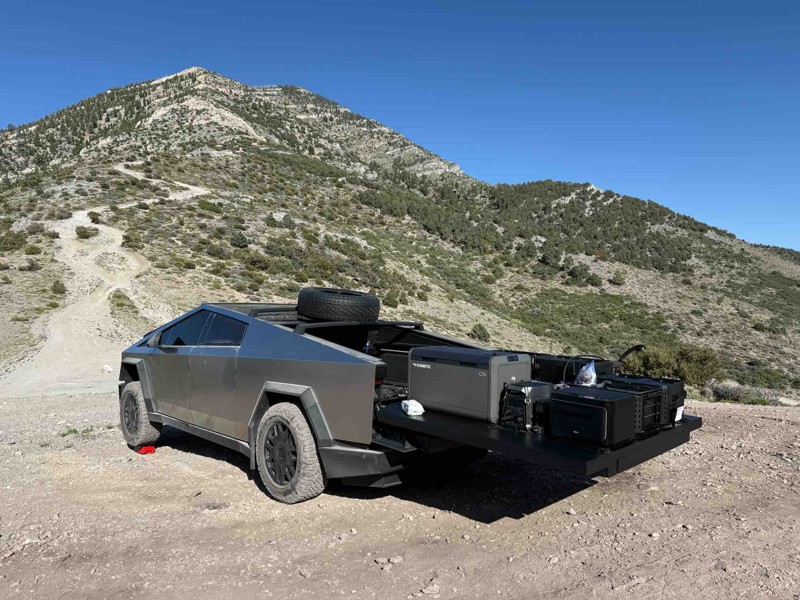
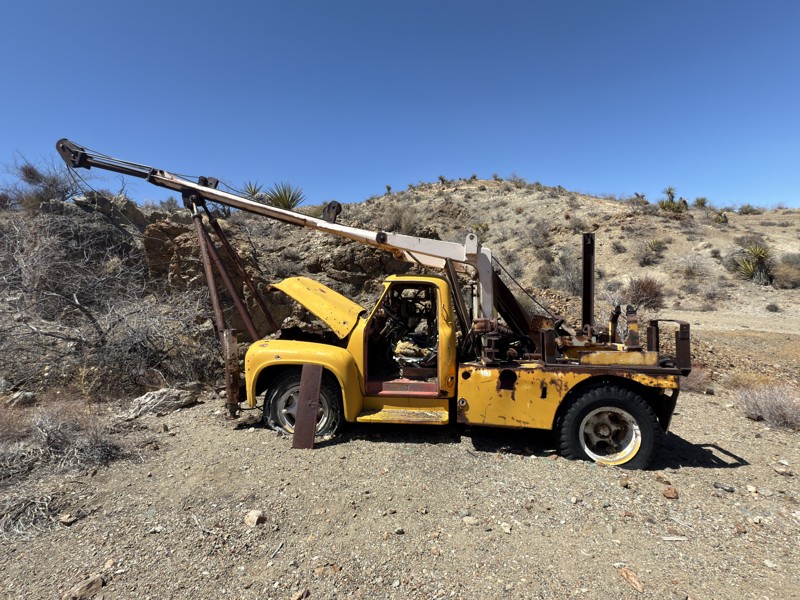
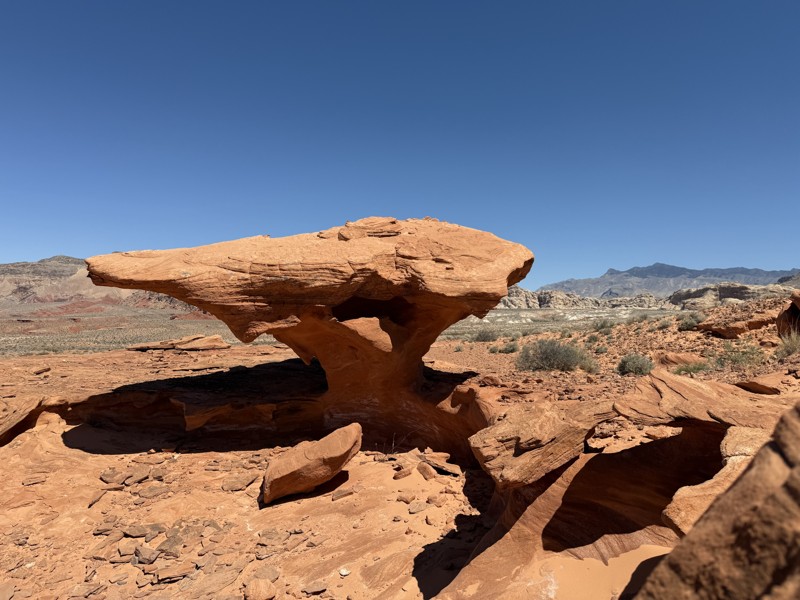
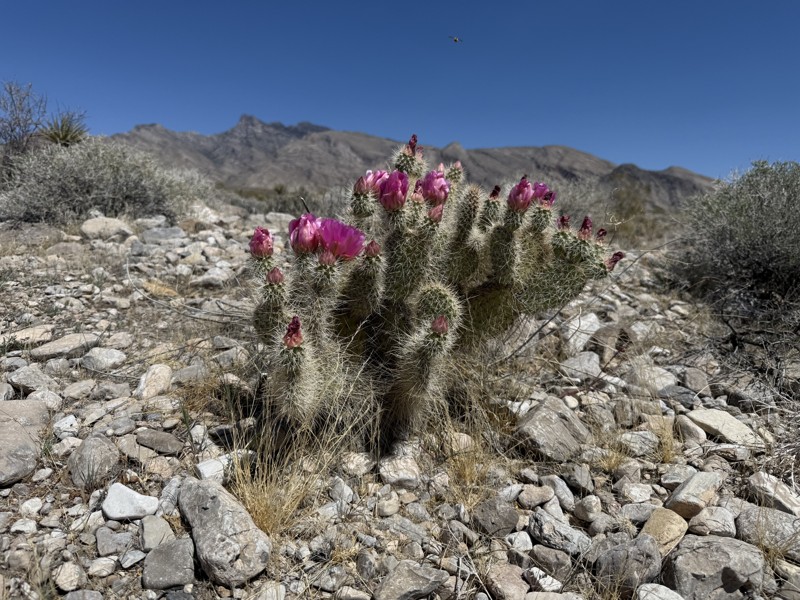
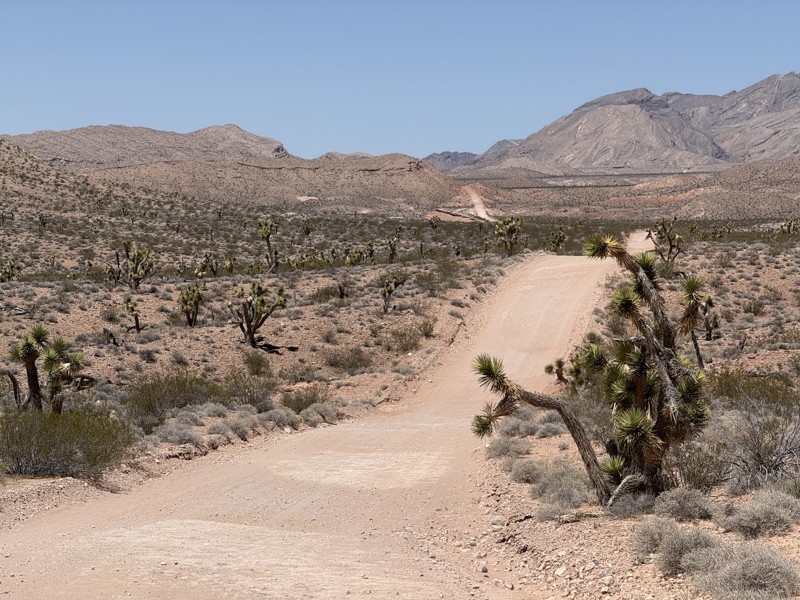
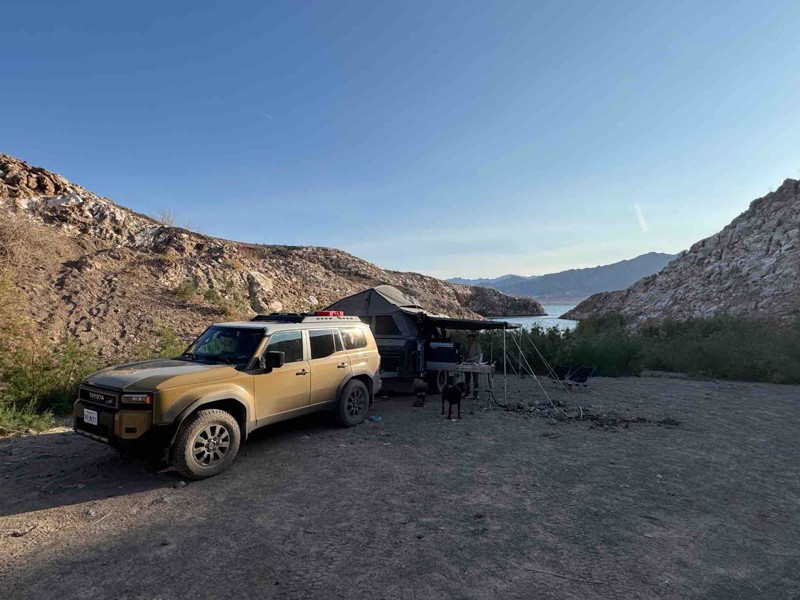
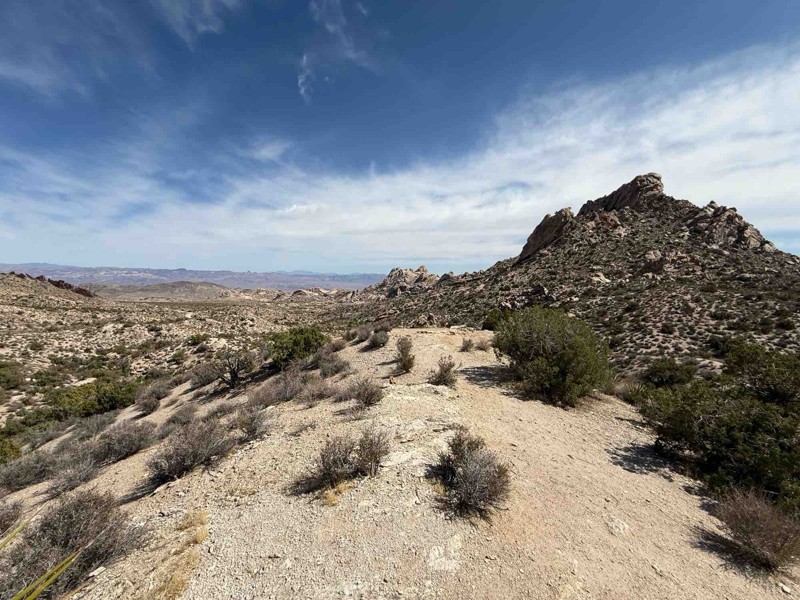
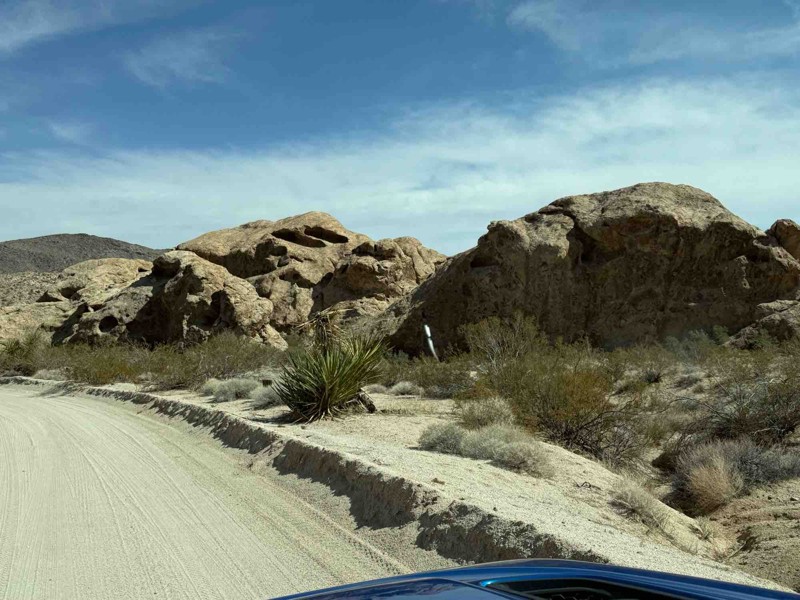
Most Popular
Rocky Gap/Potato Ridge Road
Rocky Gap (also known as Potato Ridge), a favorite of local off-roaders, is located in the Red Rock Canyon National Conservation area that starts just off of Scenic Loop Drive and continues to Lovell Canyon Road. This can be a challenging off-road trail depending on the season and the vehicle driven. There are bypasses for all of the obstacles except for one particularly rocky wash, which gives the trail its name. There is beautiful scenery to be seen during the drive. Evergreens, canyon and rocky landscapes are just some of the views.
Wheeler Pass
Bitter Springs Backcountry Byway
The Bitter Springs Backcountry Byway is a great overland-style trail east of Las Vegas and west of the Valley of Fire State Park. The 26-mile byway connects Interstate 15 to North Shore Road by following old mining roads and washes through the Muddy Mountains. History buffs and geology lovers will enjoy the area, which has multicolored sandstone formations known as the Buffington Pockets, natural springs, small water holes, petroglyphs, and pictographs. Tracks from the Old Spanish Trail, a path created by Spanish explorers in 1776 and later by settlers and miners heading west, can be seen crossing the landscape. Over the decades, as settlers put down roots in the area, mining ventures followed with old borax mines dotting the area where sandstone was quarried. There are plenty of extraordinary views and landscapes to be seen along the Bitter Springs Backcountry Byway, along with great dispersed campsites for extending your adventure. Wildlife in the area includes wild horses, bighorn sheep, birds of prey, and numerous reptiles. Bring your camera, sunscreen, and LOTS of water. Nearby is the Valley of Fire State Park, which has its own scenic views, campgrounds, and facilities.
Tie Rod Canyon
Potosi Pass
Traveling through the scenic Spring Mountains and into the lowland of the Mojave Desert, Potosi Pass Road is a popular recreation area and a relaxing mountain drive through some of the oldest mining history in Nevada. Located less than an hour from Las Vegas, Potosi is a former lead mining district started by Mormon Missionaries in the mid-1850s. The mines were abandoned by the Mormons in 1857, and in 1861, the mines were once again reopened by California Mining interests. During World War 1, the area was an important source of zinc. Today, the trail rewards you with spectacular mountain views, rich desert vegetation, sheer cliff walls, and panoramic sights.
Gold Butte Backcountry Byway
Alamo Road
Burro Wash Road
Burro Wash, located just south of Boulder City, is a popular 4x4 trail that splits two wilderness areas, travels through a narrow canyon with beautiful rock walls, and ends at a cove along the Colorado River. This rugged trail offers stunning views of the Mojave Desert and the surrounding mountains, including Black Canyon. Along the drive, you'll see unique geological formations, desert flora, and possible wildlife, such as big horn sheep. Burro Wash is great any time of the year, but particularly during the summer when it can be used as a getaway from the heat for relaxation and water activities. Gather your food, drinks, shade tents, trunks, and inflatables, and take this spectacular drive down to the river for a full day of fun.
Oro Plata Mine
In 1775, the Spaniards discovered gold in the hills southeast of modern-day Las Vegas and titled the area Eldorado. By the late 19th and early 20th centuries, this area turned into a bustling hub of mining activity and became known as The Eldorado Mining District. In the heart of this district, surrounded by dormant remains of once-prosperous mines, the Oro Plata Mine trail travels through the harsh Mohave landscape, revealing several of these long-lost camps. Along the way, you will relive the tough conditions once traveled by old miners as you travel up a narrow wash and encounter rock ledges, small boulders, and plenty of mining relics. Linking this trail with others in the area can make for an entire day of exploration of Nevada's mining past.
Logandale Main Loop 01
Similar to the red rocks of Moab and Sand Hollow, Logandale Trails is a four-wheeler paradise on a smaller scale. Logandale is located in the Moapa Valley of Nevada, about an hour northeast of Las Vegas. The 21,000-acre trail system is a multi-use park with numerous diverse trails and exceptional interpretive sites, all maintained by local volunteers. While easily traveling through towering red rock canyons, you'll have endless options for a truly epic campsite. The southern boundary is The Valley of Fire State Park, so the natural red Aztec sandstone rock formations are found throughout the OHV park, beginning right at the trailhead. The main loop presented here is an effective way to experience this unique region, view numerous petroglyphs, or connect with just about every trail within the park.
Lucky Strike Mine Road to Angel Peak
A nice relaxing off-road trail ride through the Lucky Strike Canyon located in the Red Rock Conservation area for the first few miles, followed by a more challenging climb on a rocky trail to Angel Peak. Spectacular views of the surrounding valleys. This trail is for those who enjoy views from higher elevations. The trail is a great way to escape the Las Vegas heat during the summer.
Titus Canyon Road
Titus Canyon Road is a spectacular off-road trail within Death Valley National Park guaranteed to please. It is no wonder this one-way trail attracts thousands of globetrotting visitors each year. The 27-mile long road plunges visitors into fossil-rich canyons, over mile-high passes on rocky shelf roads, through a ghost town, along petroglyph-filled walls, and culminates in the grand finale. Titus Canyon Road shrinks to one vehicle-wide and takes the driver and passengers through a 1.5-mile twisty bobsled-like run through its Narrows before dumping everyone out into a wide vista of northern Death Valley. This gem of a trail is truly one of the most satisfying roads in southern California and is on par with many of the iconic trails in the United States.
Kodachrome Road
Named after the old Kodak color film used in still photography, aptly named Kodachrome Road has some of the most colorful landscapes in Nevada. The unique geology in the region has a wide variety of different colored rocks and dirt that create a sand art bottle appearance. Located only minutes outside of the city, this popular trail is a quick escape from the hustle and bustle of Las Vegas without an all-day commitment. Connecting it with other trails within the Sunrise Mountain Special Recreation Area will make for a very colorful offroad day trip in the desert.
Mormon Well Road
Lime Kiln Canyon
Leaving civilization just outside Mesquite, Nevada, Lime Kiln Canyon is a scenic, rough, and rugged gateway into the Grand Canyon-Parashant National Monument. This trail leads into a very remote desert and canyon landscape that ascends steep, narrow paths flanked by towering sandstone cliffs and juniper-dotted plateaus. Lime Kiln Canyon is known for its dramatic geology, with layered rock formations and vivid colors reflecting the interplay of erosion and time. The area provides abundant outdoor recreation opportunities and is popular with all types of users, from off-roading to camping to rock climbing. This trail is remote, with no nearby services, so preparation is essential, but it rewards visitors with unparalleled access to the Arizona Strip and the Parashant's untouched wilderness, a haven for solitude and natural beauty.
Gass Peak Road
Cottonwood Pass
Old Spanish Trail
More than 150 years ago, the Old Spanish Trail was the main commerce route between Sante Fe, New Mexico, and Los Angeles. It passed through the Las Vegas Valley to take advantage of the natural springs, but today, there is very little left of the original route. In August 2001, three segments of the trail that ran through southern Nevada were placed on the National Register of Historic Places, marking the trail's historical significance. The northern section covered here, which is not recognized yet, is an excellent way to have an overlanding experience on a truly historic route. The trail travels from north Las Vegas all the way to the Valley of Fire Highway, accessing some remote and primitive camping along the way.
Bunkerville Ridge
Bunkerville Ridge, bordering the Grand Parashant National Monument, is one of the reasons why you purchase an off-road vehicle. Once a thriving mining district, the region found a resurgence as a popular OHV area. The trail has a beautiful mix of desert plant life, rocky landscapes, and points of interest that captivate everyone. There is an old water tank made to look like a steam locomotive. A natural arch is just a short walk from the trail. You can hike into a slot canyon with cascading waterfalls during the spring and early summer. Side trails lead to multiple old mine sites. You'll wind your way through a narrow canyon, climb steep hills, and ride along narrow ledges, all while enjoying spectacular views of the Virgin Mountains. Be sure to check this one out!
Nelson Roller Coaster
Trekking through the rolling hills of the Eldorado Mountains between Boulder City and Bullhead City, Nelson Roller Coaster is a heart-pumping offroad trail that features scenic views and non-stop adventure as you rise and fall and twist and turn through the remote landscape of southern Nevada. Aptly named, this trail takes you on a desert thrill ride through countless steep climbs and descents that will almost make you nauseous. Combine this short trail with numerous other trails in the area and enjoy an entire day exploring gold mining history dating back to 1775, when Spaniards originally discovered gold in these very hills.
Kings Canyon Road
Lucky Strike Road
Devils Cove Road
Aztec Wash Road
Traveling between the historic town of Nelson and the oasis-like waters of Lake Mojave, Aztec Wash Road is a relaxing desert drive through sandy washes and thick cholla cactus forests with numerous nearby connecting roads to explore. This trail offers a great mix of historical intrigue and natural beauty as you traverse the rugged desert landscape that is known for being one of Nevada's first major gold strike areas. With plenty to see and explore and bountiful recreational opportunities, Aztec Wash is a great place to spend a day or camp out for the weekend.
Lovell Summit Road
Three Corners
Trout Canyon Road
Delamar via Alamo Canyon Road
Carpenter Canyon
Nellis Dunes
Anniversary Mine Trail
Anniversary Mine Road is located east of Las Vegas in the Lake Mead National Recreation Area (LMNRA). The LMNRA, operated by the National Park Service, is located in Nevada and Arizona. Lake Mead was formed in 1935, less than a year before the construction of the Hoover Dam was finished. 1964 Congress approved the expanded area as the first National Recreation Area. The Anniversary Mine was started in 1921 to produce Borax, refined from the colemanite deposits of the Lovell Wash and White Basin areas. The mine was closed in 1928 due to operating costs and growing competition in California. During its operation, the Anniversary Mine produced approximately 200,000 tons of Borate. Aside from the mine site and tailing pile, the trail provides access to the Anniversary Narrows slot canyon hike and Ore Car Mine hobbyist rockhounding area. The Muddy Mountains Wilderness Area is located just to the north for non-motorized backcountry adventure.
Christmas Tree Pass
Moon Rocks (Area)
Railroad Canyon
Delores
Old Spanish Trail North
The Old Spanish Trail in southern Nevada was the main trade route in the region from 1826 to 1848. The settlers and traders of the time had to travel through these harsh desert conditions to reach settlements to the north. This northern section follows a portion of the historic trail that borders the Valley of Fire State Park. The route is easy enough for stock 4x4s and an excellent way to connect Las Vegas with many other regional trails. The early section of the trail is a vast open desert, but it eventually works its way into a very scenic canyon with spectacular views of the surrounding mountains. The entire area is also great for those interested in geology and rockhounding.
Six Mile Wash
Sunrise Pass Road
Sunrise Pass Road is a graded dirt road. It can be accessed from the Johnson Lane OHV Park located east of Minden, Nevada. As the road gradually ascends to Sunrise Pass, it traverses alluvial plains covered in sage and low canyons with juniper trees. Rising to 7,087' at Sunrise Pass, the road takes you to the heart of the Pine Nut Mountains. From the top of the Pass, the road descends to the very north end of Smith Valley, Nevada.
Numerous side trails lead to dispersed campsites, natural springs, abandoned mines, and scenic views. Most of this wide dirt road can accommodate two-way traffic. Most of the Pine Nut Mountain area is managed by BLM.
During dry weather, this road can be driven with 2-wheel drive high clearance SUV vehicles. During the winter months, the mountains get snow, and 4WD with recovery equipment, water, and extra supplies are warranted. Muddy road conditions are present during the spring thaw and wet weather. During these conditions, canyon washes may have shallow water crossings.
Intermittent to no cell service was available on the T-Mobile network along this road. Minden and Carson City both have gas, food, and lodging, and both are 9 miles from the trailhead.
Boathouse Cove Road
Boathouse Cove Road is one of a handful of trails in the Lake Mead National Recreation Area (LMNRA) leading to the waterfront along the northern edge of Lake Mead. It makes a great day trip for activities like paddle boarding, hiking, and camping. Geology enthusiasts and rockhounds will love the entire LMNRA area for its beautiful formations and mineral deposits. For those who appreciate flora and fauna, various species of cacti can be found along the trail, and it is not uncommon for wild burros and horses to roam the area.
The LMNRA, operated by the National Park Service, is located in both Nevada and Arizona and includes Lake Mead and Lake Mohave. Lake Mead was formed in 1935, less than a year before the construction of the Hoover Dam was finished, and in 1964, Congress approved the expanded area as the first National Recreation Area.
Fish Lake Valley Hot Well (Route)
Copper Cache Canyon
Mormon Mesa
Old Como Road
Como, Nevada, is a gold-mining ghost town established in 1862 with a peak population of "several thousand" people, according to a Mining and Scientific Press article published in 1912. Today the population is zero. Back then, the town folk enjoyed eight saloons, 4 stores, 4 hotels, a blacksmith, and many other services. The most famous residents were Paiute Chief Truckee and his son Chief Winnemucca.
Como, at an elevation of 7,116 feet, can be reached via a poorly graded dirt road that is under-maintained and full of cobblestone size rocks. It is a very bumpy ride but does accommodate two-way traffic. During dry weather, the road can be driven with a 2-wheel drive high clearance SUV.
Dispersed camping is allowed on BLM land. Intermittent to no cell service was available on the T-Mobile network at this location. Food, gas, and lodging are available at the trailhead, just outside Dayton, Nevada, along Highway 50.
Flat Top Mesa
Echo Bay Wash
Callville Wash South
Callville Wash South is located east of Las Vegas in the Lake Mead National Recreation Area (LMNRA). Named after Mormon settler Anson Call, who established Callville in 1864, the Callville Wash provides a natural route for seasonal water to flow from Muddy Peak and the Muddy Mountains Wilderness down to Callville Bay on Lake Mead. Though the trail only travels around 500 feet of elevation, the shift from the summit of Muddy Peak to the approximate banks of Lake Mead is an impressive 4,000-foot elevation difference.
Sent by Brigham Young, Anson Call established Callville as an outpost for the Mormon settlement in December 1864. Callville was used as a military fort/garrison, but just five years later, the garrison was shut down due to the end of the war and lack of conflict with native peoples. The completion of transcontinental railroads made Callville obsolete, and it was abandoned. Structures could still be seen in the 1930s until the Colorado River was dammed to allow the filling of Lake Mead. Today, Callville Bay Resort and Marina are closely located to the original historic site.
Weiser Valley
Weiser Valley, located within the Logandale OHV area, is an excellent and easy way to catch a glimpse of the unique landscape that this region of Nevada is known for. The trail travels through a picturesque canyon with unique and colorful rock formations, including a natural arch high up along a rocky ridgeline. Weiser Valley can be used to access Logandale OHV Trails such as The Bowl, Matterhorn, and Hawkins Trails, as well as the remnants of the Silver Queen Gypsum mine. A large group camping area at the trailhead makes for an ideal base camp while you explore the area for days. Connecting this trail with others makes for a long and scenic overland route.
Gold Strike Pass
Wooden Pole Powerline Road
Wooden Pole Powerline Road is a fast and fun trail to visit while escaping the Vegas heat and local traffic. Located near Mount Charleston and the Spring Mountain Recreation areas, the trail allows for great views of the surrounding mountains, valleys, the thicker and greener vegetation, and even a distant view of the Las Vegas strip. This is an excellent trail for those who want an enjoyable drive with mild challenges and fantastic views.
McCullough Pass
Boxcar Cove Road
Traversing a wide dry wash surrounded by ancient ocean-bottom mud hills, Boxcar Cove Road is one of a handful of trails in the Lake Mead National Recreation Area (LMNRA) leading to the waterfront along the northern edge of Lake Mead. This remote trail winds through the stark beauty of the Mojave Desert landscape, offering travelers expansive views of the surrounding canyons, unique rock formations, and glimpses of Lake Mead. The rewarding cove at the road's end is a perfect spot for outdoor activities like fishing, swimming, and picnicking, making this a great off-road trail for the weekend adventurer.
Logan House Loop
Logan House Loop is on a historic section of land near Lake Tahoe. Purchased in 1863 by Robert and Mary Logan, just before Nevada became the 36th state, the Logans opened the Logan House hotel on the lakeshore below this trail. In Mark Twain's San Francisco Letters of 1865, he describes the hotel as "new, handsomely furnished, and commodious; it stands within fifty feet of the water's edge, and commands a view of all the grand scenery there about; its table is furnished with the best the market affords, and behold they eat trout there every day."
Unfortunately for the Logans, the property fell victim to the tax burden. It was sold in 1866 to Henry M. Yerington, a timber baron and future Virginia and Truckee Railroad superintendent. The land was logged, and the house was left to decay.
The loop trail is accessible via Genoa Peak Road. It consists of rough dirt, loose gravel, rocks, and occasional asphalt. 4WD is unnecessary, but high clearance helps avoid numerous exposed rocks. It's an easy ride for all skill levels and caters to those who enjoy scenic drives through dense vegetation. There are several creeks along the way, but none that require crossing. There is no camping on this trail.
Secret Pass - Nye County
Bowman Reservoir
Helene and Delamar Ghost Towns
Wallace Canyon Road
Badger Valley Loop Nevada
Bull Valley Road
Little Finland
Knight Ranch Road
Rhyolite Railroad Loop & Ghost Town
Callville Wash North
Callville Wash North is a rugged backcountry route within the Lake Mead National Recreation Area that traverses a scenic, geologically rich landscape, including layered sedimentary rocks, volcanic ash deposits, and cliffs interwoven with gypsum veins. The road offers views of notable formations like the Bowl of Fire, known for its vivid red, orange, and white rock formations. This trail provides hikers with easy access to the Bowl of Fire hiking trail, which travels into the Muddy Mountains Wilderness Area, providing access to impressive bright red rock formations and slots like Eagle Rock, Heart Bowl, Leaning Towers, and the namesake Bowls of Fire.
Big Wash Trail
This BLM trail begins in Utah and ends in Nevada at the intersection of the much easier route to Lexington Arch in the Great Basin National Park. This seldom-used trail does not appear on most maps or GPS navigation systems. Google Maps does show it as Route 950, forking off Route 948 off Highway 21.
The first portion of this two-track is rough, lightly traveled, and follows the rim of Hidden Canyon. Be careful and slow. The many twists and turns are close to the rim edge. Once past the canyon rim, the climb begins, and though not steep, it is steady, very rocky, and at times off-camber. High clearance 4x4 is definitely needed here, but the views are worth the effort. The trail is remote, surrounded by Great Basin Park to the west and canyons below to the south and east. Once at the peak, the drop is rocky and steep. First gear and 4x4 low are your friends on the descent.
Camping opportunities on the route are present but minimal with just a couple of pull-offs with fire rings. The Lexington Arch hiking trailhead is close by, as are a few other fun and scenic trails.
Charleston-Jarbidge
The journey to the remote town of Jarbidge begins either in Murphy Hot Springs, Idaho, via Three Creek Road or from Deeth, Nevada, along the Charleston-Deeth Road, which seamlessly transitions into Charleston Jarbidge Road as it winds through the rugged passes of the Jarbidge Mountains and Wilderness range. The town’s name, originating from the Shoshone language, translates to “monster that lurks in the canyon” or “weird beastly creature,” a tribute to the legend of Shoshone warriors who are said to have trapped this mysterious being in what is now Jarbidge Canyon.
The discovery of gold near Jarbidge in 1909 ignited one of the last great gold rushes of the Old West, swiftly transforming the town into a thriving hub with a population nearing 2,000 by 1911. Jarbidge also earned notoriety as the site of the last stagecoach robbery in 1916. However, the town’s prosperity waned after World War I, when much of its mining infrastructure was dismantled for the war effort. Mining operations ceased entirely in 1932 but were revived in 2013 by re-issuing gold removal permits.
Jarbidge is one of Nevada’s most remote towns, renowned for its extreme isolation, accessible only via the Charleston-Jarbidge Road. This route can be treacherous, and it is often closed from October to July due to heavy snowfall near Bear Creek Pass. Due to the steep grades and occasional washouts, all-wheel drive or four-wheel drive vehicles are recommended. Nestled in a canyon and surrounded by towering mountains, Jarbidge is not only the most isolated town in Nevada but also one of its most visually stunning, with air quality among the purest in the nation. This hidden gem offers a unique blend of history and natural beauty, making it the perfect gateway to exploring the untouched wilderness of northeastern Nevada.
The Jarbidge Wilderness Area, close to the Idaho border, unfolds as a mesmerizing landscape of forested peaks, deep river-carved gorges, and expansive basins. Visitors might come across arbor glyphs—carvings left by Basque sheepherders in the aspen groves that dot the wilderness. Despite its rugged terrain, the area remains accessible to adventurers of all levels. The historic town of Jarbidge serves as an ideal base camp, and the Charleston-Jarbidge Road offers eight free USFS-managed campgrounds along the rushing Jarbidge River and numerous opportunities for dispersed camping. The wilderness provides unparalleled fishing, hunting, and exploration opportunities for those seeking a deeper connection with nature.
Fisherman's Cove
Telephone Cove Road
This trail provides access to the Telephone Cove Beach area from NV highway 163. It is a wide dirt road that easily will accommodate two-way traffic. One section contains some deep holes. Even though this one section of road is a bit challenging, I have watched regular cars, vans, and vehicles with trailers maneuver through. Camping by the lake is permitted following the guidelines posted.
Bunker Pass
Crawdad Cove Road
Crawdad Cove Road is an off-road trail located east of Las Vegas in the Lake Mead National Recreation Area(LMNRA). The LMNRA, operated by the National Park Service is located in both Nevada and Arizona. It follows the Colorado River corridor. The LMNRA includes Lake Mead and Lake Mohave, both reservoirs created by Hoover and Davis Dams plus their surrounding areas. Lake Mead was formed in 1935, less than a year before Hoover Dam construction was finished. In 1964, Congress approved the expanded area as the first National Recreation Area. This off-road trail makes for a great day trip visit Lake Mead for swimming, boating, kayaking, rafting or other water fun. Large areas available for camping, both tent and trailer. There are multiple side washes and small hills for hiking and exploring. Just be sure to bring your trunks, food, drinks and some shade. The trail is an easy drive with a scenic desert landscape. There are also beautiful views of Lake Mead as you approach the end of the trail. Plenty of wildlife was observed to include rabbits, road runners and multiple types of lizards.
Six Mile Beach Trail
Twelve thousand years ago, Lahaton Lake covered a large portion of the then-wet Nevada basin. In 1905 Lahontan Reservoir was created and named after that huge ancient lake. With 69 miles of willows and cottonwoods scattered along its shoreline, the park is one of the most popular places in Nevada to boat, fish, water ski, and horseback ride. The Lake is open to the public year-round. Lahontan is also a nesting site for bald eagles. Wild horses, bobcats, foxes, and deer share the park with a variety of birds, including migratory waterfowl, pelicans, herons, egrets, and hawks.
The west shore at Lahontan State Recreation Area offers great camping. Open year-round with a nightly fee of $20.00 per vehicle, primitive beach camping is permitted in all areas except for day use and boat ramp areas. A camping limit of 14 days in a 30-day period is enforced. Leashed pets are welcome.
The trail surface varies with smooth compacted dirt, mud, and sand. The trail is generally level with gradual changes in grade. Stock 4WD SUVs will work during dry weather. Drivers should be careful of the deep arroyo sand. Use caution during wet weather since the sandy arroyos are prone to flash flooding. When wet, portions of the trail are almost impassible. The trail crosses a mixture of public and private land. Please be respectful of the sections of private property.
Mack's Canyon
Sawmill Road West
Wild Horse Trail
Wild horses and pronghorn antelope are often seen on this trail. Running across BLM land, there are dispersed campsites available along the route. There are also springs, old mines, and wildlife guzzlers.
Wild Horse Trail takes you from the outskirts of Dayton, Nevada, to Clifton Flat. The trailhead starts at the unlocked wild horse protection gate at the east end of Dayton Valley Road. Properly close and latch the gate after you enter.
Wild Horse Trail begins as a graded dirt road. As you ascend, the road narrows to a double-track trail. The trail's surface is mostly smooth compacted dirt with patches of rocky rubble. There are a couple of short steep hill climbs/descents with loose 6-inch rocks. Low-clearance vehicles may catch and drag the loose rocks. High clearance or lifted vehicles are better suited for this trail. The many juniper trees adjacent to Wild Horse Trail can leave minor pinstripes on Jeep-sized vehicles. Several seasonal streambeds cross the trail. Caution is advised during storms and spring snow melts.
Cell phone service, gasoline, food, and lodging are available in Dayton, Nevada, 2 miles from the trailhead.
Pine Nut Road
Double Powerline
Double Powerlinel, located near Moapa Valley, is an excellent alternative for off-road users looking to access other trails without traveling on the highway. The route easily and quickly connects two popular OHV regions. The trail crosses underneath large power lines while traveling through sections of private property. The route can be combined with other published trails to make for a long and memorable overland route. The terrain in the area varies from rolling sand hills and jagged ridgelines. Sections of the route offer a glimpse into the Muddy River basin, where the ribbon of dense vegetation stands in stark contrast.
Cedar Wash and Bishop Road
Lava Butte Road
Located just east of Vegas, in the Sunrise Mountain Special Recreation Management Area, Lava Butte is an 8-mile, point-to-point trail that slowly weaves through the scenic mountain and brightly colored canyon landscape formed by magma 13 million years ago. Despite the name, Lava Butte was not formed from a lava eruption but rather from a blister-like magma chamber that uplifted and became exposed due to erosion. The dark appearance of the butte is from desert varnish, a natural dark patina that forms from weathering and concentration of iron and manganese oxides on the rock's surface. The road surface is generally hard-packed clay with short sections of small rocks ranging in size from golf balls to baseballs. Along the drive, you will encounter several gradual grades that are prone to washouts during and after heavy rain events. Although a high clearance vehicle is recommended, 2WD is sufficient during dry conditions. This trail can be run in either direction and can be run by itself or combined with one of the other nearby roads to create a full loop.
Camping is prohibited along this trail or any road within the Sunrise Mountain Special Recreation Management Area. The closest camping resides east, within Lake Mead National Recreation Area. Large trailheads on each end of the trail provide great areas for trailer parking or airing up/down.
Colorock Quarry
Frontier Line - Moon Rocks
Knight Ranch Cuttoff
Horseshutem Springs Road
Virgin Wash
Bridging the gap between Logandale Main Loop and the town of Logandale, Virgin Wash is a fun route up a sandy wash with a few rock obstacles. Although most of the trail is relatively easy, one rock obstacle halfway through the route will cause stock and lightly modified 4WD vehicles to stop and think for a second. Longer wheelbase or lower vehicles may struggle to climb over without scraping. This trail is an excellent option if you want more adventure than just a few hill climbs. No campsites exist on this trail, but many dispersed sites exist in the Logandale Trails network.
Ute Road
Ute Road was once paved, but after severe flash flooding and washouts, it has become a patchwork of pavement, dirt, embedded rock, and ledges serving as a gatekeeper to accessing the Weiser Valley trail system. The only option to avoid Ute Road is to use Old Spanish Trail North.
Ute Road's excitement is located within the rock canyon that cuts through California Ridge. In the canyon, you will find plenty of opportunities to test the articulation of your suspension and your line-choice ability. You will even be greeted by the remains of what is perhaps an early 2000s mid-sized SUV. Dispersed campsites can be found on the west end of the canyon, making them accessible from I-15 without entering the canyon. Additional camping is available at the trailhead area of Weiser Valley.
At its eastern end, Ute Road dead ends at a management gate, making it purely a road for the excitement of the obstacles and to access Weiser Valley.
Clifton Flat Trail
Running 11.7 miles off Highway 95 Alternate through BLM land to an area known as Clifton Flat. The trail passes through a remote, stark, sagebrush-filled valley. Clifton Flat is known for herds of wild horses and pronghorn antelope. The trailhead is an unlocked barbed wire wild horse protection gate south of Silver Springs. Clifton Flat begins on a graded dirt road. The trail descends and narrows to a double-track trail. The surface varies between smooth compacted dirt, mud, and rock rubble. The trail is generally level with gradual changes in grade.
The railroad crossing is active, so use look both ways. Several seasonal streambeds cross the trail. Caution is advised during storms and spring snow melts. Stock SUVs may catch and drag on loose rocks. High clearance and lifted vehicles are advised. This trail connects to the Wild Horse Trail.
Dispersed camping areas are available along Clifton Flat Trail. BLM camping and fire restrictions apply. Gas, food, and lodging are available 12 miles north in Silver Springs.
Sandy Valley Road
Sandy Valley Road, also referenced as Pahrump Road on various maps, is a straight-through, 16-mile-long graded gravel road that connects the Pahrump Valley Highway to Sandy Valley along the Nevada and California border. The road is extremely wide, crosses numerous dry desert washes, and becomes impassable during heavy rain as the water fills the washes. During dry conditions, the road is suitable for any vehicle. The first few miles along the northern end, you can find several spur roads that lead to open areas that have been used as possible campsites in the past. These open areas are in poor condition and do not make ideal campsites. However, they offer scenic views of Potosi Mountain, Charleston Peak, and the surrounding Joshua Tree forest.
Joe May Road
4324a
BM15 Road
Rainbow Gardens Road
Situated between Las Vegas and Lake Mead, within the Sunrise Mountain Special Recreation Management Area, Rainbow Gardens is a nearly 8-mile, point-to-point trail that cuts through a brightly colored mountain and canyon landscape formed by millions of years of erosion. Erosion still continues today, where heavy rains can quickly change this easy road into a rutty mess or even wash out the road entirely in spots. During normally dry conditions, this trail is suitable for any high clearance vehicle and is easily traversed in 2WD. Accessing the trail from the north end will be the most challenging thing you encounter, as you are required to drop the rutty hill on the north side of Kodachrome Road in order to start Rainbow Gardens. The remainder of the trail is a well-graded dirt and gravel road with minor grades and a short, 100-yard-long narrow section next to a drainage that drops off nearly 20 feet at its deepest point. The road is only 1.5 vehicles wide through this spot, but seeing oncoming traffic is easy, and the section is very short. This trail crosses several dry desert washes that can become rutty and ledgy after heavy floods. Rainbow Gardens can be run in either direction and can be run by itself or combined with one of the other nearby roads to create a full loop.
Camping is prohibited along this trail or any road within the Sunrise Mountain Special Recreation Management Area. The closest camping resides east, within Lake Mead National Recreation Area. Large trailheads on each end of the trail provide great areas for trailer parking or airing up/down.
Deadhorse Road
High Rock Canyon
High Rock Canyon, an Area of Critical Environmental Concern (ACEC), boasts exceptional scenic beauty, vital wildlife habitats including bighorn sheep terrain and dense raptor nesting areas, and National Register-quality archaeological sites and districts. It also features a 14-mile stretch of the Applegate Trail, a National Historic Trail adorned with emigrant graffiti. Captain John Fremont first chronicled the Northern Paiute trail through the canyon in 1844. The Applegate brothers later led emigrant wagon trains through this rugged passage en route to Oregon's Willamette Valley. During the Gold Rush in 1849 and into the 1850s, it was a bustling route to California's goldfields and towns. Today, it lies far off the beaten path, preserving its unique charm.
Dave Deacon Camp Rd
Dave Deacon Camp Road is a 40-mile trek through a rolling high desert basin offering a unique adventure. The road surface, mostly gravel, is dotted with intermittent patches of washboard dirt and silt. While the road is generally accessible to most vehicles, it's important to be aware of the potential hazards. Large loose rocks on the roadway could pose a risk to passenger vehicles with minimal ground clearance, and heavy rain could make travel along this route challenging.
The eastern scenery is relatively flat with typical wildland vegetation like sagebrush, rabbitbrush, and grasses. The western half of the road has a rolling landscape and offers scenic mountain views with young Juniper trees.
There aren't any campsites directly off this road, but many spur roads offer flat open spaces to set up camp. Towards the east, the nearby Hot Creek Campground is free and offers pit toilets, water, and an RV dump station.
The Western end of Dave Deacon Camp Road transitions from BLM land to National Forest and turns into Cherry Creek Summit Road, aka Forest Road 59410.
Kingston Road
Kingston Road is a straight-through, nearly 13-mile-long dirt connection between Sandy Valley and Goodsprings, which traverses over Wilson Pass at 5,047 feet. The western end of the road out of Sandy Valley follows a wide, rocky, dry desert wash with 6''-10'' ruts and loose rocks. The trail is well traveled by many vehicles, including passenger cars and SUVs, as they access a commercial gun range. This portion of the trail appears to be washed out often as it is a main drainage from the mountains. Users should be prepared for impassable conditions after heavy rain. After passing the gun range, the road narrows a bit and begins working its way up the mountains. The trail stays rough as it traverses a more washboard, hardpacked surface and follows the powerlines. The eastern side of the pass, as you approach Goodsprings, is a well-maintained, graded dirt road. The trail comes to an end on North Beacon Street as it transitions to pavement and then becomes Pacific Avenue. Don't forget to make a stop at the historic Pioneer Saloon, one of Nevada's oldest saloons.
This trail does not offer any camping, and although it can be run in 2WD, a high clearance vehicle will be needed, and airing down is highly recommended to help ease your comfort during the drive.
Clark Canyon Road
Mud Springs Road
Falling Man
Fenceline Road - Southern Nye County
Badger Spring and Tickaboo Mountain Trail
Nelson Cutoff
Hidden within the Eldorado Mountains southeast of Las Vegas, Nelson Cutoff, also known as "The Backway to Nelson," is a pavement-avoiding drive into a hauntingly captivating slice of history: the ghost town of Nelson. This once bustling mining town was a hub for gold and silver miners in the late 19th century. With a reputation for being one of the most violent and lawless mining towns of its time, legend has it that law enforcement completely avoided the town of Nelson. The Great Depression left the town nearly abandoned, and it wasn't until the late 1990s that it became a tourist hotspot. Whether you're a history buff, an intrepid explorer, or simply seeking a break from the hustle and bustle of modern life, Nelson offers an experience unlike any other. Come, lose yourself in the echoes of the past, and discover the magic of this enchanting ghost town.
Camp Bonanza Road
Arrowleaf Road
Hot Creek Spring
Hot Creek Spring Road is a one-mile gravel road that leads to a pleasant surprise: a natural warm pool for soaking and swimming.
Located in the Wayne E. Kirch Wildlife Management Area near Lund, Nevada, the warm pool is typically around 85 degrees Fahrenheit and is fed by Hot Creek Spring. It offers a large gravel parking lot and a short hiking trail with interpretive signage.
Free camping is available at the nearby Hot Creek Campground.
South Branch Wheeler Pass Road
Cow Camp Road
Rock Bottom
Hitting Rock Bottom has a different meaning in Logandale. This severe trail follows a narrow rocky wash lined with obstacles. A gatekeeper guards the entrance of the wash. If this obstacle proves to be too much, you may as well turn around now. Heavily modified vehicles are put to the test on this twisty and narrow trail. Camping is not an option. There are many opportunities along the nearby Logandale Main Loop.
Lime Mountain
Microwave Road
Microwave Road in the majestic Toiyabe National Fores offers magnificent landscapes and tranquil seclusion. The trail winds through a captivating terrain adorned with sage, pinyon, and juniper trees. The 9-mile trail is just off Nevada Highway 338, south of Wellington, Nevada. Microwave Road is a well-maintained gravel track wide enough for two vehicles to pass and is fine for passenger cars. The trail ends at a microwave station and tower.
While dispersed camping is permitted in Toiyabe National Forest, no discernible dispersed campsites were apparent along the trail. Ten miles from the Microwave Road trailhead, Desert Creek Campground offers year-round camping. Managed by the Forest Service, this campground caters to both tent and trailer camping, and reservations are unnecessary. Water and restroom facilities are not available at this location.
Loop Boundary Road
Leadville Road
Leadville Road is a well-maintained county gravel route that guides you through a tapestry of historic and scenic wonders. Along the way, you can explore the rugged beauty of Razor Canyon, delve into the rich history of the Leadville Mining District, marvel at the ancient Lund Petrified Forest, and wander through the haunting remnants of the ghost town of Vya. Each stop promises a unique glimpse into the past and the region's natural splendor.
Wheeler Pass Cutoff Road
Cherry Creek Summit
Located entirely within the Humbolt National Forest, Cherry Creek Summit is a narrow mountain road that winds through scenic canyons and rock formations. Most of this dirt trail is surrounded by pine and cedar forests, with small spring-fed creeks flowing throughout.
The road's east end begins with a one-lane bridge and continues along private property on one side for a short distance. From east to west, the trail ascends into the mountain, becoming more of a shelf road, limiting the ability of oncoming traffic to pass safely.
Multiple pull-offs along the road have open camping areas, including FR 59411, which has the Cherry Creek primitive campground. There is also a large area at the summit with room for multiple rigs to set up camp.
Inclement weather, like heavy rain or snow, could render this trail impassable.
Hidden Forest Road
Montana Wash Road
Located within the Lake Mead National Recreation Area, Montana Wash Road is an easy, dead-end gravel trail that follows along a dry wash to Morning Star Cove along the Colorado River. The road surface is generally coarse sand with shallow tire ruts and occasional washboards. Like other trails in the area, you will be rewarded with open desert views, lake views, and views of Fire Mountain along this trail. However, views at the end of this trail are absolutely fantastic along the cove, with several hiking opportunities up and down the river. The trail ends at a very large cove with two great dispersed campsites. If you have friends with a boat, this would be a perfect cove to meet them at. There are no amenities for these campsites and users must pack out everything they pack in, including human waste.
This trail is suitable for any high clearance vehicle and can easily be completed in 2WD.
West Powerline Wash Road
Located less than one hour southeast of Las Vegas, West Powerline Wash Road is a narrow, straight-through, bumpy dirt road that is easily one of the most spectacular roads you will find in southern Nevada. It features incredible geologic formations, dense stands of teddy bear cholla cacti, enormous barrel cacti, and gorgeous views of the Eldorado Mountains. This trail does not have any major obstacles, but the road is rough and slow the entire way, with small, brick-sized protruding rocks, teeth-chattering washboards, and shallow ruts and washouts. The eastern half of the trail might be mentally challenging for those not comfortable with shelf roads.
Beginning at Highway 95, the trail travels under the thin shadow of high-voltage powerlines across a washboard road through the Mojave Desert. Around 5 miles, the trail begins gaining elevation and enters an area known as "Knob Hill," where you encounter enormous rock formations appearing like giant piles of potatoes. Several spurs in this amazing wonderland of rocks dart off to epic dispersed camping spots with fantastic views back down into the valley you came from. As the road continues east, it narrows to a single-lane road, 1.5 vehicles wide, with plenty of pullout opportunities as it weaves along the edge of the Ireteba Peaks Wilderness. Twisting and turning, climbing and falling, the road snakes its way through the scenic mountains, offering jaw-dropping views of jagged peaks, the Colorado River, and Lake Mojave. You will cross many washes and cling to the edge of numerous hillsides as the trail drops an incredible 3,000 feet in just under 10 miles. The trail enters the Lake Mead National Recreation Area and comes to an end at a connection with Aztec Wash, just a couple miles west of the Colorado River.
This trail is suitable for any high clearance vehicle and drivers at any skill level. Expect the trail to take 2-4hrs of travel, one direction, and an additional 1-2hrs to return to Highway 95 via Aztec Wash.
Cabin Canyon
Cabin Canyon trail winds its way through the foothills of the Virgin Peak Mountains south of Mesquite. This 11-mile rocky trail climbs 3500 feet, guiding users from typical Nevada desert scenery with cactus, joshua trees, and creosote bushed to high elevation mountain scenery with juniper, small pines, and shadscale bushes. The trail begins as an easy, maintained road but quickly enters the narrow canyon littered with rocks. Spring runoff causes small streams to cut across the trail, creating occasional obstacles, including the most challenging part. 4WD is advisable due to the moisture and steeper hills with loose dirt. Dispersed camping is plentiful before entering the canyon, with a few different types of scenery.
Fire Mountain Cove Road
Fire Mountain Cove Road, located in the Lake Mead National Recreation Area, is a 5-mile dead-end road that offers users non-stop scenic views and tremendous dispersed camping as it traverses a ridgeline heading straight at Fire Mountain. The road is not difficult, but it is extremely bumpy due to the long stretches of washboard. The road surface is generally hard-packed dirt with scattered patches of coarse sand and loose gravel. The rolling hills and sweeping turns of this trail keep the drive entertaining, and as you approach the Colorado River, the sides of the trail become lined with posts and cable, delineating the trail and camping area. The first campsite you encounter is a large, flat campsite looking directly at Fire Mountain. This site is great for groups of 5-6 vehicles and suitable for small offroad trailers and ground tents. Continuing towards the river, you will pass two small campsites next to the road before reaching a Y-intersection, where you will continue to the final round-about campsite just above Fire Mountain Cove. These last few campsites are best for vehicle camping and ground tents. There are no amenities for these campsites, and users must pack out everything they pack in, including human waste. This trail is suitable for any high clearance vehicle and can easily be handled in 2WD or with an AWD crossover-type vehicle.
Bronco Falls
Bronco Falls lies next to Shredder Trail but offers a bit more punch. This rocky trail is well suited for modified rigs and experienced drivers wanting a little more challenge. Numerous obstacles lie along its short span. Camping is not an option directly on this trail, but the nearby Logandale Main Loop has plenty of options.
Trough Spring Road
Knott Creek Reservoir
Hidden in the pristinely beautiful Pine Forest Mountains, Knott Creek Reservoir is rightly considered one of the prettiest lakes in Nevada. The Nevada Department of Wildlife manages and stocks the reservoir with cut bow and tiger trout, making it popular with anglers. Camping around the lake is primitive. Due to muddy conditions, road access can be difficult early and late in the season. 4WD is recommended.
Shredder Trail
Lying near the entrance to Logandale, this challenging rocky trail winds through a small, tight canyon. Several small obstacles challenge lightly modified rigs, providing a short bit of fun, assuming everything goes well. Combine this trail with one of the others in the area for a half or full-day adventure! Camping is not an option directly on this trail, but the nearby Logandale Main Loop has plenty of options.
Eagle Wash Road
Eagle Wash Road, located within Clark County, is a straight-through gravel connecting road between Aztec Wash and Nelson's Landing. The road makes its way through Eldorado Canyon, traversing a wide desert wash with coarse sand, gravel, and small ruts, before ending along the edge of the Colorado River, where Nelson's Landing marina once stood. On September 14, 1974, a flash flood roared down the canyon after 5 inches of rain fell on the mountains to the west. The flood came in three waves, drowning nine people and carrying 38 vehicles, 23 boats, boat slips, trailers, cabins, a restaurant, and a store into Lake Mojave. The marina was never rebuilt, which is a grave reminder of the severe flash flood risks surrounding this particular wash. Although the cove is a popular hangout spot for water activities, there is no camping along this road or within the cove. Pit toilets and trash receptacles can be found at the intersection with Nelson Road.
White Rock Road
Mormon Mesa Rim
Mormon Mesa Rim is a long-winding trail covering over 22 miles along the circumference of Mormon Mesa. This trail is incredibly bumpy for the majority of the western side and about half of the eastern side. There are a few patches of smooth road, but they don't last long enough to really pick up any speed. Traveling the eastern portion of this trail takes you to the "Heart of the Mesa" and above the Moapa Valley M on the side of the hill. Camping is available along the rim with great views. However, none of it is ground tent friendly due to the rocky dirt.
Trail H
One of the longer trails in the area, Trail H connects Logandale Main Loop to Weiser Valley. This trail is relatively easy, including a rather flat and calm section that allows an increase in speed. On the western portion, you will enter a wash where the trail gets bumpier. Expect washouts since this is an active wash. 4WD may be necessary depending on the conditions of this side of the trail. No campsites exist on this trail, but Logandale Main Loop has plenty of dispersed campsites.
Hidden Canyon
Hidden Canyon is a neat trail running through a tight canyon from Logandale Main Loop to West Rim Alternate. This rocky trail has numerous obstacles suited for modified vehicles and experienced drivers. Although most obstacles are easier than nearby Shredder Trail and Bronco Falls, one waterfall requires attention and a slight lift at a minimum. Running this trail from east to west will make the waterfall an uphill challenge and significantly harder. Downhill (west to east) is recommended if you have any concerns. There is one campsite on the eastern side, right where it meets with Logandale Main Loop.
Applegate Trail/Double Hot Springs/Black Rock Hot Springs
This trail runs along the eastern side of the Black Rock Desert playa. It follows the historic Applegate/California Trail and passes Double Hot Springs, historic boiling hot springs that pioneers used to wash clothes and cook food. The Black Rock Hot Springs are cool enough to soak in. Both hot springs have dispersed camping areas. The road is flat and relatively easy, albeit bumpy, due to the natural gullies formed from the water coming off the mountains.
Mack's Canyon Branch
Alta Canyon
Alta Canyon provides access to rugged terrain, stunning mountain vistas, and opportunities for camping, hiking, and excellent fishing. Dispersed camping is allowed throughout the area, while Onion Valley Reservoir and Knott Creek Reservoir feature primitive campgrounds with designated campsites. Due to the narrow and rocky trail, 4WD and high-clearance vehicles are recommended. The remote area is typically accessible only during the summer, as winter brings heavy snowfall and ice accumulation.
Placer Cove Road
Placer Cove Road, located within the Lake Mead National Recreation Area, is a short dead-end spur road south of Eagle Wash that leads to Placer Cove, a popular spot for cliff jumping. The cove at the end of the road provides a great place to hang out, swim, or conduct other water activities. The road surface is mainly hard-packed dirt with spots of small protruding rocks and short sections of coarse sand and gravel. The road is easily traversed by just about any vehicle, but users should be prepared for a slightly bumpy drive. Camping is not allowed along Placer Cove Road, but there are pit toilets located within the cove. Additionally, trash receptacles can be found at the start of the trail at the intersection with Eagle Wash.
Black Rock Microplayas & Overlook
Starting at the soothing Black Rock Hot Springs and the majestic base of Black Rock Point, this trail leads you through an adventure like no other. Winding its way to hidden micro playas, it unveils perfect camping spots in cozy coves. The journey culminates at the mountain's summit, where breathtaking panoramic views of the vast Black Rock Desert and Playa await. The trail is a rugged dirt track dotted with unexpected washouts and gullies, making a 4WD essential for conquering the steep climbs to the overlook.
Stevens Camp Road
Steven's Camp Recreation Area offers visitors a first-come, first-serve desert cabin in a unique setting of desert rims, expansive vistas, and lush meadows. The cabin features wood heat and a propane range for cooking, with hook-ups for generators and propane tanks to power electric lights and the range. Inside, you'll find a combined kitchen, community room, and two small bunk rooms. The recreation area is fenced off by livestock. It includes horse corrals, primitive campsites, a vault toilet, and access to the Upper High Rock Canyon Trail, making it an ideal spot for adventurers and nature enthusiasts. There are surrounding campsites in the area near the cabin. The access trail from the camp recreation area to State Route 8 is relatively easy, with a rough dirt base.
Overton Wash
Overton Wash is a great access point to quickly get into the Logandale Trails network directly from the town of Overton. The trail begins in the wash before quickly climbing in elevation with a great view of the town below. The trail transitions from the sandy wash bottom to loose dirt with rough rocks. 4WD is necessary to climb the steeper grades. Camping and shooting are quite popular along this route, so you will likely not be alone on this short trail.
West Rim
West Rim runs parallel to Logandale Main Loop on the outside of the rocks. This moderate trail provides small rocky patches, loose climbs and descents, and minor washouts. Full-width vehicles may struggle with the narrowness of this trail, especially if a storm has rolled through and washed out the northern portions in the dirt hills. This is an excellent trail to bypass the more popular route through the canyon, as you will likely be alone out there. Camping is not an option directly on this trail, but the nearby Logandale Main Loop has plenty of options.
Combination Mine Road
Combination Mine Road is a simple and easy dead-end road used primarily to access the southern end of the Nelson Rollercoaster trail. The road is located in close proximity to Nelson, Nevada, and was once part of the Colorado-Eldorado Mining District. Due to the high level of mining that took place in this area, you will find many rotting mine structures and closed-off mine shafts as you make your way down the loose dirt and gravel road. Starting at the Nelson Cutoff, Combination Mine travels down a washboard Mojave Desert track for 3 miles, passing several large areas used for camping and multiple mining relics until reaching a Y-intersection with Nelson Rollercoaster. The last half mile of the trail is uneventful and comes to an abrupt end at private property. This trail is easily traveled by any vehicle but is best to run in combination with other trails in the area that might require a more robust 4wd than what is required to travel this road.
Sawmill Road East
W Willow Peak Road
Silver Leaf Mine
The Silver Leaf Mine winds up a narrow canyon, leading users to an old structure. Calling this a bumpy trail is an understatement. This difficult, rocky, and likely wet trail is very demanding for such a short distance, as you are driving in a drainage for snowmelt most of the time. Consistent 6-8 inch round rocks plaster the trail with occasional rocks in the 1-2 foot range. The wet nature of the trail early in the year adds to the difficulty. The trail once extended beyond the mine, but a rockfall has made the trail impassable to full-size vehicles. No campsites are along this trail, but nearby Cabin Canyon has multiple dispersed options.
Upper Gypsum Wash Road
Upper Gypsum Wash Road is a short out-and-back trail leading to a viewpoint overlooking Las Vegas Wash, Gypsum Wash, and Las Vegas Bay. The road is flat and graded, but no dispersed camping is located or allowed on this 1.5-mile stretch. There is plenty of room at the dead end for vehicles to stop, take photos, and turn around. To find camping, travel farther down Northshore Road to 8.0 Road or Boxcar Cove Road. Don't forget that visiting the Lake Mead National Recreation Area requires payment of a fee.
Microwave Tower Road
Microwave Tower Road is a 4-mile dead-end road that leads from the town of Goodsprings to the Potosi Tower radio equipment site. The road climbs sharply, gaining 1,700 vertical feet in just under 4 miles, and twists through numerous switchbacks as you make your way up the mountainside, taking in spectacular views in all directions. From the summit, breathtaking views all the way across the California border and down into the Las Vegas strip will make this trip well worth the drive. The road surface is generally two vehicles wide the entire way, with a few slightly narrower sections but nothing on the edges of the cliffside. The road is well-maintained and smooth the entire way, making it suitable for any vehicle.
Overton Wash Escape
Overton Wash Escape runs briefly in the western part of Overton Wash before exiting and climbing the hills north of the wash as the canyon narrows. The trail is typical sandy and rocky wash bottom until you reach the packed dirt portion that climbs, guiding you around the wash bottleneck and back down into town. This trail is heavily prone to washouts and rapid changes with passing storms. The dirt portion is narrow and can become impassable. Before exiting the wash, there is an old car that you cannot miss. Camping opportunities were not found on this trail, but there are many options in the nearby Logandale Trails network.
Railroad Frontage Road
Railroad Frontage Road is the dirt bridge from Moapa Valley to the Logandale Trails network. If you don't want to jump on Moapa Valley Boulevard, this is the trail. This trail is also a neighborhood street passing by houses, so the speed limit is 25. Please be very respectful of the residents in the area, as this trail is often very dusty. 2WD is more than sufficient for this maintained dirt road. No camping is available due to it being within city limits.
Smoky Canyon
Smoky Canyon is the gateway between the historic Leadville Road and the iconic High Rock Canyon. This rugged trail beckons adventurers to journey through untamed terrain, where nature's raw beauty awaits. The first 11 miles of the trail are relatively smooth, while the last 3 miles can be rougher due to washouts and gullies caused by the previous winter. These rough sections challenge your trek but tend to smooth out as the trail is used more from spring to fall. A high-clearance vehicle is recommended. At the trailhead of Little High Rock Canyon, a potential campsite offers a haven for those eager to immerse themselves fully in the wilderness.
Gold Creek/Meadow Creek
Gold Creek, also known as Meadow Creek Road, offers a journey that starts off Highway 225 by the serene Wild Horse Reservoir and winds through diverse landscapes before ending at Rowland Road in the Humboldt-Toiyabe National Forest. This relatively easy trail begins by meandering through picturesque ranchland, where wide-open fields stretch beneath the expansive sky.
As you continue, the trail ascends into the forested embrace of The Mahoganies, where the air grows cooler and the scenery shifts to towering trees and dappled sunlight. You’ll find Big Bend Campground, a serene spot nestled among the trees, offering a perfect setting for a peaceful night under the stars. The forest also provides numerous opportunities for dispersed camping, allowing you to set up camp in the tranquility of nature.
Gold Creek is more than just a trail; it’s a passage through the varied beauty of Nevada’s wilderness, from the pastoral charm of ranchland to the rugged splendor of the forest.
Mud Springs Spur Road
BM15 Road to Mud Springs Road Connector
BM15 Road to Mud Springs Road connector, located in the Spring Mountains National Recreation area is a short, fun drive due to the rolling of the trail and the surrounding scenic views. This connector allows you to save some time when exploring the trails in the area. The trail offers fantastic views of the surrounding mountains and the valley floor.
West Rim Alternate
Another option along the west side of the rocks is West Rim Alternate. This is a slightly rockier version of West Rim but also provides access to Hidden Canyon. Due to a few rocky patches and a small V notch, 4WD is required. Although it may not be overly difficult or exciting, it is a great alternative to the Logandale Main Loop to get away from the crowds. Camping is not an option directly on this trail, but the nearby Logandale Main Loop has plenty of options.
Old Radio Site Trail
Mack's Canyon Spur
Logandale Loop to Rapotor Eater Hill
This beginner-friendly trail is a great introduction to the Logandale Area's rocky trails. A few moderate rock obstacles appear as the trail winds through the red rock fins, requiring 4WD and high clearance. The track is an excellent trail to test both vehicles and new drivers before taking on the challenge of the harder trails nearby. Camping is not an option directly on this trail, but the nearby Logandale Main Loop has plenty of options.
Powerline Wash Road
Powerline Wash Road is a short, dead-end spur road off Aztec Wash that travels a little over 1 mile down a washboard, rutty, and bumpy trail leading to a remote campsite along the Colorado River. Located near the town of Nelson and within the Lake Mead National Recreation Area, this trail is easy and can be navigated by any high-clearance vehicle. Wet conditions could necessitate the need for 4wd. The campsite at the end of the trail lies under the high-voltage powerlines, which might not make for the most restful night's sleep.
Pole Creek-Canyon Creek
Pole Creek-Canyon Creek Road winds through the rugged beauty of the Humboldt-Toiyabe National Forest, tracing the edge of the remote Jarbidge Wilderness. This trail, a blend of gravel and dirt, presents an adventurous journey where the terrain varies from smooth stretches to rougher, more washed-out grades. As you navigate the road, you pass through vast, grassy high desert plains, only to suddenly find yourself descending into dramatic canyons that seem to appear out of nowhere.
Though there are no established campsites, the trail offers numerous spurs where you can pull off and set up camp, surrounded by the wild solitude of the landscape. The road’s isolation and its ever-changing scenery provide a sense of discovery at every turn.
Warm Up Canyon
Warm Up Canyon is an alternate way into the rocky portions of the Logandale Trails network. Although short, this rocky and tight canyon has a few different line options to get you through the one long obstacle. Be sure to get out and walk it if you are new to off-roading, as it can get rather tippy if you are not careful. Camping is available on the south end, where it meets up with Logandale Main Loop.
Potosi Spring Road
Potosi Spring Road is a short, dead-end spur road leading to the site of the Potosi mine and mining camp, the oldest mine in southern Nevada. Originally located in 1856, when a Paiute Indian showed Mormon miners where they could find heavy rock, the mine had several rises and falls over the next 75 years as it pulled zinc and lead out of the ground. Today, the area has few remains, with mostly concrete foundations and a few collapsed mine shafts. The road up to the mining camp climbs sharply from Potosi Pass Road and is relatively rough and rocky, with grapefruit-sized rocks and several 6''-10'' ledges to contend with. The road is 1.5 vehicles wide and could present passing challenges if meeting oncoming traffic, but there are several wide spots and good line of site along the trail. Just before the building remains, you can find 2-3 small campsites along the ridgeline overlooking Sandy Valley. The road dead-ends at the camp, but to reach the mine site, you will need to hike 0.5 miles southeast along the top of the ridge.
This road is suitable for any high-clearance 4x4 and is not recommended for low-clearance AWD vehicles.
Trail 25808/25807
Jarbidge Canyon
Jarbidge Canyon, an in-and-out trail accessed from Charleston-Jarbidge Road, is a cherry-stem road carved through the heart of the Jarbidge Wilderness and offers an exhilarating journey into one of Nevada's most remote and untouched landscapes. This rugged trail is a mix of rough dirt and rocky creek beds, winding alongside the headwaters of the Jarbidge River. The trail's wild and untamed character demands a high-clearance vehicle, making it a true adventure for those who dare to explore.
As you navigate Jarbidge Canyon, the air is filled with the scent of pine, and the sound of the river accompanies your journey. Along the way, you'll find the Pine Creek and Bluster Campgrounds, offering a rare opportunity to camp amidst the wilderness. The trail eventually leads to the trailhead for the Jarbidge River Trail and Jarbidge Lake, where the road ends and the adventure continues on foot. Jarbidge Canyon is a gateway to the wild, where the road is as rugged as the landscape it traverses, leading you deeper into the beauty and solitude of the wilderness.
Logandale Alternate Access
Acting as an alternate entrance, this trail is packed dirt and loose rock with a few inclines and declines. Due to the angle of the hills and the loose rocks, 4WD is advisable. However, there are no obstacles that require any attention. Valley of Fire State Park does not allow camping along this trail.
Mormon Mesa Road
Mormon Mesa Road is a maintained road crossing its namesake mesa, just east of Moapa Valley. The trail rises from the valley quickly before leveling out and keeping relatively straight. Once you reach the gate on the east side, the trail will descend again into the Virgin River Valley below. No vehicles should have any issues with this trail. Many camping opportunities lie on top of the mesa but are not very friendly to ground tents due to the rocky nature.
Trail Q
Trail Q runs parallel to Logandale Main Loop and provides one fun and challenging obstacle at the end. Although most of the trail is sandy, the obstacle is a waterfall over protruding rock. High clearance is mandatory, and a small lift helps protect your underside. Running the trail north to south makes this obstacle uphill and much more challenging due to the light dusting of sand on its surface. Camping is also an option along this spur, although it is right off the trail, so traffic may be a problem on a busy weekend.
Hen Spring
Nestled between the Virgin Peak Ridge and Bunkerville Ridge, Hen Spring is a moderate trail spanning 4.3 miles through Gold Butte National Monument. This trail is mostly packed dirt with a few small rocky sections. Due to the nature of the foothills, there are washouts and off-camber spots. If you are in a full-width truck or SUV, be cautious around these areas, as the dirt is loose on the shoulder. There are no campsites on this trail, but nearby Cabin Canyon has plenty of options.
Fire Mountain Point Road
Fire Mountain Point is a short dead-end spur off Fire Mountain Cove that leads to campsites directly on the banks of the Colorado River. Because you drive Fire Mountain Cove to access this spur, the experience and views remain the same, with nonstop scenic views of Fire Mountain. This spur has three campsites: one 200 yards from the river along the road, one riverside just above the banks, and one beachside campsite. The campsites are suitable for vehicle camping, ground tents, and small offroad trailers. There are no amenities for these campsites, and users must pack out everything they pack in, including human waste. The moderate rating comes from a rutty descent that will articulate your suspension as it drops between the first and second campsites. This rutty hill will be extremely problematic in 2WD and 4WD will be necessary to keep from digging the hole deeper. Any 4WD or AWD with good ground clearance will be acceptable on this trail.
Virgin River Trail
Spanning 8 miles in the Virgin Valley, the Virgin River Trail is an excellent addition to an overland journey across southern Nevada. Crossing through the Moapa Wildlife Management Area offers opportunities to see plenty of birds and animals that call the Virgin Valley home. Roadrunners often scurry across the trail, but good luck keeping up with them! This trail is relatively easy for any high clearance 4WD vehicle, but it is highly prone to flash flood damage and a swelling river, so always check local conditions before attempting. No campsites are along this trail, as much is within the wildlife management area. Camping options lie along Mormon Mesa Rim, Mormon Mesa Road, and Mormon Mesa.
Wieber Wash East
Wieber Wash East is a sandy and rocky trail that guides users from the small towns of Logandale and Overton uphill toward the Logandale Trails network. An overlook at its west end provides excellent views in all directions, including the Valley of Fire State Park. The rocky uphill climb at the trail's west end requires 4WD and possibly a spotter if you do not have much experience, as a heavy right foot on the loose rock could cause problems. Although camping was not observed directly along this trail, the nearby Logandale Trails network has plenty of options.
Lower Bronco Falls
Lower Bronco Falls is the southern and slightly easier trail before conquering Bronco Falls. Although still difficult, this trail offers numerous rock obstacles, including a chunky hill to climb. Lightly modified rigs will have a fun time exploring these obstacles with multiple optional lines to choose from. Camping is not an option directly on this trail, but the nearby Logandale Main Loop has plenty of options.
North Fork
North Fork Road is a scenic connector that weaves its way through the heart of the Great Basin, linking Highway 225 near Wild Horse Reservoir to Charleston-Jarbidge Road. This well-maintained gravel road offers a smooth journey through a landscape dotted with sprawling ranches, where the region's rugged charm is on full display. As you travel, the Bone Mountains rise majestically to the south, their peaks strikingly contrasting the open, rolling terrain.
Though the road is surrounded by private property, limiting camping opportunities, the drive itself is a rewarding experience. North Fork Road provides a peaceful, picturesque route through the basin, where the land's vastness and the countryside's serenity create a memorable journey.
Pearl Camp
Pearl Camp is a well-maintained road that surrounds the southwest side of the Pine Forest Range Wilderness Area. It begins at Leonard Creek and ends at Summit Lake Road. It is also one of the main accesses to Knott Creek Reservoir and Onion Valley Reservoir. There are no discernable campsites along this trail.
Wieber Wash to Overton Wash
This valley trail is a fun sandy option to bypass the more heavily used Logandale Main Loop. Although not technical, the deep sand and small rock obstacle on the south end make 4WD advisable. This is a great beginner trail before you head to the more challenging obstacles and deeper sand this area offers. Camping was not found directly on this trail, but many nearby trails have dispersed sites to choose from.
Boxcar Rock
Boxcar Rock is a spur off of Boxcar Cove that climbs to a higher viewpoint versus the cove road that drops directly down to the waterline. Even though this trail puts you high above the shore, shells of small freshwater clams litter the ground as evidence of how Lake Mead has shifted over the decades. Stone fire rings show the area's frequent use by dispersed campers; you'll find these along many of the access roads. The hardest part of Boxcar Rock is a soft sand climb that may require 4WD if ruts form or natural erosion wears at the trail. The view of Lake Mead from the rock cliffs at the end of Boxcar Rock is spectacular, and with a little exploring, there are great swimming spots to be found.
Overton Ridge
Venturing farther from Overton Wash, Overton Ridge bridges the gap into the Logandale Trails network while providing great views over the town to the east and the web of trails to the west. Constantly climbing and descending small but steep hills, this trail is not 2WD friendly. The loose and sharp rocks will be a challenge for anything other than 4WD and all-terrain tires at a minimum. Camping was not found along this trail, as there was very little flat or soft ground.
Middle Wash Road
Middle Wash is an easy and short, straight-through connector between Kodachrome and Rainbow Gardens, located only minutes outside of Las Vegas and within the Sunrise Mountain Special Recreational Management Area. The entire trail travels along a desert wash lined with large golfball-sized gravel. You can anticipate washboard sections, but this trail is easily traveled in 2WD by any high clearance vehicle. Although the trail offers sporadic views of the Frenchman Range and Lave Butte, this is not considered a scenic trail. No camping is allowed within the management area, and although you can find open camping areas to the south along South Hollywood Blvd, that location is often teeming with squatters.
Lambsquarters Road Loop
Nickel Creek
Nickel Creek is a popular trail guiding users from a large staging area to Bunkerville Ridge and other nearby trails. This easy trail climbs consistently in elevation. The trail is packed dirt and loose rocks, but no major obstacles exist. This is just one of the many ways to reach this area. Nearby Bunkerville Ridge or Cabin Canyon has campsites.
Horsetail Road to Larkspur Road
Camp and Dune Spur
Hidden away in the rocks of the Logandale Trails, this neat little spur trail takes you back to a bit of fun and relaxation. Apart from the first rock obstacle, this trail is smooth and sandy. 4WD may be necessary to get back to the camping. If you plan on driving up the steep and skinny dune, 4WD is required. The western side of the trail has isolated camping areas away from the crowds. If you are not camping, the dune is worth the short journey back here, as it seems somewhat out of place.
Bunkerville Ridge Access #3
This easy but bumpy trail is another option to access Bunkerville Ridge. This packed dirt track has rocks scattered randomly, so airing down is highly recommended for a smoother ride. If you are looking for camping opportunities, check out Bunkerville Ridge or Cabin Canyon for great dispersed options.
Cougar Point
Cougar Point, located within the Humboldt-Toiyabe National Forest, offers a remote and rugged experience. The trail leading to Cougar Point is unmaintained, with sections made challenging by washouts and large rocks scattered across the path. Despite the rough terrain, the trail rewards you with wide-open high desert plateaus, offering expansive views of mountain ranges to the west.
While there are no discernible camping spots along the trail, the landscape's vastness and solitude make it a unique journey. Travelers should be prepared to open and close several gates along the way, a reminder of the trail's remote and untamed nature. Cougar Point is for those seeking the solitude of the high desert and the adventure of navigating one of the forest's more challenging routes.
Willow Peak Spur Road
Trail 25796
Mine Spur
Jogging up a small unnamed wash, this trail leads to a small mine. Although there is nothing significant at the mine, shy of a small crater and a single building, users will enjoy the moderate tour through the rocky wash. Running this trail in the springtime provides the opportunity to see abundant desert wildflowers in bloom. Although no camping was observed directly on this trail, the nearby Logandale Trails network has plenty to choose from.
Access Loop
Access Loop does just as it suggests, providing access to several routes through the rocks right from the staging area for the Logandale Trails network. This short loop joins with many more challenging trails, like Shredder Trail, Bronco Falls, and Raptor Eater Hill. Portions of this trail enter the rocks, so 4WD and high clearance are required. Be sure to hang out here on a busy weekend and watch everyone playing in the rocks. There are no campsites on this trail, but many people camp at the staging area near the bathrooms and picnic tables.
Mine to Main Loop
Mine to Main Loop is a rocky and sandy trail in the foothills of the Logandale Trails network. This short but sweet jumper takes users from the Mine Spur to the Logandale Main Loop. Small rock obstacles line portions of the trail. Neat views of the valley to the west provide the opportunity to see many other trails among the rolling hills. If you are working your way over from town, this is a good transition to get a feel of the Logandale Trails network's terrain. No camping was observed along this route, although many options are on nearby Logandale Main Loop.
Bunkerville Ridge Access #2
An easy option to reach Bunkerville Ridge, this trail is a bit bumpier than the others. 4WD is not normally required, but as with other trails that cross washes, any given storm may create washouts. The packed dirt is littered with loose rocks, so airing down is highly recommended for comfort. The one advantage that this trail has over the others is that camping is offered near its northern end.
Wieber Wash to Unnamed Wash
Acting as an access point, this trail links the Moapa Valley to Virgin Wash and into the Logandale Trails network. It is a typical rocky and sandy wash bottom for the eastern portion before transitioning to packed dirt and loose rock typical of the area. The trail is relatively uneventful; however, due to the sandy nature, 4WD may be necessary. There are no campsites on this trail.
Overton Ridge to Wieber Wash
Quick and relatively easy, this packed dirt and loose rock trail guides users from the Logandale Main Loop up and over Overton Ridge and back down to Wieber Wash, providing a great viewpoint of the valley below. 4WD may be necessary as the western side of this trail can be rather steep and loose. This trail crosses smaller wash channels, so it is prone to washouts. Camping was not found directly on this trail, but the nearby Logandale Trails network has plenty of options for dispersed camping.
Biroth Ridge
Biroth Ridge, nestled within the Humboldt-Toiyabe National Forest just beyond the boundaries of the Jarbidge Wilderness, offers a rugged escape into the wild. The trail, a mix of gravel and dirt, winds along the ridge, where the terrain can be challenging, with rough patches and sections washed out by the elements, adding an edge of adventure to your journey.
As you make your way along Biroth Ridge, you'll find Slide Creek Campground, a hidden gem just off the trail. This serene spot provides a place to rest and facilities for those traveling with horses. The campground features spacious sites equipped with picnic tables, fire rings, and a pit toilet, making it a convenient base for further exploration. Surrounded by the forest's natural beauty, Slide Creek offers a peaceful retreat where you can relax by the fire and enjoy the tranquility of this remote wilderness.
Halfway Wash
Traveling north off Mormon Mesa, Halfway Wash is a neat sandy trail taking users around a small bluff and up its namesake wash. Due to its location and off-the-beaten-path nature, this trail is lightly used, to say the least. If you want more adventure in your overland journey across southern Nevada, consider this 4-mile detour for a different taste of trail conditions. Since it is a wash bottom, most of the trail is loose dirt and gravel, with small sections of packed dirt when you exit the wash. Nothing is difficult, but multiple areas are prone to washouts, so pay attention to the trail in front of you. There are no campsites along this trail. Many camping options lie along Mormon Mesa or Mormon Mesa Rim.
Halfway Wash Escape
Halfway Wash Escape is a quick and easy way to return to Interstate 15 from Mormon Mesa. It is a maintained packed dirt trail with no obstacles. The only slowdown is when you cross Halfway Wash itself, making it suitable for just about any vehicle with high clearance. There are no campsites along this trail, but there are dispersed camping opportunities along Mormon Mesa.
Wieber Wash North Cutoff
Acting as a jumper, this 1.3-mile-long trail runs north to south along the valley's edge, giving you decent views across the Logandale Trails network. The trail is mostly packed dirt with loose rocks, making 4WD necessary to climb the hill on the south end. Traveling the trail from north to south allows you to descend the hill. Although no camping was observed along this trail, the nearby Logandale Trails network has plenty of options.
Bunkerville Ridge Access Jumper
Jumping between Bunkerville Ridge Access #2 and #3, this trail adds a bit of fun among the easier dirt roads surrounding it. Since it traverses the face of a hill, many small wash crossings change with every storm. This trail is lightly used compared to others, so the path occasionally blends into its surroundings, making you feel like you are bushwhacking through cholla and barrel cacti. If camping is what you are after, this trail has limited options. For more choices, check out Bunkerville Ridge or Cabin Canyon, which have great dispersed campsites.
Loop Powerline Road
Located near Nelson, within the Lake Mead National Recreation Area, Loop Powerline Road is an easy, course sand two-track trail that drives from one point of Aztec Wash, past the West Powerline Wash Road and reconnects to Aztec Wash a short distance later. This trail offers no suitable camping and following along the high voltage powerlines the entire way. No obstacles exist along the trail, and other than a few soft pockets of gravel, this trail can easily be navigated by any high clearance vehicle.
Jim-Bob
The Jim-Bob Trail in the Humboldt-Toiyabe National Forest serves as a rugged connector between Biroth Ridge and Cougar Point. This unmaintained trail is notably rough, with washouts and large rocks scattered along the path, making it a challenging route for travelers. The trail’s lack of discernible camping spots adds to its remote and untamed character, offering a raw, unfiltered experience of the high desert.
Wieber Wash Escape
This fun escape begins in the wash before quickly rising up and over a sandy hill. Although it is not as steep as other nearby trails, 4WD is necessary due to the deep, soft sand. Desert flora lines this trail and really puts on a show in the springtime before the temperatures get too hot. No camping was observed along this route.
Wieber Wash West
Wieber Wash West is a fun, sandy trail serving as an alternate way around a group of rocks along Logandale Main Loop. Although not a destination trail, it is a good addition to an itinerary where you can pick up speed and bank around the curves. 4WD will likely be necessary due to the soft and deep sand. One small campsite sits on the western end in the northern shadow of the rocks.
Access Loop Cutoff
Access Loop Cutoff acts as a quick and easy exit from the rockier trails or the easier way out if you jogged down the Access Loop and don't want to tackle the small rock obstacles near its eastern end. There is one small rocky patch, but this trail poses no problems for high clearance vehicles. Camping is not an option directly on this trail, but the nearby Logandale Main Loop has plenty of options.
Wieber Wash Jumper
Wieber Wash Jumper is an alternate way north out of Wieber Wash. It winds its way up a smaller and more narrow wash until it rises up and joins a more prominent trail, Wieber Wash to Unnamed Wash. Although it is no harder than surrounding trails, washout can happen quickly and cause the wash exit to increase in size quickly. The majority of this trail is in a sandy and rocky wash bottom, so it is anything but smooth. No camping was observed along this short route.
Bunkerville Ridge Access #1
Bunkerville Ridge Access #1 is just one of the many trails leading from Riverside Road to Bunkerville Ridge. This trail, in particular, is a relatively easy but bumpy trail that crosses one of the washes coming from the ridge. Occasional storms may wash out these parts of the trail. But they are heavily used and quickly retreat to their easy status. Camping is available along nearby Bunkerville Ridge or Cabin Canyon.

Upgrade your Membership
Unlock all of the details on every Trail Guide and Scout Route.
Start a 7-day Free Trial





